
U.S. $9.99 / Canada $11.99 On Sale Through May 29, 2023
Spring 2023 #42
MAKE UNFORGETTABLE MEMORIES ABOARD A BAVARIA CR34 | C38 | C42 | C45 | C50 | C57




A BAVARIA yacht is the perfect interaction of many elements. Everything is built around the extensive expertise of German engineering. It is an art that looks back on a long and successful tradition in boat building.
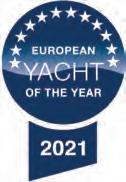


CONFIGURE YOUR OWN BAVARIA ONLINE

WWW. BAVARIAYACHTS .COM
BAVARIA YACHTS manufactured its first powerboats in 2001. Like the sailing yachts, they immediately became successful due to the quality and unrivaled price performance ratio. Seaworthiness is a non-negotiable quality on a BAVARIA. You don’t only drive safely, you also feel secure when moving around on these boats.
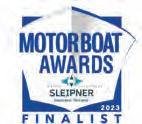




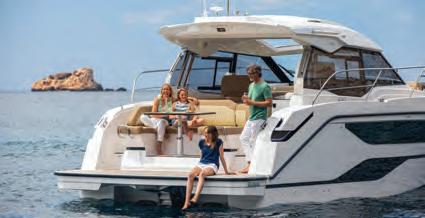






VIDA 33 | SR33 | SR36 | SR41 | VIRTESS 420 | S45 | R40 | R55 FEEL THE QUALITY.... EXPERIENCE THE VALUE See Your Local Dealer for Bavaria Yachts Sail & Power www.cruisingyachts.net West Coast (888) 743-4620 | www.sjyachts.com East Coast











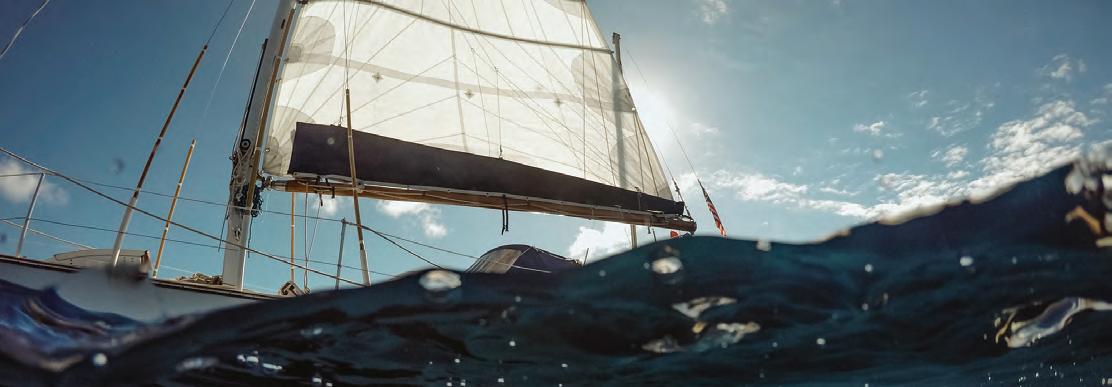



• Spring 2023 View From The Bow 12 Another Way: The Importance of a Good Vacuum 32 By Tania Aebi By Bob Bitchin Whine of the Ancient Mariner 35 By Shane McClellan The Dominican Republic is More Than Just Luperon 50 Reader’s Favorites: Best of the Southeast 98 By Mike Worley Rebuilding a Tayana 37 57 Clipper Cove and the Real Treasure of Treasure Island - By Marissa Neely 128 By Robin Stout Noodling with LIAHONA 144 By Jeff Werner Captain’s Tips: Celestial Navigation 72
42 TEN YEARS, THREE CHAPTERS OF SAILING 64 TRAVELLING THE GREAT LOOP
#42
FEATURES
136 ARE YOU READY 4 DEATH’S DOOR AND OTHER NOR THERN BADGER ADVENTURES?



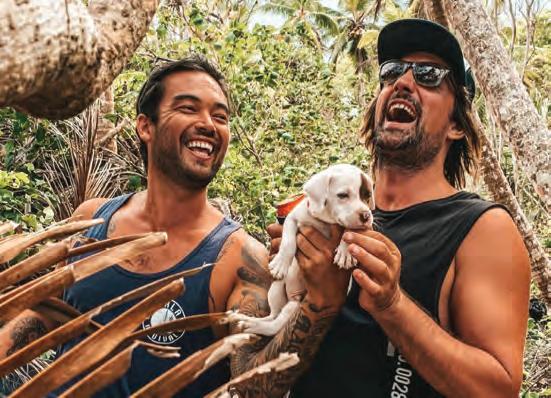

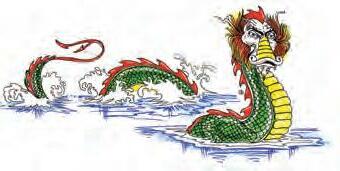
Caring For and Maintaining Your Water Maker 104 Dogs Aboard 112 84 UNDERWAY 104 LIFESTYLES 120 VIRTUAL CRUISINGPARLAY REVIVAL DEPARTMENTS 150 I FOUND IT AT THE BOAT SHOW Talk of the Dock 102 Piracy Report 30 Scuttlebutt News 17 Book Review 142 Share the Sail 168 Advertiser Spotlight 178 Bosun’s Bag 171 Giant Crossword Puzzle 175 Boat People 180
7862 W. Central Ave., Ste. F, Toledo, OH 43617
Ph: 877-775-2538 | Fax: 877-373-8177 www.latsatts.com

ON THE COVER
PUBLISHER
Erik Kyle erik@kylemediainc.com
OFFICE WINCH
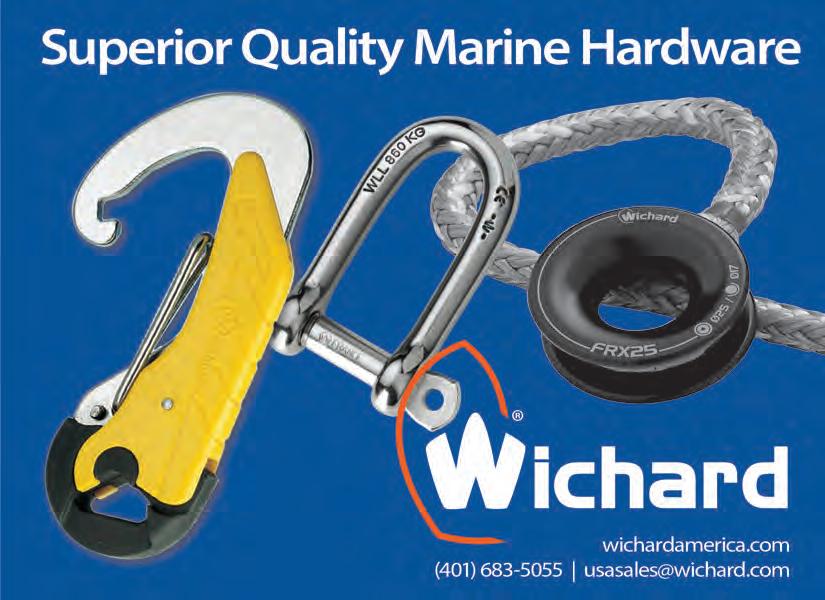
Mindy Leppala mindy@kylemediainc.com
VP BUCK STOPS HERE DEPT. Joy McPeters joy@kylemediainc.com
SUBSCRIPTION “QUARTERS” MASTER
Cheri Chalfin cheri@kylemediainc.com
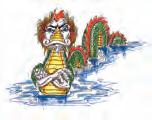
DEEP SEA DESIGNER
Sonia De Leon design@kylemediainc.com
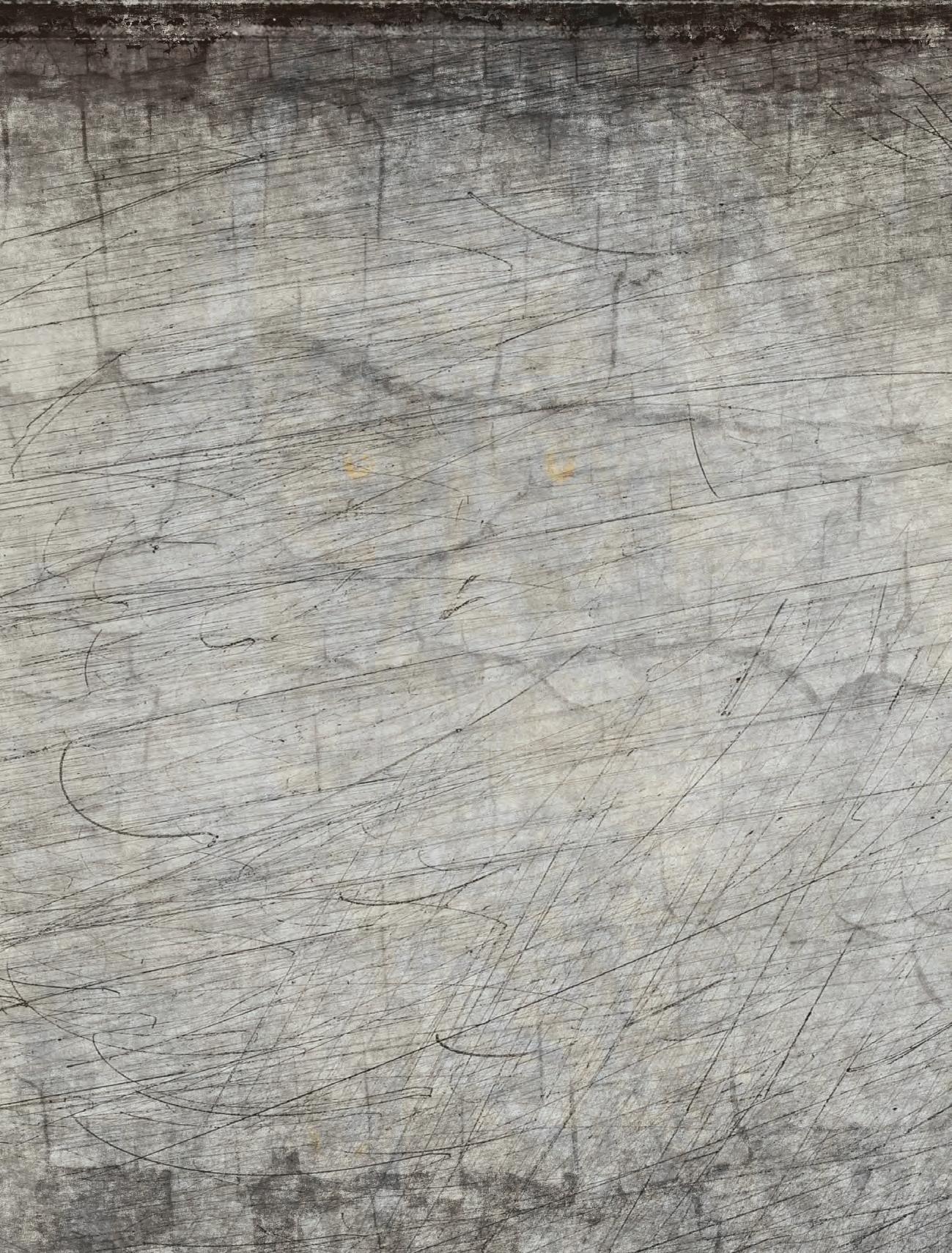
PEOPLE WHO HELPED US CREATE THIS ISSUE
Glenn and Crystal Adams
Jeff Werner
Marissa Neely
Shane McClellan
Sarah Bowlin
Mark Reid
Teri Miller
Mike Worley
Tania Aebi
Zuzana Prochazka
Robin Stout
Jessie Zevalkink-Yates
ASSOCIATE PUBLISHER

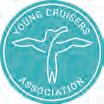
David Levesque david@latsatts.com
ADVERTISING SHERPA Kevin Murphy kevin@latsatts.com
“PROFESSIONAL” GRAMMAR GURU
MM Frances Krutsch editorial@kylemediainc.com
WINDOW WASHER EMERITUS
Bob Bitchin bob@latsatts.com
PEOPLE WHO DIDN’T HELP US WITH THIS ISSUE
George Costanza
Sam Malone
Les Nessman
J.R. Ewing
Alfred E. Newman
The Knights who say “NI”
Indiana Jones
Mr. T
Anyone named Brad Clem Kadiddlehopper
Cheech & Chong
Sgt. Pepper
Latitudes & Attitudes Division of Kyle Media, Inc. (ISSN 2767-8954-PRINT / ISSN: 2767-8962 On-Line) (USPS 011-950) is published quarterly by Latitudes & Attitudes 7862 W. Central Ave., Suite F, Toledo, OH 43617. Periodical Postage paid at Toledo Ohio, and additional mailing offices. Copyright 2022 Postmaster: Send address changes to Latitudes & Attitudes, 7862 W. Central Ave., Suite F, Toledo, OH 43617


One of the most popular Sailing Channels out there, Parlay Revival was also the winner of the Best YouTube Channel at the recent International Cruisers Awards in Annapolis.

SUBSCRIPTION INFORMATION
Latitudes & Attitudes
7862 W. Central Ave., Suite F, Toledo, OH 43617
SUBSCRIBER SERVICE
877-775-2538 ext 500 latsatts.com/magazine
PRINTED IN THE USA
WE SUPPORT BOATING




VIEW FROM THE BOW FROM THE ASSOCIATE PUBLISHER
To Everything Turn, Turn, Turn….


As we turned our calendars to 2023 and turn our attention to the coming spring season, we also turn the page to the next chapter of the incredible legacy that is Latitudes & Attitudes. Most anyone following this publication knows Bob & Jody turned over ownership to Erik & Melanie Kyle of Kyle Media a year ago as of the release of this issue. I, for one, always just thought Bob would go on forever as Publisher, directing magazine after magazine of incredible cruising content and saucy humor with his own brand of shenanigans. But it’s been said, “There is nothing permanent except change,” so this too shall change, and the season will turn.
This is now our fourth issue since taking over publishing Lats & Atts, and we must say this issue is the one we’re most proud of so far. You see, the industry is changing, and so is the publishing world as well. I’ll address the latter first; I’ve heard it mentioned that print is fading and digital is the way to go. Let me be clear on this: Print is more alive than ever and the extraordinary content pouring off the pages of this magazine is proof. Need more evidence? Go visit a Barnes & Noble or Books-a-Million (At either of which you can pick up a Lats & Atts copy) and check out the end-to-end magazine section. Astonishing titles still entertain and inform the world. Make no mistake, it’s very true that digital is a huge part of the publishing world and serves as an essential extension of print publication. And digital is most definitely required for Lats & Atts readers cruising the globe without access to the print version. And with more younger (of mind, body, and spirit) cruisers taking up the mantra of living life before it’s over, the option to access content digitally is important.
I mentioned the industry is changing. Oh Hell yes, it is, and the excitement is infectious! Amazing what a pandemic will do to awaken the dreamer in all of us. Our industry is alive and energized by the number of new boaters and cruisers finding more time to be on the water or simply finding boating for the first time. And what Bob & Jody started in 1997 is now more relevant than ever. Latitudes & Attitudes serves as a manual to the cruising lifestyle. A how-to, must-read, dreamers guide. Where else can you find inspirational, rich content directly from the cruisers themselves? We hear all the time how our articles helped someone untie their dock lines and just go. Or, how the insight of others gave a cruiser the courage to go beyond their comfort zone. It’s a thing for sure, and Latitudes & Attitudes is alive and well.


And so is Bob. He even got a new hip from Santa this past Christmas. And while he’s spending much-needed time around his ranch chasing Jody, he’s still writing for us and sharing his Bob Bitchin brand with the audiences, new and old. So as you turn each page of this Spring issue, be sure to stop on page 35 and check out his new column, the Whine of the Ancient Mariner. We know you’ll love it. We’re also excited to be adding more content that our readers have asked for, such as Great Lakes cruising, DIY, and expanded information on cruising destinations and marinas.
So, thank you for letting us be a part of your world, wherever you are, in print and digital.
Cheers
12 Latitudes & Attitudes | #42 Spring 2023

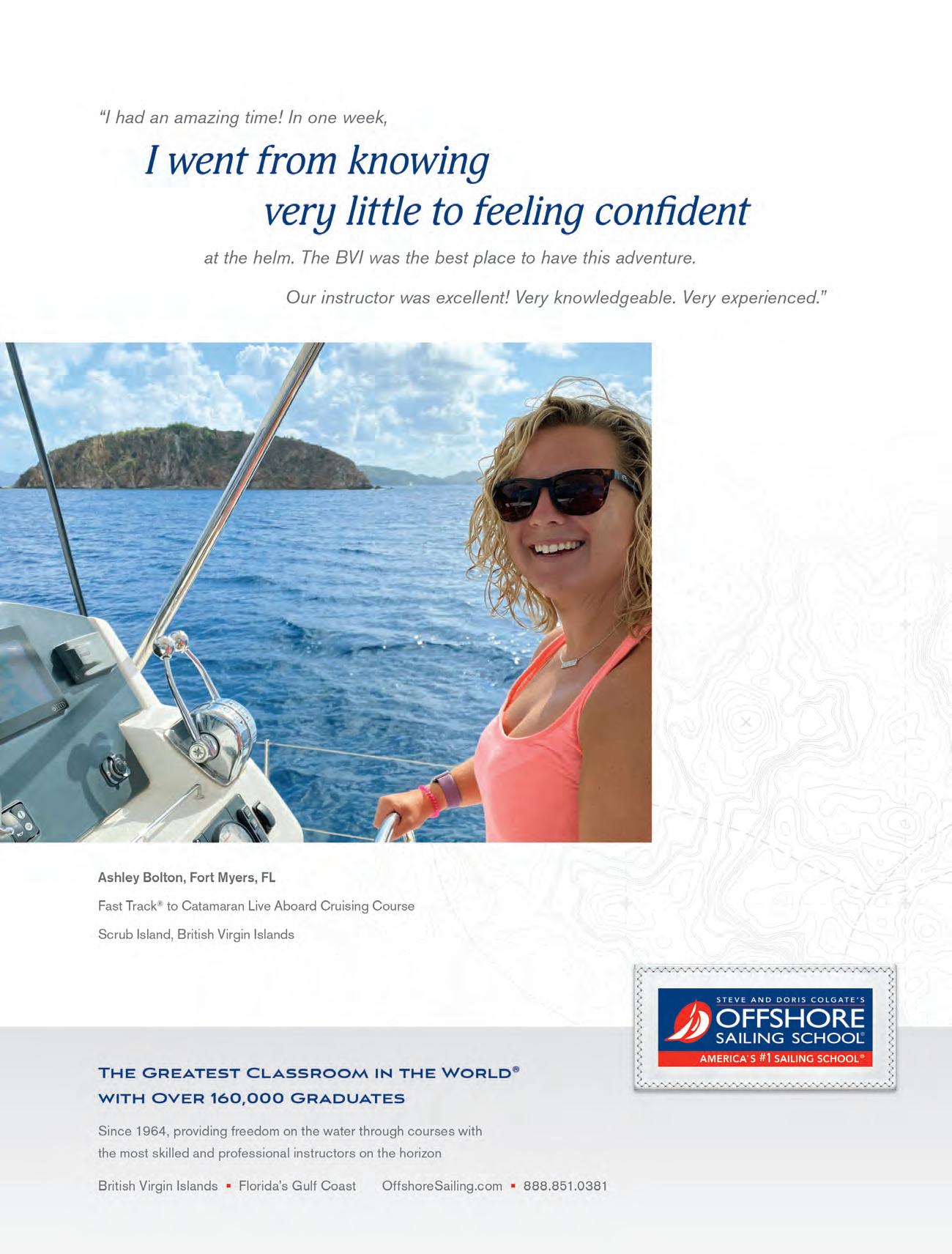

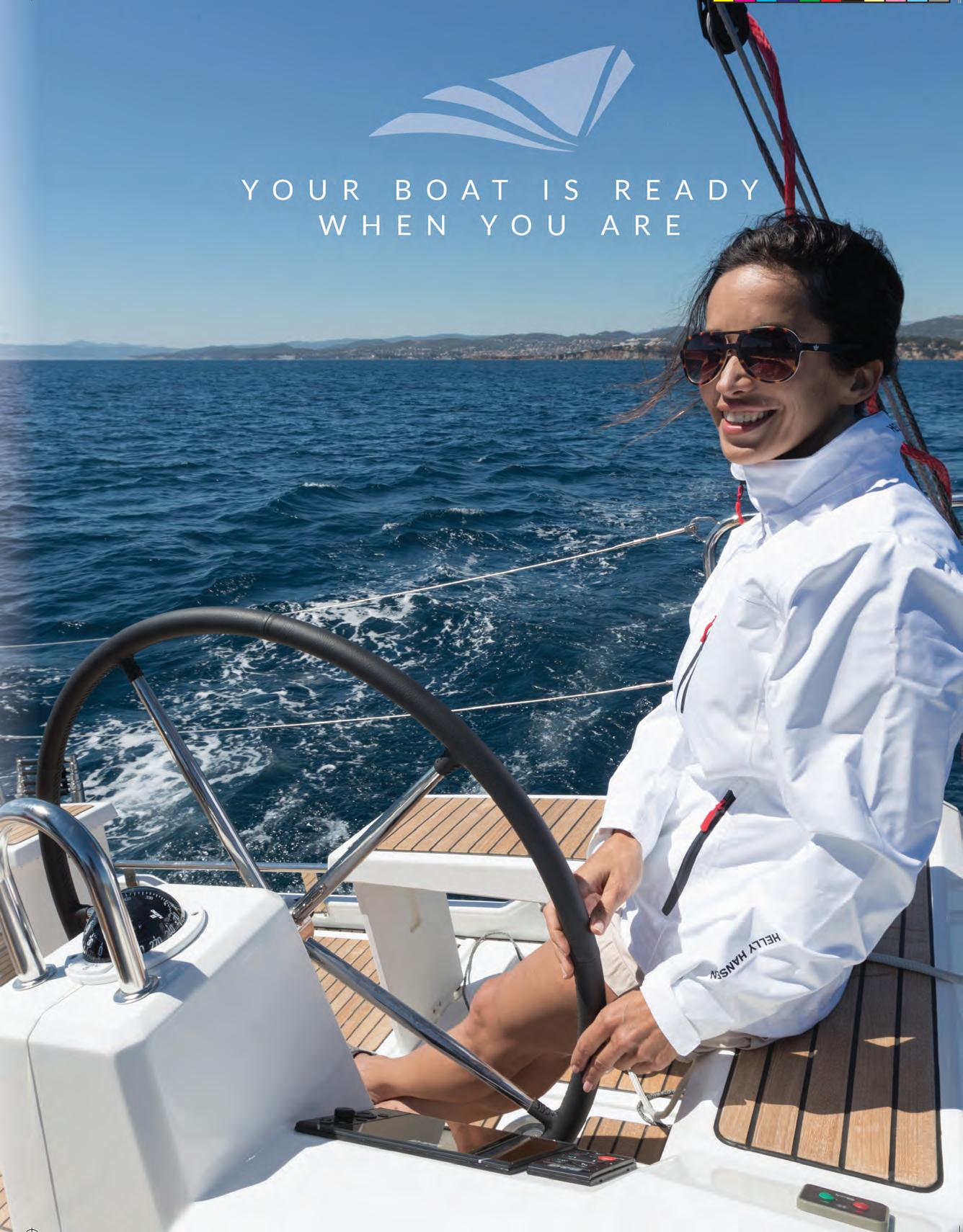

Issue #42
Atts Lats Scuttlebutt &
If It’s Gonna Happen, It’s Gonna Happen Out There
All the News That Fits Between the Sheets Spring 2023
Sailing Convention for Women Returns To Newport Beach April 1

After a COVID hiatus, the Sailing Convention for Women is back with full sails and expanded learning opportunitiesslated for Saturday, April 1, 2023. Held at Bahia Corinthian Yacht Club in Corona Del Mar, California, the event marks the 33rd year offering beginner-to-experienced women sailors a chance to learn and enjoy camaraderie and fun through an all-day series of on-the-water instruction and shore-based workshops.
“The Convention gives women an opportunity to meet other women sailors, discuss options for cruising, racing and recreational sailing, and find out about women’s sailing organizations in their area, as well as instructional programs available.” Described by founder and producer, Gail Hine, “We have something meaningful for everyone.” One attendee claimed, “The energy level and networking opportunity at this convention is amazing!”
Boat Owners Association of The United States (BoatUS) has sponsored the event for nearly three decades.
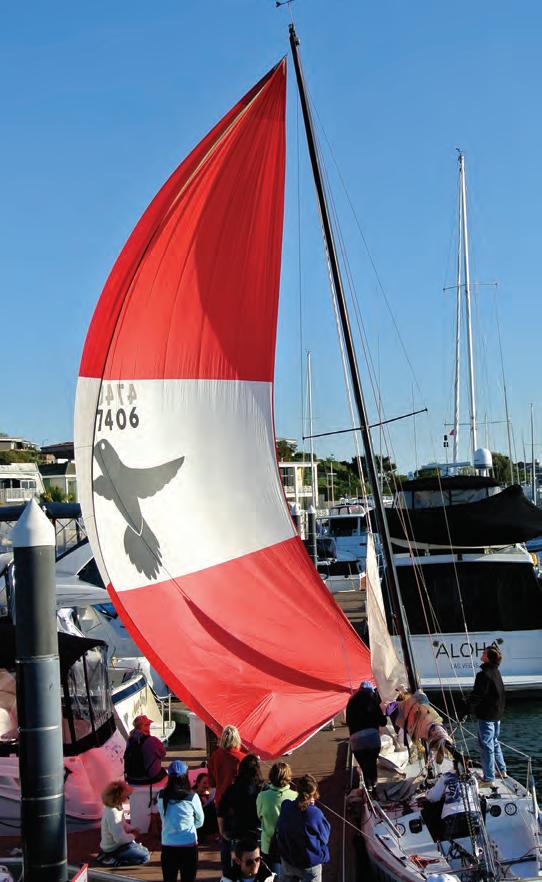

Some of the workshop topics include Suddenly Singlehanded, Steer with the Sails, Intro to AIS, Avoid Mistakes & Mayhem, Prepare for Passage Making, Basic Navigation, and the ever-useful, Docking. Three levels of on-the-water sailing instruction are also offered.
The day begins at 8AM and runs until 8PM, starting with a generous breakfast to fuel the sessions of morning instruction and workshops. A buffet lunch will launch sailors into an afternoon of continued learning opportunities, followed by a spirited happy hour. The evening is capped with dinner and guest speaker Marie Rogers, who in 2019, became the first black woman to serve as commodore at the historic Los Angeles Yacht Club, and likely one of the first to helm a major U.S. yacht club.
Rogers, who will share stories of inspiration and passion for sailing, is the 2021 BoatUS/NWSA Leadership in Women’s Sailing Award honoree and an avid racer. She completed the 50th Transpac and races today along the West Coast aboard Marie, a Nelson Marek 55, with her husband, Bill. Closer to home she’s at the helm of her J-29, Rush Street.
For more information on the convention, contact Gail Hine (gail@sailingconventionforwomen.com).
www.LatsAtts.com 17
77-YEAR-OLD TALL SHIP SENT TO SCRAP
A three-masted tall ship has been sent to the scrapyard after almost eight decades on the water.
The Earl of Pembroke was built in Sweden 1945 as Orion and was used to haul timber in the Baltic Sea until being laid up in Denmark in 1974.
The 44.2-meter ship was later moved to the UK in 1980 where a full restoration began in 1985, with movie apperances in mind. The restoration saw the rig changed from a schooner to a barque type, to more closely resemble Captain Cook’s HMS Endeavour. The ship was also renamed to Earl of Pembroke, in homage to HMS Endeavour‘s original name.
The ship went on to feature in numerous movies, including Treasure Island, Shipwrecked, Count of MonteCristo, Alice in Wonderland and Cloud Atlas. It also appeared at a number of festivals, such as the Southampton Boat Show and Liverpool Maritime Festival.

The vessel was resold by Metaco LLP in 2017 to Scarlet Sails Ltd.

In recent years, the vessel had been docked in the Den Helder in Holland. However, according to local Dutch media, the current owners could no longer meet the costs of the vessel’s maintenance.
A post on the Facebook page of Dutch shipbreakers Hoeben RDM Schepen confirms the vessel was scrapped in nearby Kampen on December 2, 2022.

18 Latitudes & Attitudes | #42 Spring 2023 LEGENDARY
Remembering R. Berkeley George

Born: June 3, 1935
Graduated: South Pasadena High School in California 1953
Graduated: University of Southern California 1960
Worked for Forespar – General Manager of Forespar
Rigging
Founded US Rigging after leaving Forespar

Founded RBG Cannons

Passed Away September 30, 2022

www.LatsAtts.com 19
Lats & Atts Partners

Earn your Safety at Sea Certification while supporting veterans with disabilities!
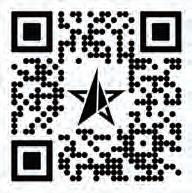


We’re stoked to announce our new partnership with Warrior Sailing, an incredible organization dedicated to training veterans with disabilities in the sport of sailing and sailboat racing. And they offer an opportunity to get your Safety at Sea Certification while supporting veterans with disabilities!
We all know sailing is a unique sport that allows individuals of various disabilities to participate and compete together alongside able-bodied peers. Warrior Sailing’s development of adaptive equipment and instructional techniques accommodates veterans with a variety of disabilities, from those with amputations and visual impairments to survivors of brain injuries, cancer, and post-traumatic stress. For veterans with disabilities, sailing provides physical, mental, and emotional therapy. Likewise, Warrior Sailing provides a natural outlet for veterans to express two of their most natural assets: teamwork and competitive drive, consequently having a beneficial impact on their overall quality of life.
20 Latitudes & Attitudes | #42 Spring 2023
with Warrior Sailing

Since its inception, Warrior Sailing has facilitated Basic Training Camps in locations across the country, serving over 600 individual veterans with disabilities. Additionally, Warrior Sailing has facilitated Keelboat Certification Courses with over 150 graduates earning their credentials. And new this year, they went through the process of becoming credentialed to offer the ASA 103 Coastal Cruising Certification and are now excited to offer their US Sailing sanctioned, International Offshore Safety at Sea with Hands-on Training certifications to the general public!
For the past several years, Warrior Sailing has offered these courses internally to Warrior Sailing participants only as part of their mission to provide maritime education and outreach for wounded, ill, and injured service members and veterans. They are now extending these courses to the broader sailing community to raise awareness of the organization, help fund Warrior Sailing initiatives, and of course, provide world-class safety training for cruisers and racers alike.
Scan the code to the right or visit www.warriorsailing.org/safety-at-sea for more information.
Lats & Atts is excited to help promote and bring awareness of Warrior Sailing to our global community of cruisers!


www.LatsAtts.com 21

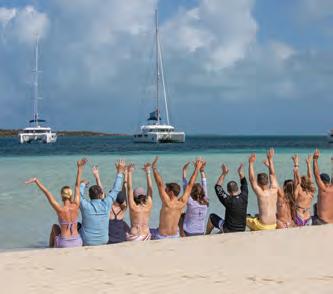

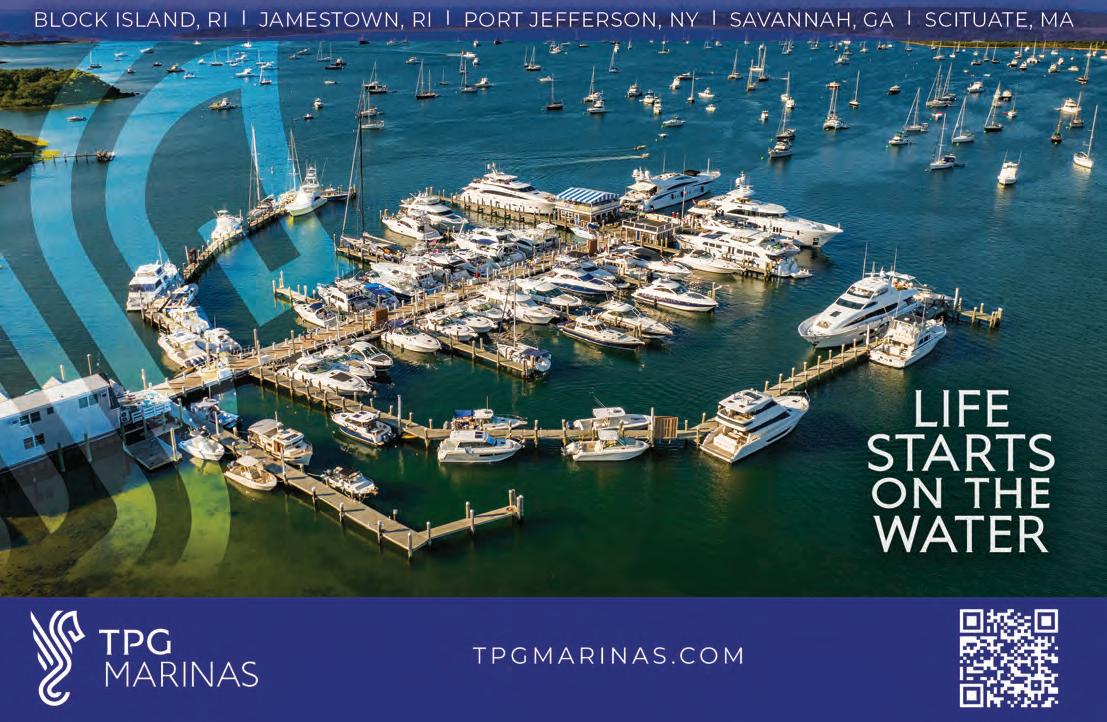
22 Latitudes & Attitudes Share the Sail November 4-11, 2023 Abaco Islands, The Bahamas Bring your friends, bring your neighbors! latsatts.com/Bahamas Booked Already Best Possible Use of Your Tax Return BOATS Join us for Share the Sail*

Sail on Charley Morgan (November

17, 1929-January 7, 2023)
Charley was an icon in the world of sailing from the late 1940s, designing fancy yachts for millionaires and small yachts for those of lesser means. Sailmaker, racing sailor, yacht designer, boatbuilder, and America’s Cup designer and competitor; Charley was accomplished in all aspects of sailing.

His entrepreneurial spirit and business education prompted him to try his hand at sail making. In 1952, he opened the doors of Morgan Racing Sails in St. Petersburg, Florida. Though involved in sail making, he continued to design yachts, and in 1960 he was commissioned to build a 40-foot fiberglass yawl named Paper Tiger. She won the 1961 Southern Ocean Racing Conference championship title her first year in competition.
In 1965 Charley founded Morgan Yacht Corporation, the company that made him famous. The company delivered its first sailboat in September 1965, and by December had such a backlog of orders that they temporarily stopped accepting them. At the end of 1968, he sold his
Cont’d on page 26
24 Latitudes & Attitudes | #42 Spring 2023

company, then turned to designing, financing, and building the wooden 12-meter Heritage which he campaigned in the 1970 America’s Cup trials.


In 1972, Charley foresaw the charter boat market’s need for a spacious cruising sailboat. He created a center cockpit sailboat with a spacious salon and aft stateroom and christened it the Morgan Out Island 41. The charter companies loved the boat—and so did mom-and-pop cruisers around the world.
In 1984, Catalina Yachts purchased Morgan Yachts and introduced a redesigned Out Island 41 Classic. Catalina produced the model from 1986 until 1993. More than 1,000 Out Islands are still afloat today.
He was an active member of the CCA at both the club and Florida Station level, having served on the board of governors and on the technical advisory board developing the CCA Rule.
While he had a long, productive life as a racer, sailmaker, yacht designer and builder, an aviator, and a painter, most of all Charley was a kind, giving man and a friend to many. He made his mark on sailing across the spectrum of the sport, introducing many to cruising in Morgan yachts, and designing and building the Morgan Trawlers as a foray into distance cruising. He had 52 sailing yacht designs to his name.
Charley Morgan was truly a sailing legend and will be greatly missed.

26 Latitudes & Attitudes | #42 Spring 2023
Cont’d from page 24



28 Latitudes & Attitudes | #42 Spring 2023

Active Report PIRACY
From the International Commercial Crime Services A Narrative of the Most Recent Attacks


JANUARY 4, 2023: 0555 UTC: POSN: 01:17.8N – 104:10.5E, SINGAPORE STRAITS.
Around three to four robbers, in fishing boats, boarded a barge under tow. It is understood that some of the scrap metal transported by the barge was stolen. Incident reported to Singapore VTS and a coast guard boat responded. All crew members safe.
JANUARY 9, 2023: 0425 UTC: POSN: 12:01.5S – 077:12.0W, CALLAO ANCHORAGE, PERU.
Four robbers armed with knives boarded an anchored general cargo ship via the anchor chain and broke into the forecastle store. Duty watchman on routine rounds was threatened with a knife as he approached the forecastle and he immediately notified the bridge. Alarm raised, ship’s horn sounded, and crew mustered. Hearing the alarm and seeing the crew alertness, the robbers escaped without stealing anything. Local authorities informed through the agents.

30 Latitudes & Attitudes | #42 Spring 2023
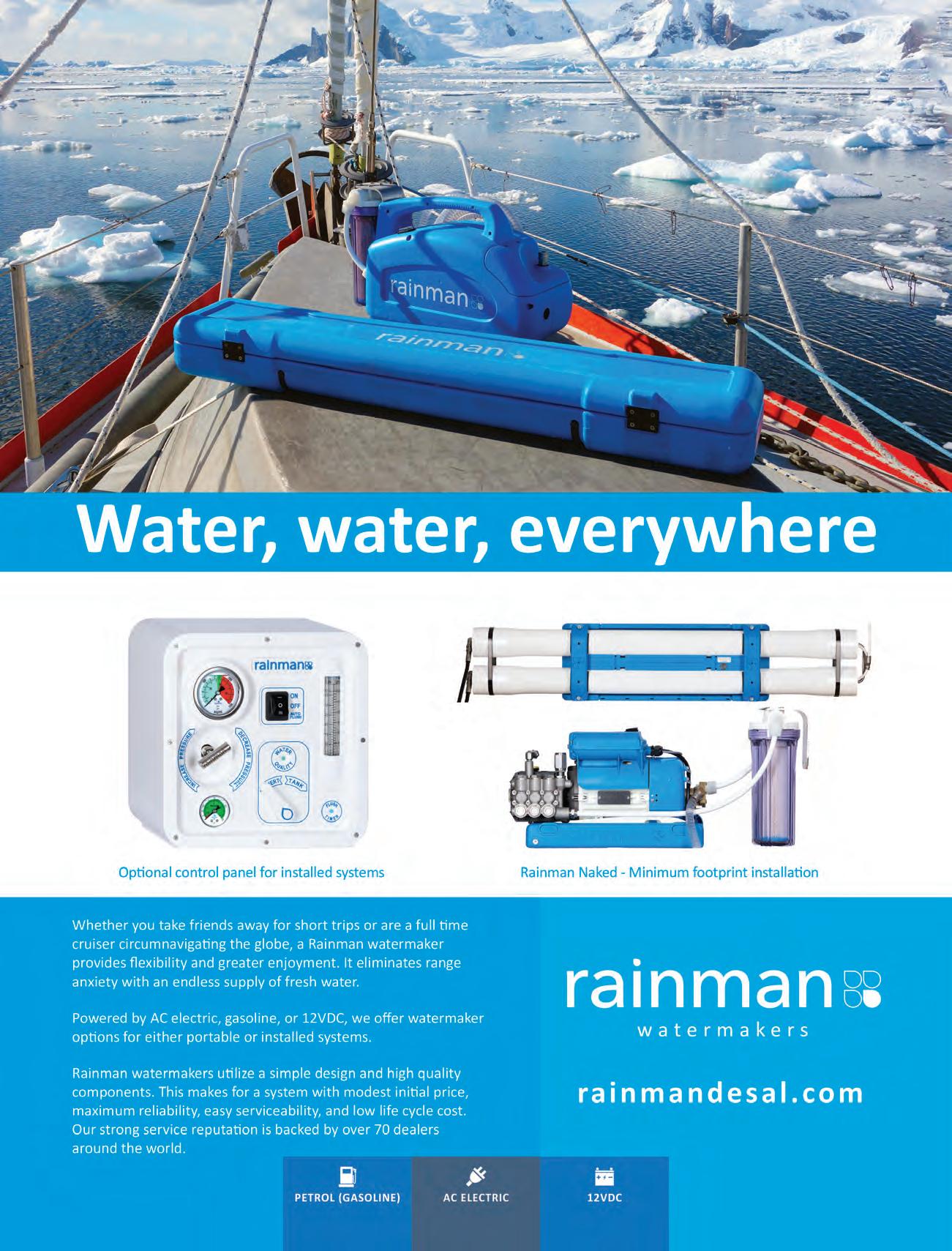
Another Way: THE IMPORTANCE OF A GOOD VACUUM
By Tania Aebi
Pictures speak. Some more than others. There’s one of me taken midway into my sailing life, vacuuming a salon with a wand attached to a central vac system. I look really happy, like I love vacuuming, which I do. And, being able to vacuum a boat so easily was heavenly.

At the time, I was scouring Trinidadian marinas and yards in search of a boat with which to have a year-long sailing adventure with my teenage sons. Anything that fit the budget was dirty, moldy, and needed a lot of work. An acquaintance had made his large Hylas available to me and a friend to return to after long, sweaty days of climbing ladders, crawling around dank cabins, and pulling up floorboards revealing neglect. This boat had all the generator-facilitated creature comforts — AC, overflowing ice maker, galley appliances — even a bread machine. But, the single most exciting thing was discovering it also had central vacuuming. I used it over and over again, every evening erasing memories of another day’s worth of grime and disappointment.
The right boat ended up being much cleaner, found in Sint Maarten several months later. But still, the Hylas picture became a tease preceding the adventure on my own 36-foot boat, crossing the Caribbean and Pacific with my sons, sand, hair, spills, grit, and a lame, old-school, battery-operated dust buster.
Some people can’t live without a Leatherman or Swiss Army knife. I rely on vacuum cleaners to maintain cleanliness and order. When I went to sea as a young girl, I was pretty emotionally fragile. The sea toughened me up, teaching me a lot about what was and wasn’t important, and the need for control over something within my control rose to the surface in those years and stayed there.
An analyst could legitimately tie this neurosis back to years on boats, fighting messes with dustpans, brushes, damp clothes, and buckets while wishing for a vacuum. Boats are containers full of stuff separated by cracks, crevices, awkward spaces, and bundled wires where filth loves to settle. Hours and hours and hours and hours have been spent corralling hair, dust, dander, sand, and assorted particles with this primitive equipment. Many tears have been shed when a thorough cleaning was immediately sabotaged by another mess — a spilled bag
32 Latitudes & Attitudes | #42 Spring 2023
of flour, or worse, sugar. One of the worst ever was when a particularly obnoxious wave carried a pot of curried chicken off the stove, splattering all over the salon, down through the floorboards, and into the bilge.
Way back when I first met Bob and agreed to start writing this column, it was called “There Is a Difference.” Bob envisioned monthly reminders about the differences between males and females, and I ran with that for about three issues until running out of ideas. Before that happened, I wrote one about hair, based on the assumption females tend to have more hair. It was a stretch since men, like Bob, are pretty furry, too. Regardless of origins, hair on boats ends up in bilges and sump pumps, snagged on engine parts, and as dust bunnies gathering stem to stern. Even if the hair output is controlled by brushing overboard and retaining the locks, it floats on air currents everywhere. But, the main difference here comes down to those who care about these messes and those who don’t, and if you do, how to not let it get out of hand.

Thanks to early lessons, I matured into fastidiousness. Some engine failure-related PTSD began to be managed by believing and acting on the principle that a clean engine is a happier engine. In pursuit of that, I’ve spent countless hours scrubbing, wiping, brushing, and wishing for vacuums with good nozzles that could fit between the injectors, around the starter and alternators, and the nooks and crannies of an engine room. I’ve fantasized about being able to reach into the bilge, down into lockers with the crevice tool, run the brush across wiring snarls and harnesses, sucking up all the grunge that returns almost as fast as you clean.
At the time, most of my generator-less sailing life took place far from docks with power. This was just the way things were. An unforgettable cleaning win took place in another Caribbean yard when a friend loaned me his wet/ dry vac, and with an extension cord, I was able to suck every single wire, hose, pipe, line, and trim. Being able to follow up with a wet rag that didn’t immediately get stiffened by smearing dirt was downright thrilling. Changes in the last couple of decades include the profusion of information on the internet. Google the words “vacuums on boats,” and you get over twenty million results topped by the Ten Best lists, blogs, and videos related to boats and vacuums. Talk about a rabbit hole. No need to go there, I know what I know. Handheld vacs — with batteries that took forever to charge and no time at all to die — sucked at sucking. As of the past several years, the lithium-ion battery has been a game changer. This long-awaited battery technology has made decent, cordless sucking available on land and sea for the most modestly equipped households and cruisers, and there’s sure to be a decent choice available for whichever charging platform you’ve committed to.
Guys like my adult sons, who grew up with me and should know better (instead of mocking my outspoken reliance on vacuum cleaners), will sit around talking about tools, which saw or drill works best, and nowadays, which battery operated platform deserves their commitment. People will spend small fortunes on a good saw, planer, grinder, whatever, and never give the desirability of a good vacuum cleaner a second thought, or appreciate that vacuums, unlike other power tools, are supposed to suck a lot. We want that. I strongly believe more people
would appreciate vacuuming if they had good machines. When I brought the last boat I owned up to New England, I was finally close enough to home to drive to her with a vacuum cleaner. My dream tool, with every appropriate accessory, accompanied me every time she was somewhere dockside with power. Let me say it again: this was, literally, a dream come true. Honestly, if I had vlogged about the adventures lived aboard her, the vacuum cleaner would have had a starring role. Need to scrape away sticky silicone bits from around chainplates? Relish that sucking sound. Need to get rid of the frayed frass or sand accumulating between floorboards? Get out the crevice tool. The engine remained spotless and was almost always gratefully reliable.
A cursory dip into the world of boating blogs and vlogs will reveal the hardest part of every single sailing adventure is the beginning: making the decision to go, pulling together the pieces that make it happen, then leaving. A journey of a thousand miles begins with a single step. You can’t know how much the universe will conspire to help you achieve a goal until you first take the steps to initiate the journey. These are age-old words explorers, immigrants, and travelers have learned about from first-hand experience, and all without the tools we have at our fingertips nowadays. And here’s a footnote to all this history and my final word on the matter: any journey is enhanced by the right equipment right from the getgo. On a boat, that’s a good vacuum.
ABOUT THE AUTHOR
In May of 1985, an eighteen-year-old Tania set sail from Manhattan, New York, and became the first American woman and youngest sailor at the time to circumnavigate the globe. Upon her return to Manhattan in November 1987, Tania had visited twenty-three countries and sailed 27,000 miles. Nowadays, Tania runs charters and delivers boats all over the world when she’s not at home helping with her granddaughter, battling snow in the winter and weeds in the summer, or dreaming about writing her next book.
www.LatsAtts.com 33

Associate Publishers Note:
This new column, Whine of the Ancient Mariner, is where you’ll find Bob Bitchin’s writings as he finally settles (hopefully) into semi-retirement. For this inaugural piece however, we’re reprinting an article Bob wrote in 1997 shortly after parting ways with his beloved The Lost Soul. He’s been busy lately working out the kinks in his new bionic hip and until he’s fully ready to run circles around the rest of us, we figured we’d give him a free pass on writing anything witty and insightful. So enjoy, the Whine of the Ancient Mariner.
Whine of the ancient mariner
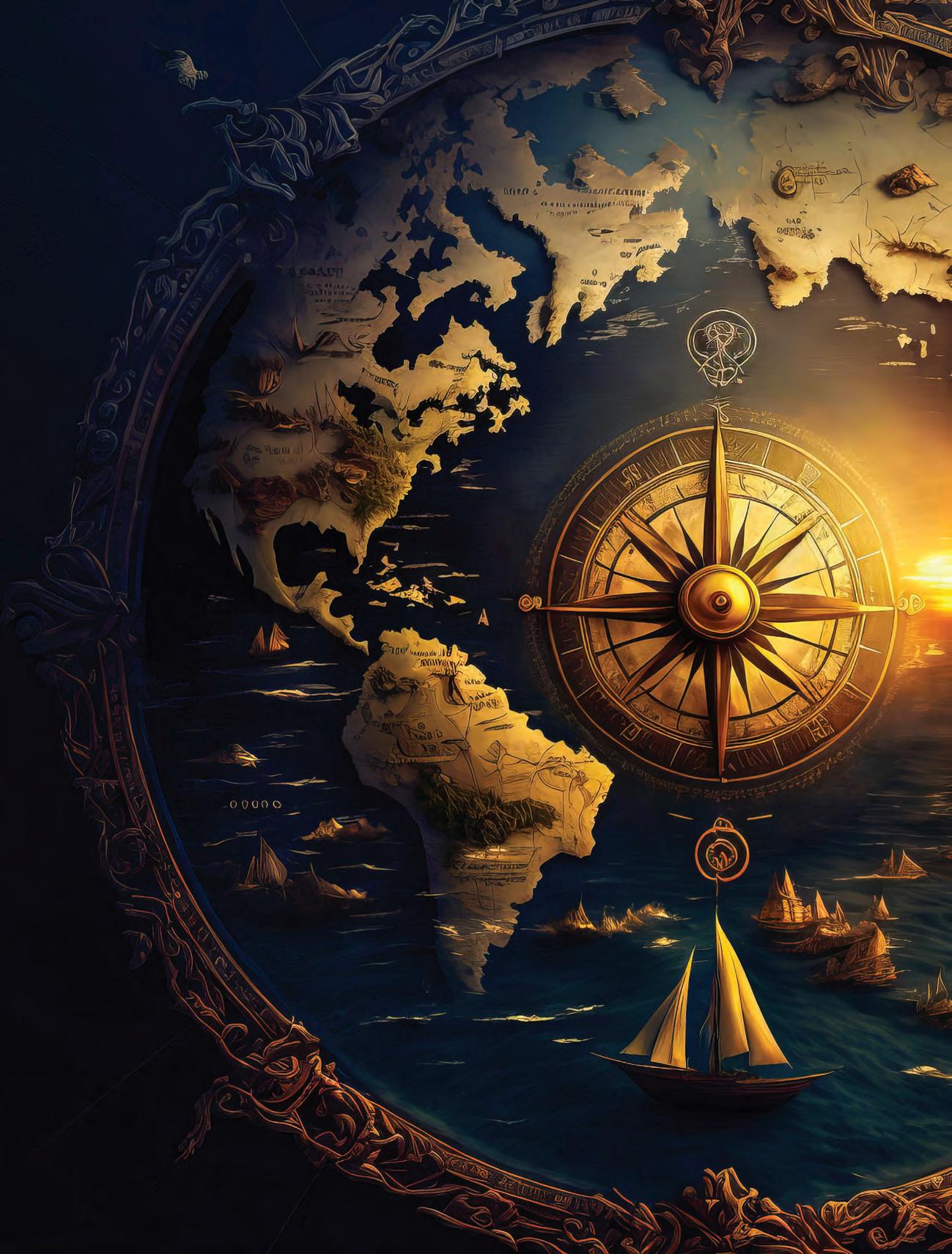 By Bob Bitchin
By Bob Bitchin
I finally made one of the toughest decisions I have had to make regarding my boat, and it took me over a year to make it.
Every boater goes through the same process. You’ve got a boat that you’ve had for a while, and you know every little defect in the darn thing. On The Lost Soul, after 14 years and over 75,000 miles, there was no spot on the boat where I could stand and not see something that I wanted to fix or change. What was odd was that other people would come aboard and “ooh” and “ahh” all over her, but all I could see was what needed to be fixed or changed. And so it was that, a little over a year ago, I talked Jody into putting her on the market and starting to look for another home.
Since I have lived aboard for almost 30 years, I am pretty particular about what I want in a boat. I know all the little things that make a boat a home. We put her on the market and started looking. It didn’t take long until we found there were no boats like The Lost Soul

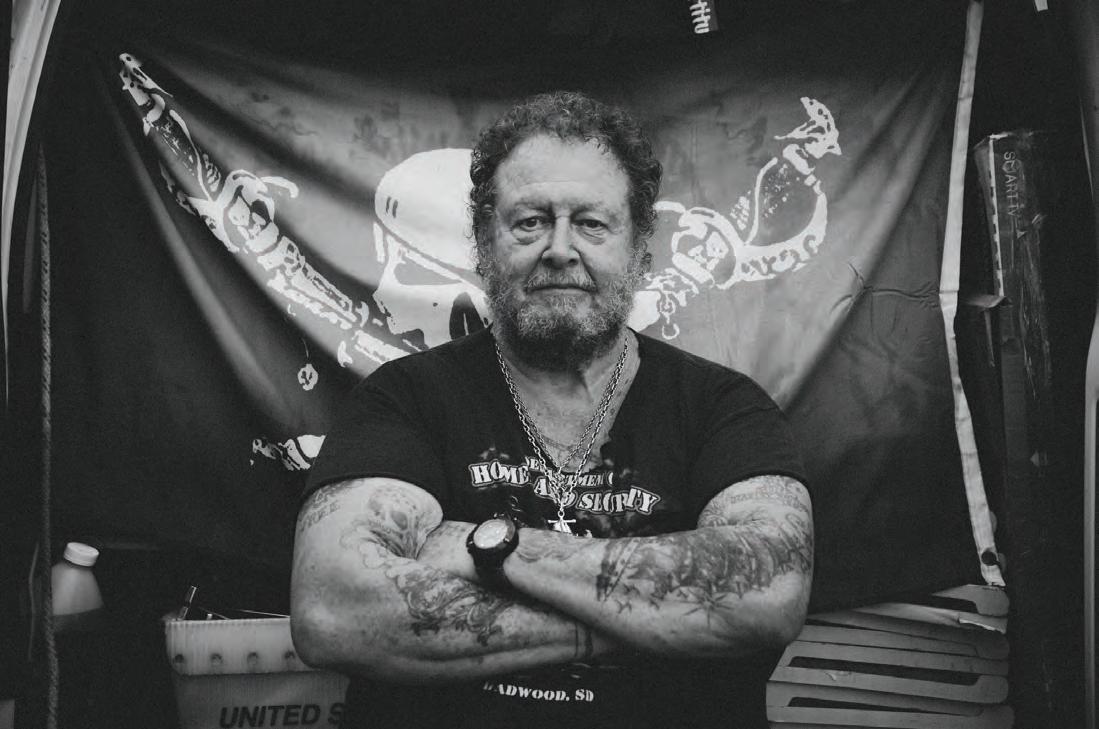
Whine of the Ancient Mariner 36 Latitudes & Attitudes | #42 Spring 2023
sv Lost Soul
being built anymore. Well, there could be, but the cost was way prohibitive. It would have to be custom-built, and after talking with my friend, Bob Perry, I realized I couldn’t afford it. So we looked at what was available in something we could afford. At every boat show, we would walk the docks, and I have to admit I did find a few that we could have lived on. The Hylas 54 and the Moody were in contention, as well as the new Gozzard. They were all in the type of boat we were looking for; large enough to live on, easy to handle, and strong enough for a world cruise. And each time, after we’d sit on these great new boats, we would think, “Yeah, we could do this.”
Sitting on a new, well-laid-out boat takes your worries and throws them into a bait bucket. You don’t have to worry about if your tanks might start leaking. The Lost Soul is 23 years old and has black iron tanks. We already had to fix two of the four tanks!

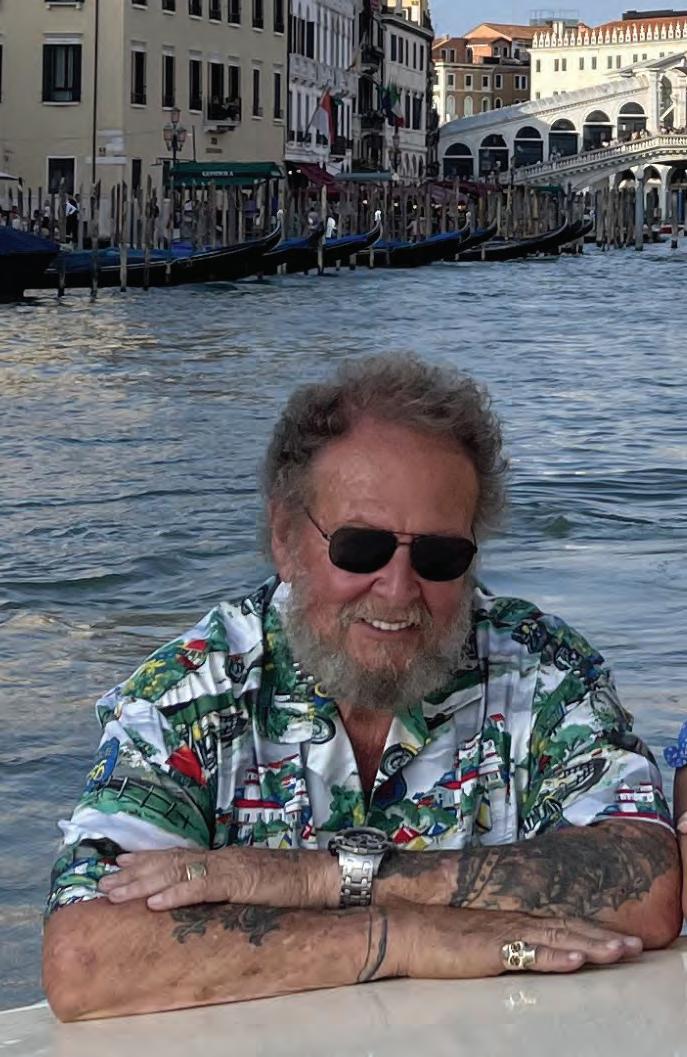
And the wiring. Look at it! Beautiful color-coded wiring, with every wire in its right loom, and each one labeled and tagged, with beautiful new 12 volt and 110 panels, with cute little lights that glow when the switch is activated. Compare this to our mish-mash of wiring that has been done and redone 20 times, sometimes at sea, and always in a hurry. Every wire is red because we got a special on 100 pounds of red wire back when we were first refitting the boat. Lots of dead wires, and wires leading nowhere. And then walk the new teak decks. They feel so firm underfoot. The caulking is perfect, and they use the new pressure-applied system with no screws to work loose and create leaks. Not like our decks, which are a tad on the spongy side, and caulking that has been redone more often than Tammy Fay’s makeup and looks just as bad.
And then there is the fact that they are dry! The Lost Soul has only a couple of leaks, but I gotta tell ya, I have traced them for almost 15 years and have been unsuccessful in locating the source of these mystery leaks.
And then the show is over, and we head home. We board our baby, and it is like walking into a womb.
www.LatsAtts.com 37
Bob & Jody
She surrounds us with warmth, and she feels solid, and every little nook and cranny has a memory and a story to tell. It is our home. The others are more like hotels to us.
And so we sat, and we thought. Just what are the problems that we want to get rid of in order to be happy? A list was started. As we added to that list, we started to feel relieved. All of a sudden it was like we’d made the decision. Everything we liked about the other boats was listed first, as what it would take to make our baby have the same “good things.” We listed everything that was wrong, no matter how slight, and then we tried to figure out what it would cost to make our true love in as good condition as a new boat.
And so it was; we started on the list. The major things that actually put fear into our hearts weren’t all that bad (in theory!). We wanted easier sail handling, so we ordered Leisure Furl In-Boom Furling. The leaks that bugged us were in the pilot house, so we started destruction and a complete rebuild of that structure. Teak decks a little soft? We will rip them off and re-glass, and then re-teak the decks. The wiring? That threw us, but then I bit the bullet, and we started to tear out all the wiring on the boat and will be re-wiring like a new boat. Stem to stern.


We’ll see just how long the blush stays on that rose!

Whine of the Ancient Mariner 38 Latitudes & Attitudes | #42 Spring 2023
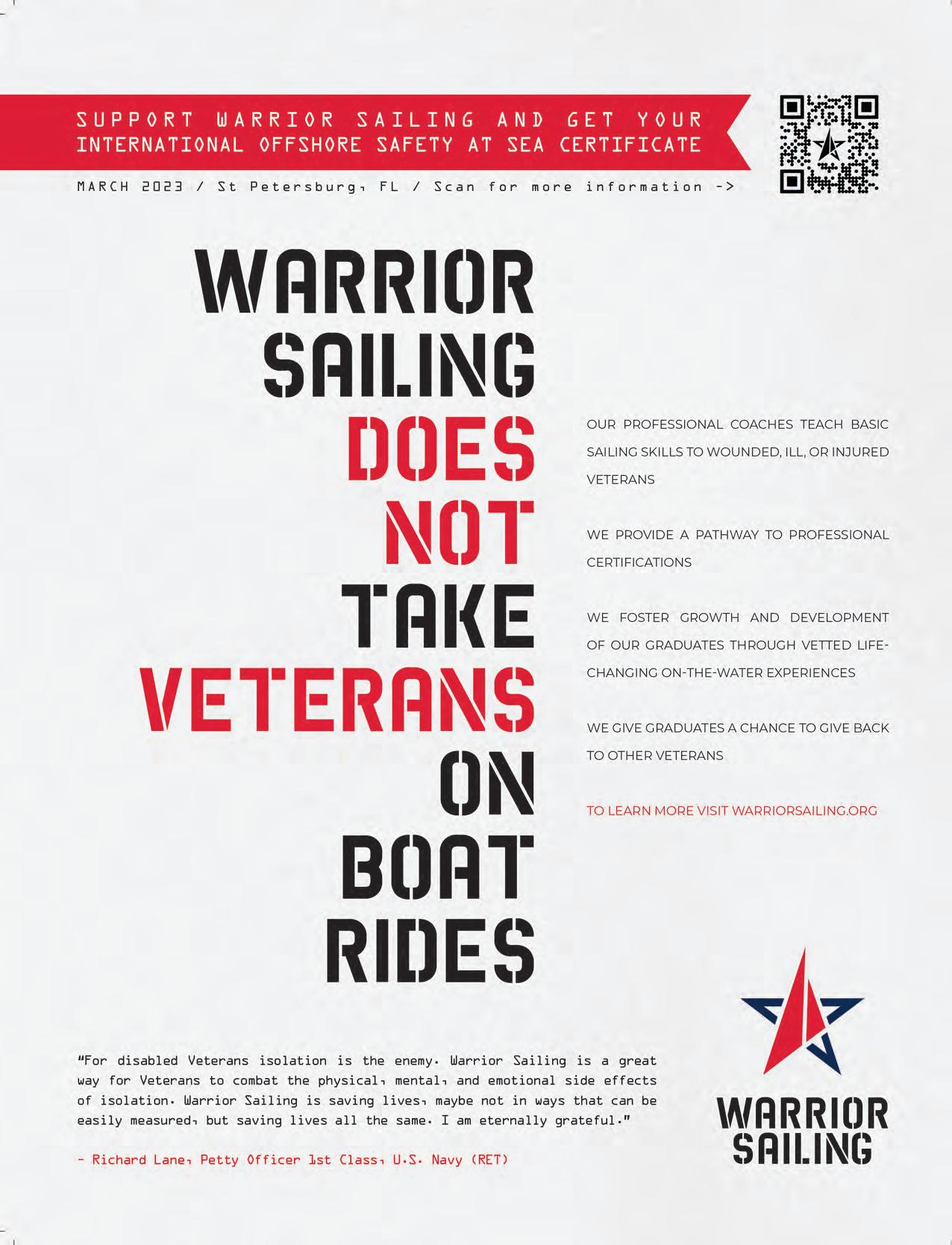
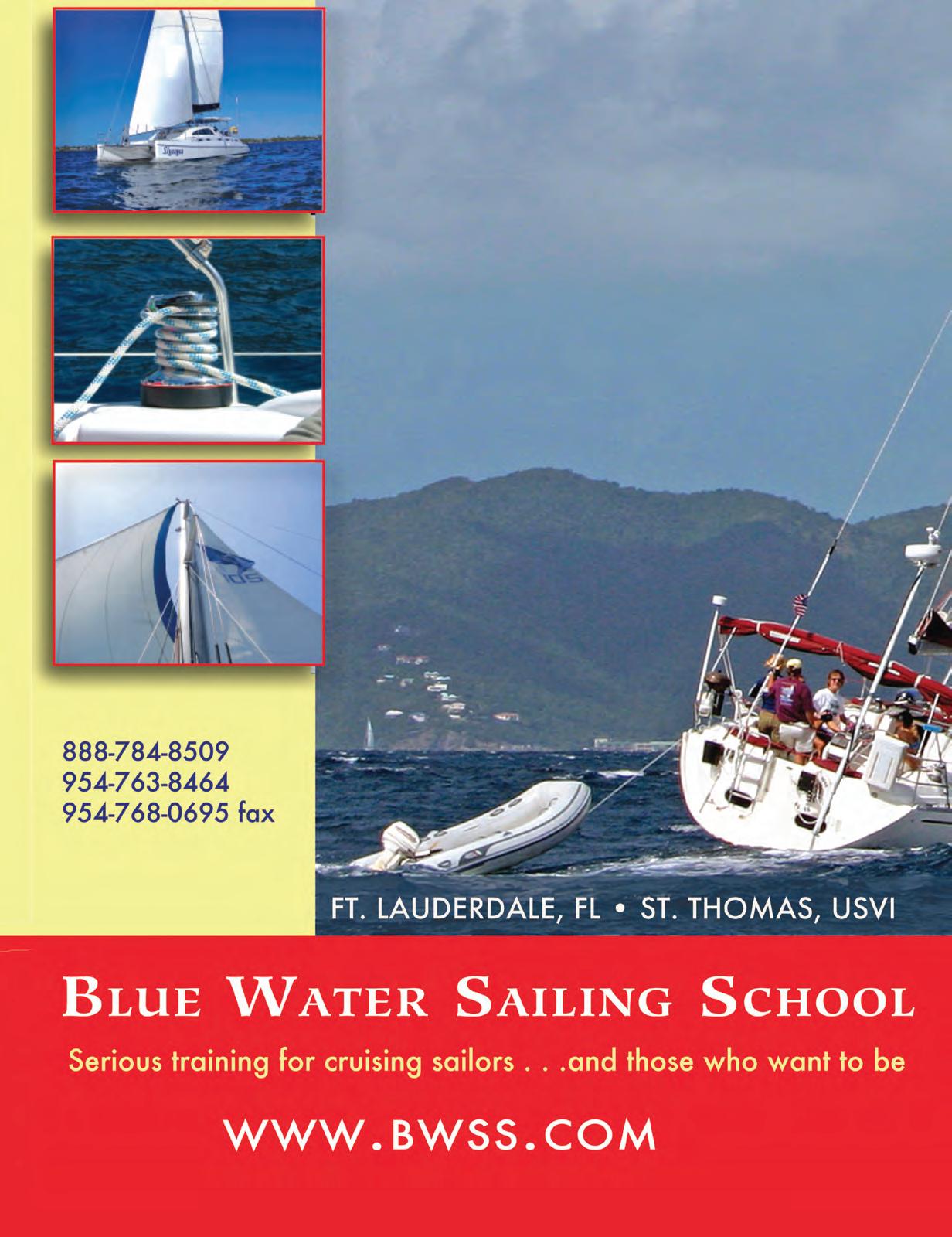

THREE CHAPTERS TEN YEARS
of Sailing

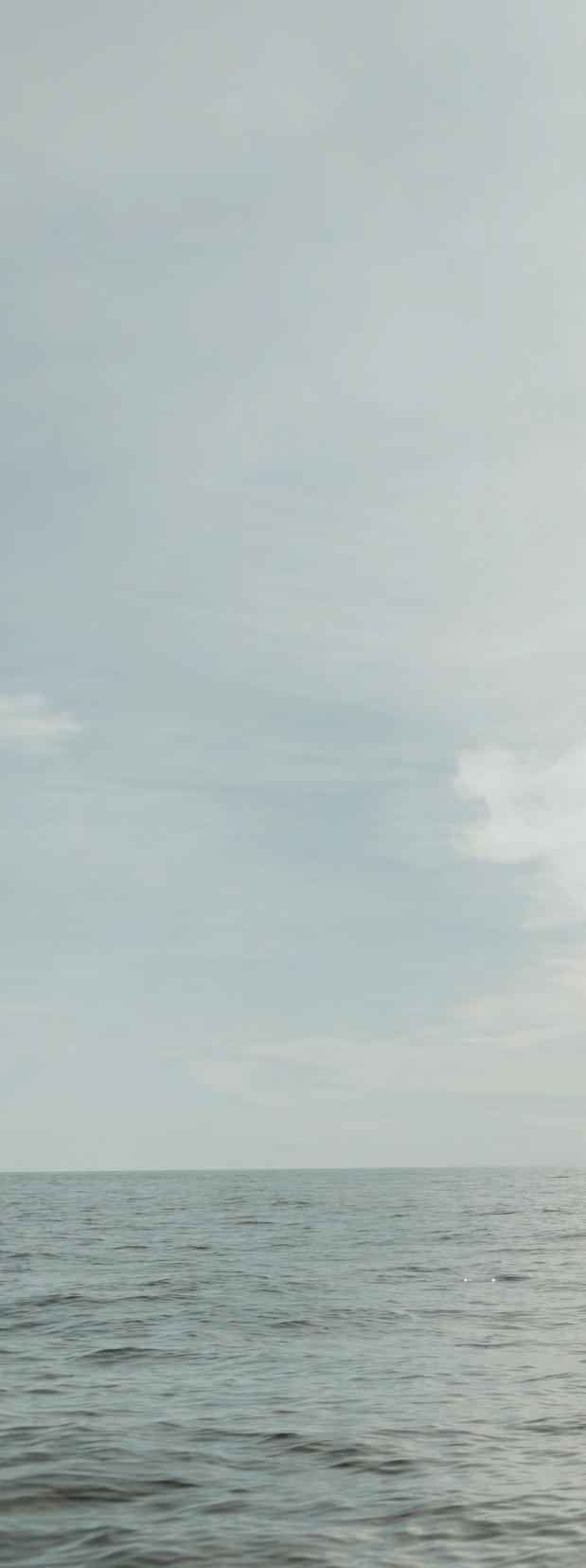
 By Jessica Zevalkink-Yates
By Jessica Zevalkink-Yates
42 Latitudes & Attitudes | #42 Spring 2023

www.LatsAtts.com 43
Stories of ordeal and adventure have been raining from me since the moment I bought my first boat at age 23. A fresh me. The me who didn’t yet have basal cell moles from sun exposure or any money in savings. I didn’t have any debt, a mortgage, or any ties to anywhere or anyone. I didn’t have to pay for health care, and I certainly wasn’t paying taxes. I didn’t have a marriage that needed nourishing, an offspring whose life depended on me, or parents who were becoming vulnerable. With golden mermaid hair, a freckled nose, and the calloused hands of a creative, I took everything I was at 23 years old and threw it into a 1979 Cal 27 named Louise. It was this boat and this decision ten years ago, that wrote chapter one. It was where I began what my definition of success would become. Community, perspective, and adventure weighed at the top.



I desired a “big life” since I was a young girl, though I couldn’t have told you what that meant. All I could have told you was that there was a pit in my belly that was utterly impossible to satiate. I moved to Hollywood when I was 18 to go to art school. Not to be an actress or a singer or anybody famous but to build some sort of purposeful and inspiring life. As I met more and more drop-dead gorgeous talents, all similarly striving for “big lives,” I became strictly motivated to have a different answer to the most common question asked in Hollywood: “So, what do you do?” Which was a code question for “So, who do you know?”. I hated it. I hated the feeling of having to associate who I was with what I did and with who I knew that got me there. I cringed the moment I realized a conversation would come to a close because I was not someone who could help them get recognized or introduce them to those who would. All I had to offer was a warm mid-western smile and a kind conversation, but that certainly was not enough. To a young me, that translated to “I am not enough.”
I was perplexed as to how I would become what I wanted because I don’t think I knew, aside from a hellof-a-great answer to the looming question. I wanted to shift a conversation from “What do you do?” to “What do you love?” and from “Who do you know?” to “Who are you?” I began to build a life. I began to look for people who asked the right questions. Community. I began to explore how other people saw the world and experienced life. Perspective. I became drawn to pursuing activities that filled my blood with adrenaline, energized me, and satiated that pit. Adventure.
Like many of you, I was given the book Dove by Robin Lee Graham. Like many of you, it was that book that prompted my first sailing adventure. It was that book that moved me back to the Great Lakes, where I would begin the rest of my life. In the first six months of boat ownership, I was given the tools to learn and to fail and succeed, but what was most important about those tools was that I trusted myself to
Ten Years, Three Chapters of Sailing
make mistakes with them. I’d been handed a helm, a line, an anchor, a winch, a wrench, a ratchet, gallons of bottom paint, jerry cans of diesel, water pumps, fuel pumps, a VHF, GPS, AIS, coax, volt meter, and a box full of small colorful pieces that were supposed to “clean up” our electrical board. My best friend and I mapped out our route from Northern Michigan down to Chicago and into the inland waterways of America. We left on a beautiful September day after working tirelessly for six months prepping for our Great Loop journey. I remember the diligence I had on day one as we sailed around Northport Point and Cathead Bay. I remember the confidence I had in both, knowing that we were going to mess up, and knowing we would be okay. I remember the thrill of the start of my so-called big life and the fear of messing it all up.

People took us in and shoved us off. There was so much help. Everyone we met wanted to help. People believed in us. They wanted to share their knowledge, their tools, their stories, and their opinions. They wanted to prepare us meals and hear about who we were. They asked us who we were. Who we were. Not what we did, or who we knew, but who we were. The cruising community was proving itself to be a community I had never known before. One where we all shared the same lessons and the same eagerness to feel free and often scared. I began a list of all of the people who helped us succeed. What they cooked us for dinner, what they taught us to fix, or what they gave us. French toast, spaghetti, cold beer, or ice. Charts, a handheld GPS, and a wrench to fit our stuffing box. My list of gratefulness filled pages, and so did my determination to pay it forward. The community was strong.
Two years and 7000 nm rolled under our keel at 4.5 knots. I wrote and photographed often, becoming very in tune with the sailboat, with the weather, with my best friend, and with myself. Eventually, as a team, we became precise at docking, anchoring, navigating, fixing things, changing oil, bleeding fuel, and living with very little. I grew up fast and with many material items. When I chose to travel on a sailboat, I chose to live slowly and with very few items. I had an abundance of time to listen and observe. I wanted to photograph and write for the rest of my life. It took me another five years to believe that I could ever make a living doing so, but it began on the Illinois River. Time glaciated, and perspective shifted. Perspective shifted.
Mistakes came and went. We miscommunicated with barges on rivers. We ended up sideways in a lock. We ran aground. We turned to port when we should have turned to starboard. We got our anchor stuck on sunken trees. We didn’t have enough horsepower to get through oncoming strong currents. We got towed. We drug anchor. We got stuck in fog. We were alone in heavy wind and rain. We ran out of charts. We forgot about righty-tighty lefty-loosey. We read the wind vane backward. We had no operating
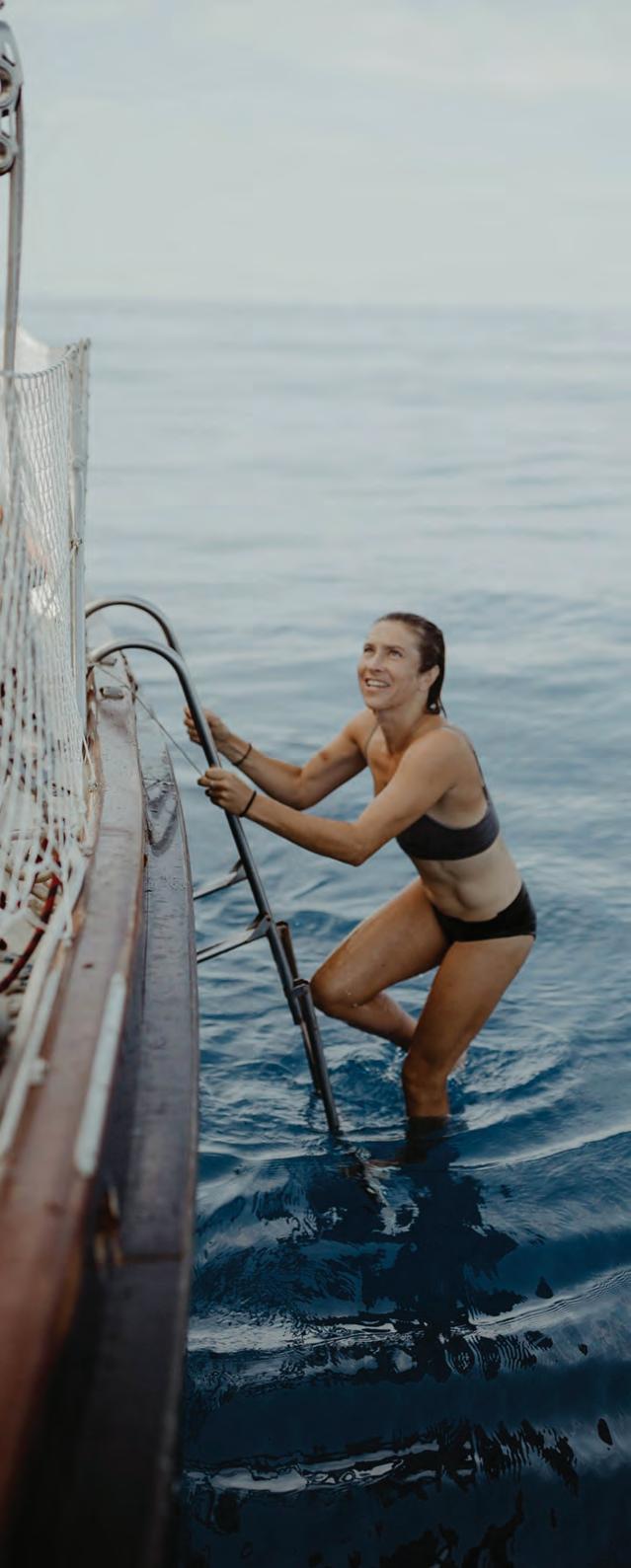
engine gauges. Our engine quit in the middle of a channel, and we had a tanker approaching from behind, giving us five blasts (emergency). We had a man board our boat in the middle of the night at anchor. We were followed by Bahamian fishermen offshore. We were parked in by yachts and held hostage in Miami by a man who was supposed to help us fix our boat, but made it clear he wasn’t going to let us leave. Every day that we were underway felt terrifying. Every time something broke, we thought it was the end. I have also never laughed so damn hard in my life. Adventure.
When we completed our circle and returned to land, it didn’t take long to lose my grip on the three essential things I worked hard to have. It didn’t take long to lose my way without a sailing community, without a perspective that constantly had the ability to deepen, and without the daily adventure and purpose of making it from A to B. I spent the next year trying to figure out how to do it all again. I worked at boat shows and wrote for Latitudes and Attitudes. I gave presentations about the Great Loop and wrote chapters and chapters of a book when I met a British sailor in Annapolis, who would turn out to be my husband, and knew right then and there, he was how I would find my way back to sailing. He was my chapter two. Within the first year we met, we convinced my dad to borrow his classic Pearson Invicta Desiree. Despite many career obstacles, complicated logistics, and a relationship that had the Atlantic Ocean wedged in the middle of it, we spent an entire winter making decisions and prepping my old mans boat to sail from my house to his house. Michigan to England, across the North Atlantic Ocean.


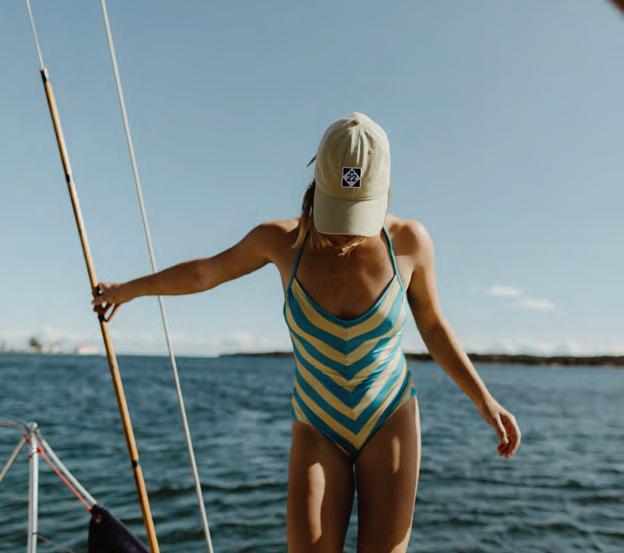
After chapter one of building confidence on the Great Loop, I believed I was capable of crossing an ocean, but it wasn’t something I was particularly drawn to. It wasn’t something I felt I needed to do. And then I met my husband, and the shared passion, resources, and experience made me realize we would be stupid not to. In this chapter of my sailing life, I learned how to sail. I mean really learned how to sail. I did the majority of the boat preparation in Michigan with my father and took the boat through the Great Lakes and out of the St. Lawrence River with my friends and my mom, which was cold and dangerous and exciting but, in a weird way, comfortable. I was comfortable with daytime navigation in the Lakes and inland waterways. I was comfortable docking, locking, anchoring, and motor sailing. I was comfortable bleeding fuel and using J-B Weld to secure a starter to an engine when it sheared off in the Welland Canal. It wasn’t until Luke was on board that my lessons in sail handling and rigging began. It wasn’t until I watched him do ballet on deck with dangerously loaded parts and heavy cloth. It wasn’t until I sailed with him across the ocean twice, that I was able to observe how much I had not been doing before.

Ten Years, Three Chapters of Sailing
We threw ourselves into dicey weather to get to the Gulf of St. Lawrence. We reefed and unreeved and reefed and unreeved a thousand times over. We fought 20-foot tides and wicked currents to get to Newfoundland. I had never sailed more than 24 hours straight before, and I made myself sick with anxiety going into night watches. I puked, a lot. I did more squats at the helm to stay warm and held my watch on freezing nights, counting down the minutes till it was over. I forced myself to go on deck and reef sails without waking my husband. I promised myself I would hold my own. In a way, I wanted to prove myself in a new relationship, but more importantly, I craved self-sufficiency. I laid in bed off the coast of Newfoundland one night and told Luke I smelled Ice. We entered iceberg alley and passed our first berg on a foggy and windy night. It drifted down our port side, and we were looking up. My jaw hit the deck. It was the most glorious thing I had ever seen. I had also never been so scared in my life. I had been exhausted and sick, and at that moment, I’d never been so awake. Never been so alive.
We crossed the North Atlantic Ocean in 17 days from Newfoundland to England. My husband and I barely saw each other. Four hours on, four hours off. I remember writing in my journal that I didn’t realize I would be crossing an ocean alone. We had days of calm and days of gales. On the 4th of July, we were off the southern apex of Greenland and crossed our halfway longitude. I put on my favorite American flag bathing suit, stood in the rain, and drank a beer at 9 AM. It was cold and miserable and blowing 35. It was amazing and perfect and exhausting. It was the best fucking time of my life. I learned proper isolation and a new definition of teamwork. I learned how to sail, but I still didn’t believe that I knew how. I would have never called myself a sailor.

The following year we paused in extraordinary places. England, Spain, Portugal, and Morocco. We broke and fixed much of Desiree. We were knocked over and chucked into the sea off the coast of Portugal. A single wave sheared off our rudder, ripped off our dodger, and bent stations sideways. We had a Moroccan military helicopter hover directly over our mast, downwash blasting the deck. We had pilot whales suspiciously surround us, and big sharks bite our lures. We sailed 21 days from the Canary Islands to Antigua, this time married, but as a result of shift changes, still very much alone. We saw absolutely nothing. It was a time warp and an even deeper lesson in isolation, having to sit with yourself. It showed me how many ways we are able to distract ourselves on land. Not out there. On land, we actively seek isolation from our overly-scheduled social and professional lives. At sea, we actively seek distraction to save ourselves from isolation. Perspective.


We returned Desiree to her home port in Michigan two years later. It only took six months to start looking for our chapter three. After a lap of the North Atlantic, it was that iceberg that set the tone for chapter three. We wanted a steel boat. We wanted to do more high-latitude sailing. After learning we were not Caribbean-cocktail-on-thebeach-under-hot-sun kind of people, we thought back to all of the places we loved the most. Most of them are 40 degrees longitude or higher, and most of them are quite hazardous. We put an offer in on a steel-hulled Endurance 44 in San Fransisco Bay and closed the deal in January 2020. While the world shut down and we got pregnant, chapter three began with an enormous amount of work aboard Alekona. Prepping for parenthood and prepping for more offshore sailing with an infant. A year later, we took off down the coast of California with our three month old son and headed to Mexico, this time with friends.
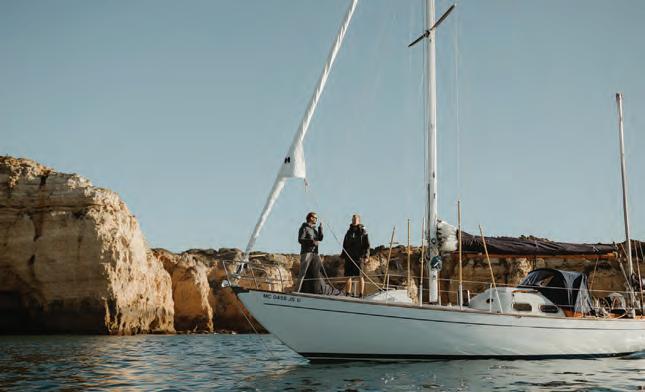
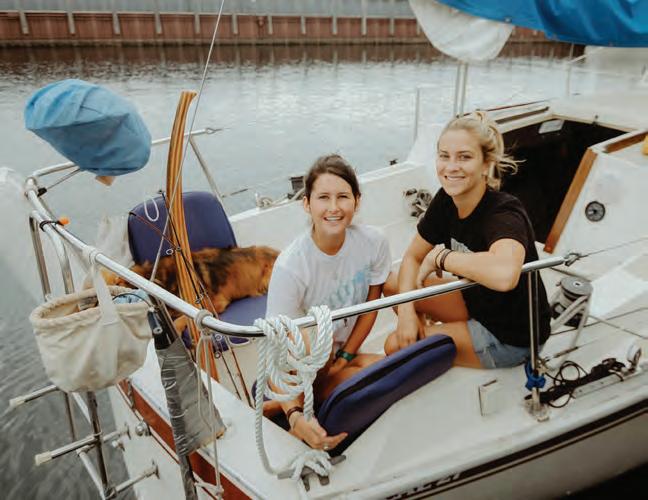

I learned about motherhood and steel. About nursing and radar. I studied a 75-HP Isuzu engine and sleep training. My husband took priority and responsibility for Alekona, while I did the same for our son. We had stations all over the boat where we could secure our baby or buckle him in. If he wasn’t attached to me, he was within arm’s length. My entire existence and experience of sailing changed. I learned my limits and pushed them. I had to re-calculate risk, and every decision we made felt heavier than the same ones we had made in the past. The emotional journey of being postpartum on a mission to South America was wild. Absolutely wild. By the time we had made it to the Galapagos with a one-year-old, it had been just over a decade since my sailing journey began. I sat tall with pride and quiet with exhaustion. Something had to give, and we started having bigger conversations about bringing Alekona back to the Great Lakes instead, to be still and to raise our infant into a toddler.
I’m nearly 34. My son is two. My husband is now on Alekona in Panama and on a delivery trip to bring her home to the Great Lakes. I am just now, in the thick of attaining my master captain’s license laughing at the amount of information that a) would have been incredibly helpful to me in the past and b) does not apply to much of cruising. I’m sifting through journals, logbooks, and charts. It was what prompted me to write a ten-year summary of how I even got the pleasure of writing for this magazine. It is what reminded me of where I began, how far I have come, and, more importantly, how much I still have to learn. There is much I don’t know about sailing and the sea, but I am certain in its ability to satiate that pit that forever lives in my belly. It’s given me a “big-life”. It’s given me community, perspective, and adventure, among plenty of vital things. It gave me the answer to all those folks back in Hollywood. “What do you do?” I sail. “Who do you know?” I know me.

Ten Years, Three Chapters of Sailing
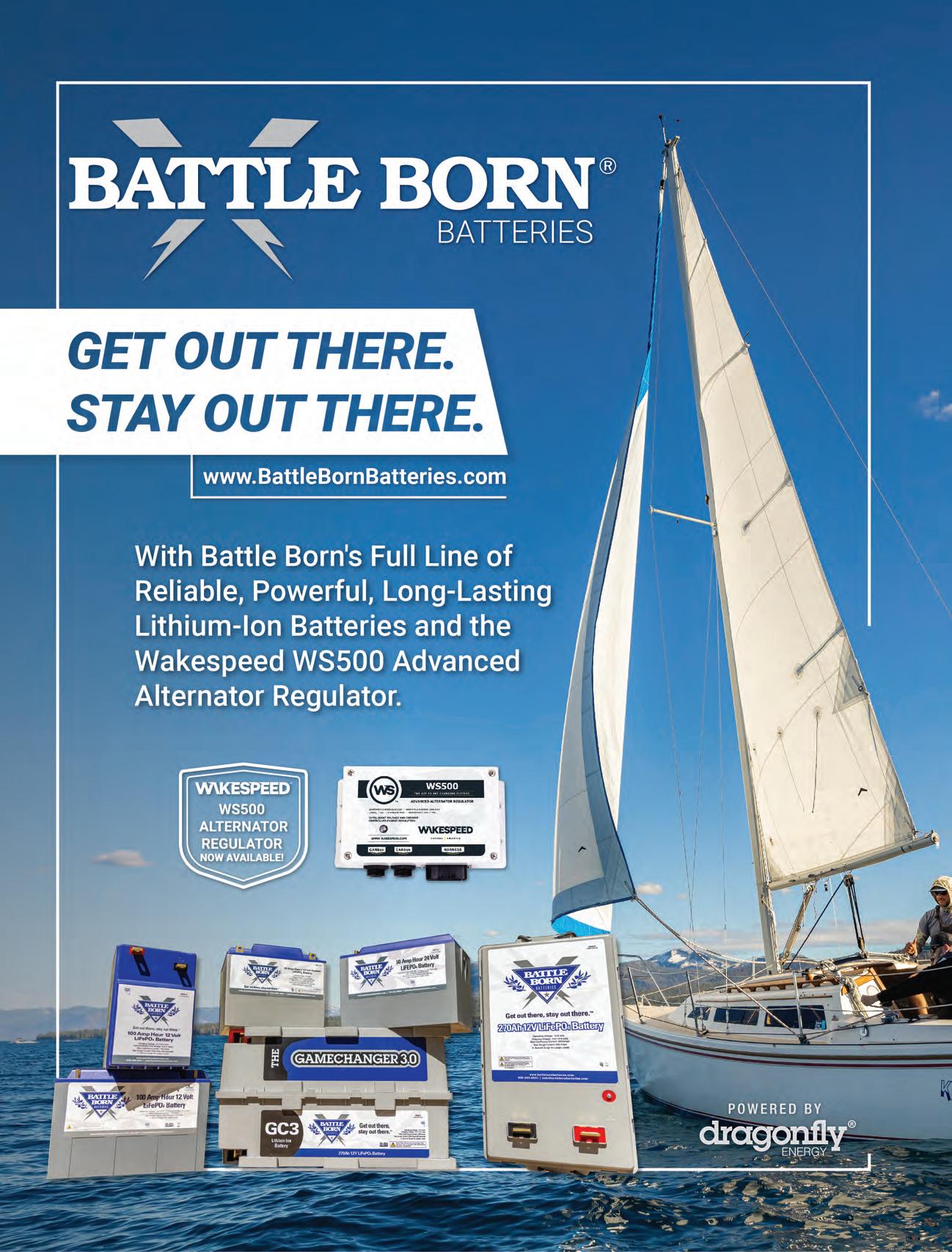
The is More than Just Luperon DOMINICAN REPUBLIC
By Capt. Shane McClellan
Having spent the last 11 years in the Virgin Islands and Eastern Caribbean running charters aboard my Lagoon 410, Guiding Light, I have heard many sailors talk about going to the Dominican Republic (DR) on their way to the islands. The problem is that once you start talking to them about the DR they tell you they either spent the hurricane season in Luperon on the north coast or they used the DR to get to the southern coast of Puerto Rico to continue east to the islands. So few of them actually spent time cruising the DR to get to know it and the people. This is a shame, because, while there
are issues cruising the DR, there are also three great cruising grounds to explore.

SOUTHEAST CORNER
When Lily and I cruised the Dominican Republic we started in the southeast corner of the country because we sailed over from Puerto Rico and checked into the country at Marina Casa de Campo. This high-end marina is a great place to check in to customs because the officials will meet you at the dock and escort you to the office. We had to fill out paperwork for customs,
50 Latitudes & Attitudes | #42 Spring 2023
Isla Saono - Catuano
immigration, health, sanitation, and more. It seemed like each person asked for $20 for their part of the process. The total we paid to check into the country was around $120.
By the time we were done it was late in the afternoon, but the marina told us they did not have room and we had to leave. The problem is that in order to leave a bay you have to get a despacho stating where you are headed and I had not yet decided. The official recommended Bayahibe and he was right on target. This little touristy beach side town was a wonderful first look at the DR. While it took a bit to find a place to anchor amid all the local day boats, once we did the island vibe took over. Sadly, the first order of business at any new harbor is to turn in the despacho to the armada, but after that you are free to explore. We loved walking the beach and the town. We ate at a fun restaurant called Gringos, much to the amusement of my Mexican girlfriend.
Now to the gem of the southeast, and the reason Bayahibe is so popular, is Isla Saona, a wonderful island/national park separated from the mainland by a mile. Here you can find several different anchorages to relax. Our favorite was just north of Punta Catuan on the mainland, because we had protection from north

to south in seven feet of water off a nice beach. Each morning we watch the day boats start to arrive around 9:30 AM and then return back to Bayahibe around 3:30. Just a mile or so north of us was a shallow sandy spot called Las Palmillas, where day boats loved to anchor and everyone hung out in waist deep water. We took the dinghy over one day and enjoyed people-watching for a few hours. The dinghy trip to the large mangrove lake around the point was the highlight of this anchorage. We spent a couple hours exploring the square mile size lake seeing turtles, rays, sharks, a frigate bird colony, and other bird life, all while knowing so few people ventured into this natural hideaway.
Over on the actual island of Saona you have to turn in your despacho at Catuano on the western tip of the island. This is a nice beach with a beach bar, but we loved Playa Delfin, just around the corner to the south. This beach was a mile long and had lots of different beach bars to choose from. We enjoyed watching all the day trippers. It seems big business for the locals to do photo shoots of tourists for a fee, because we saw a lot of people posing for the camera. We also checked out a beach a couple miles to the east and just north of Punta Laguna, but it did not provide the protection we needed and it stunk of rotting sargassum.
www.LatsAtts.com 51
National Park
Los Haitises
The last thing we did before leaving for the next cruising ground was to sail up the eight mile long channel between Isla Saona and the mainland. Once we got past the western bar we had 20 feet in the main part of the channel. At the eastern end our cruising guide said Cayo Raton provided decent shelter, but when we got there it was not an island but a reef instead. It was very interesting sailing just inside the barrier reef and seeing at least three different ships wrecked on the reef and Cayo Catalinita, which is right next to the middle of the reef. On the southern end of the barrier reef there is a fairly easy cut to navigate out of and that is what we did in order to do a 120 mile passage around Cabo Engano to our next cruising ground. A word of caution, Cabo Engano is part of the Mona Passage and weather in this area is always tricky, as we found out when the light winds turned to 25-30 knots and ripped our head sail.
SAMANA BAY

Even with the ripped jib, we were able to sail into the 30 mile long by 10 mile wide bay on the east coast of the DR. As we entered Samana Bay we saw two different
whales and which is not uncommon, because they like to breed and calf here between January and March. You are not allowed to take your boat out looking for them (they want you to use the local tour boats for that), but a week later when we sailed deeper into the bay, on a flat clam day, we had a mom and calf swim within a hundred feet of our boat for an hour after we turned off the engines and floated.
In addition to the whales you will also see Cayo Levantado as you enter Samana Bay. This island has a great beach and is a favorite for day trippers to visit. In order for us to take Guiding Light to the island we had to first sail to the town of Santa Barbara in order to turn in our despacho. By the time we were anchored Louis had come by to introduce himself “as the guy for anything we needed” and the first thing was bringing the armada out to take care of business. Of course we were a bit suspicious of him at first, but I can assure you that he really is the man to help with absolutely anything you need. Once cleared into the bay you have to get another despacho to take the boat anywhere else in Samana Bay. However, if you want to sail back over to
52 Latitudes & Attitudes | #42 Spring 2023
THE DOMINICAN REPUBLIC IS MORE THAN JUST LUPERON
Punta Rucia - Cayo Arena
Cayo Levantado and spend the day simply tell Louis you “need to make water” and he will tell the armada you are heading over there for the cleaner water than what is near town.

As cool as seeing whales, playing on the beach at Cayo Levantado, and walking around Santa Barbara, they are a distant second fiddle for the reason we sailed to Samana Bay. Simply put, spending time in Los Haitises National Park is like visiting the set of Jurassic Park. The hills and small islands jut straight up and have a wild feel. I would also compare it to Thailand.
The park is on the southern shore more than halfway into Samana Bay and has some protection from a narrow peninsula that sticks out. The end of the peninsula is Punta Arena, which has a pretty little beach on it…..until you get closer and realize a lot of trash has washed up. On the protected side, the shore drops off quickly so we were able to anchor stern to right next to a big, wooden, tour boat that was wrecked many years ago. From the beach we sailed to the southeast part of the bay and found a mangrove river we explored before heading to the ranger station to walk through the La Arena cave.
This whole area is inundated with caves and each one seems unique. La Arena cave has a boardwalk with part of the cave right at the waters edge. About a mile away we
anchored behind a causeway and pier that were never completed, but provide excellent protection in order to visit the Line Cave. This cave was really cool because you first have to dinghy down a mangrove creek until you come to a dock. You then walk into the long cave and if you look in the right spots you will find pictographs (rock paintings) from the Pre-Columbian era. The third cave we found was by accident. We anchored in the big bay on the east end of the Cayos de Los Pajaros and saw a dock that we figured was there for a reason. Turns out this cave was HUGE. You could easily put my entire boat, including the mast, inside this cave. Plus there are two different spots you can swim into the cave. At the other end we climbed up a rock pile and came out in this round, jungle, sinkhole area that made you feel like you just entered the Lost World.
As much as we loved the caves and landscape, our favorite anchorage was Ensenada del Naranjo. Here we tucked deep into a bay and were surrounded by little islands that made it feel landlocked. As soon as we arrived some fishermen gave us a pound of shrimp. We enjoyed the shrimp that night as we swam with the best bioluminescence I have ever seen. Besides the glow in the dark glitter you typically see, this bay had big, thick sea walnuts that glowed like green light bulbs. So cool!!!!
As much as we hated to do it, we had to leave Samana
www.LatsAtts.com 53
Monte Cristi - El Morro
Bay because we had friends coming in a week and 120 miles to get where we are meeting them. We had a nice calm morning, so we left at 4am, with despacho in hand, in order to motor the 15 miles out of the bay and around the end of the peninsula before the morning winds picked up.
NORTHWEST COAST
It was an overnight passage to get to Luperon, where we were meeting our friends so we could cruise from there to the Haiti border roughly 50 miles away. Not withstanding what I said at the beginning of this article, Luperon is an amazingly protected harbor and that is why so many boats stay there during hurricane season. The rest of the north coast needs to be cruised with caution and an eye on the weather and north swell.
Our first anchorage was at the town of Castillo behind a little reef that gave some nice protection. While the beach was fun the highlight was checking out the ruins of La Isabela. This was the site of the first attempt at a colony in the New World and Christopher Columbus’s only house in the Americas. Another highlight was lunch at the multilevel, beach side day resort called Fricolandia.
The next day we sailed 15 miles past Punta Rucia so we could visit Cayo Arena. It is a tiny sandbar like island in the middle of a long reef system that takes some careful navigation. All you will find on the island is a row of size to seven thatch covered picnic areas and a bunch of local day boats, but the beach and water more than make up for it. In the afternoon we motored upwind five miles back to Punta Rucia where we found a great little sleepy beach town.

Monte Christi was our next destination. We sailed inside the reef system about 25 miles before rounding El Morro, a rock/mountain that prominently sits on a point. This thing is so large, and the landscape around it is so flat, that we could see El Morro 10 miles away. After turning in our despacho we took the dinghy up a mangrove river a couple miles and found a really cool observation deck where it was 10 feet deep with a sandy bottom.
Our final anchorage was in Manzanillo Bay, but first we wanted to check out a couple of the Seven Brothers. These seven reef ringed sandy islands are the perfect getaway. They are all fairly similar and we anchored in the lee of Monte Chico & Tororu. Minus the palm trees, these islands are exactly what you think of
54 Latitudes & Attitudes | #42 Spring 2023
MORE
THE DOMINICAN REPUBLIC IS
THAN JUST LUPERON
Monte Chico
with a deserted tropical paradise. Once we were in Manzanillo Bay we spent one night in a little mangrove lagoon next to the small town of Pepillo Salcedo and another at the north end of the bay. Pepillo Salcedo is so close to the Haitian border that we were able to take a small ferry across the river and have lunch in Haiti one day.
CONCLUSION

We loved our month and a half in the Dominican Republic and feel very fortunate to have been able to cruise so much of the country. This was on top of the road trips inland we took to see Santo Domingo, the Larimar mines, the jungle, a monkey rescue, sledding down sand dunes, kite surfing, and so much more. The DR is a great place to visit. The only thing I wish is that they would change the process of obtaining the despacho at each new bay/anchorage. What a pain since even though it is required, the officials seem clueless how to handle the paperwork. What are you going to do?
Join the adventures on Guiding Light as Captain Shane & Lily continue westward along the Greater Antilles. Simply look for svGuidingLight on your favorite social media or on their website.

www.LatsAtts.com 55
Shane and Lily at Las Palmillas

Tayana 37 Rebuilding a

 By Capt. Mike Worley
By Capt. Mike Worley
There are many ways to get to the boat of your dreams. I have tried them all! One of my projects was a Bruce Roberts Design, a Roberts 36 foot full keel blue water cruiser built from a set of plans that took over 18 years. I don’t recommend that for the faint of heart. If you ever hear me say I want to build another boat, please get me some therapy! After Hurricane Michael destroyed Jammin, I was boatless. I found that after a hurricane, some insurance companies auction off boats that can be restored. That’s where I discovered the Tayana 37. Upon a hill the ladies sat, all looking for a new Captain to take them home. There sat a Tayana 37!
It was love at first sight! If you’re a sailor, this is a sailor’s sailboat! Her lines said she knew how to handle blue water. Damn, she looked good! She was as nautical as nautical gets! On deck, she had teak decks! I always wanted teak decks! She was a ketch, and both sticks were lying across her deck along with all her standing rigging and sails. Lots of wooden blocks and a bowsprit! I had died and gone to heaven. Her stanchions were twisted and mangled. Her lifelines were shredded, and the cap rail was mangled. The stanchions and lifelines are easily purchased and replaced. You could tell she had been in a fight for her life.
The hull was scratched and chewed on but had no holes, and she was still watertight! That was the one thing that would have killed the sale. A few of the other boats were not as lucky. Cracks from stem to stern, holes as big as my fist in the hull. Only two were watertight.
On the hull was a sign that said, “if you’re interested in this boat, call.” The owner said the boat was considered totaled, but he was hoping someone like me would take on the project and rebuild her. He gave me permission to check her out.
The thing about restoring a boat is that no one can do it all! There are times the only way to get things done is to take two fingers and reach around behind you and grab your wallet. Pull out a couple of boat bucks and throw them at the problem. For me, I am crazy enough to try and fix anything! Sometimes, the solution is easy and always worth a try! Another thing: always get any boat you intend to purchase surveyed. It will save you a whole lot of headaches down the road, and you will know exactly what is required to restore it, which was exactly what I did not do! My background is in building, and I built a boat from scratch. I know boats.
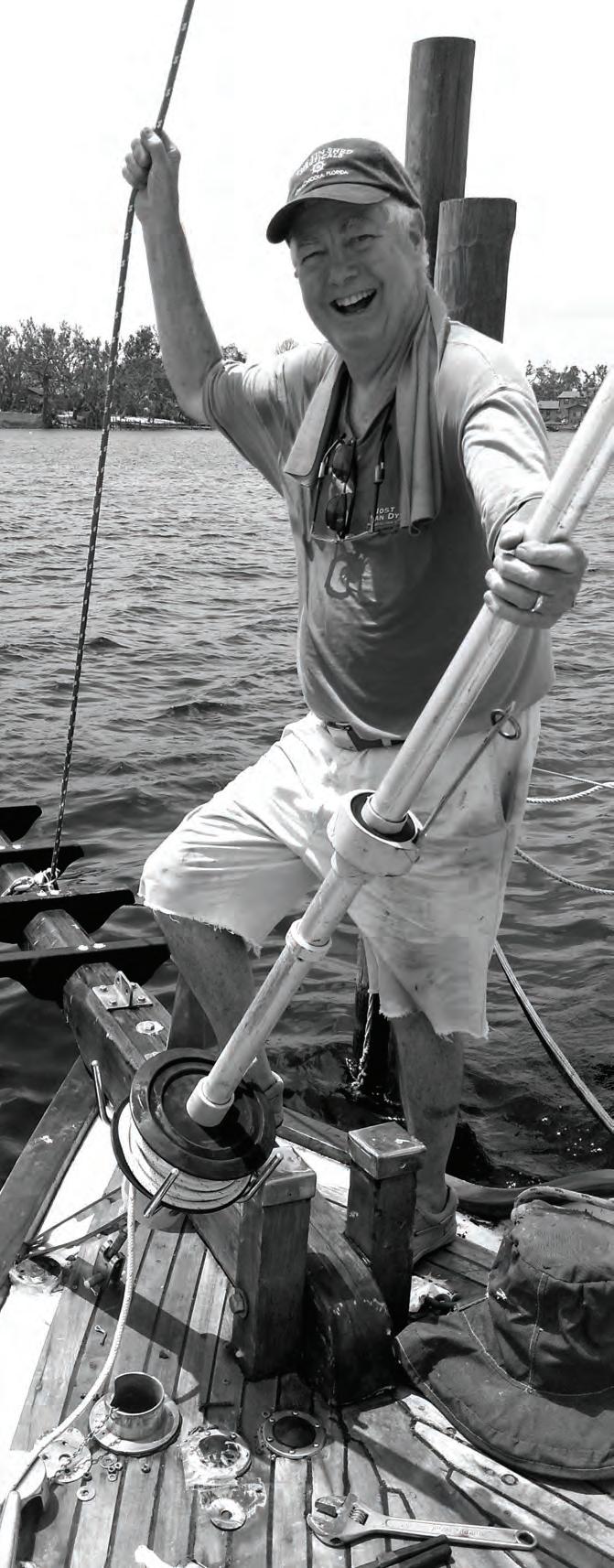
What Jammin did not have, the Tayana had in spades. Mainly storage, as it was bulkhead to bulkhead. On top of that, everything was there! Electronics, lots of spares, the layout was workable, and I fell in love! I knew I could bring her back. The reason the survey said it was totaled was because of the amount of work she needed to be 100% again.
I called a dear friend and sailor and gave him the rundown of the boats that were going to be auctioned. He said, “Get the Tayana! Do whatever it takes but get the Tayana!” In my research, I ran across an article that named the top 100 Cruising Boats in the Worldthe Tayana 37 came in at #7! My business and home were not livable because of the storm. I was reduced to living in my vehicle and had no idea how I was going to make this happen – time to go to work.
The owner told me to call the broker handling the sale. I took a deep breath and called him. The broker stated they can sell the boat directly instead of auctioning it off. OK, how much? I was thinking $30,000 to 50,000 easy. He said they were thinking about a price that made me swallow hard – less than 10 cents on the dollar. I offered $2,000 below the asking price, and he accepted.

Rebuilding a tayana 37 58 Latitudes & Attitudes | #42 Spring 2023
Two weeks later, I had the Tayana! Now the fun begins. There is a process I use when I start restoring a boat. First, make a list of everything that you can see that needs to be replaced or rebuilt, and then organize a system whereby everything is addressed all at the same time. You can’t rebuild all of it at once, but you can get the ball rolling. Some parts take time to acquire, and there is also a logical way to put this puzzle back together.
The major projects need to be addressed first. Find out what you are going to need, research the prices and place the orders. As I work a boat, there will be new things that pop up. At this point, I had no power tools or a place to start to acquire everything that was needed.

Number one on the list was tools, followed by a sequence of repairs. A list was made for each project of everything that would be required and what the components would cost both in time and money.

One main project was the bowsprit. It was snapped in half. The forestay is supported by the bowsprit. My buddy Mike offered to rebuild it for me. I told him that there were several other people that wanted to build it, and he could not stop laughing. “Sure, there are.” So, my buddy went at it, and he made her a bowsprit. I knew it would take time. That’s why it was one of the first major projects.
He drove down from Atlanta and helped me install it. The mast was already there and sitting on the keel, and she had support on both sides, and I used the main halyard to support her from the bow.

She needed stanchions and lifelines, but that was put way down on the list. While Mike was building the bowsprit, I was sorting out the diesel. In case another Michael headed this way, and she needed to get out of the way. The Tayana came with a Perkins 4108. Diesels need a healthy battery to get it to crank. The six golf cart batteries were one heartbeat from death. So, two Ds were purchased and installed, and the engine was cranked. What a wonderful sound!
Talking to the prior owner, he stated he was on the boat when Michael hit, and the boat was connected to the dock’s power supply! It was supplying power until the dock went underwater! The following surge turned the lines black and melted the 30-amp receptacles on the boat, which was not good. The electrical system was a patch job even before this. I had purchased
was Frankenstein’s monster – the lack of maintenance showed green connectors everywhere.

The electrical issues continue to this day. As each system is tracked down, every connection and wire eventually get replaced. It’s a slow process, but it must be done.
This T37 is ketch rigged – several sails and two spinnakers. Up to this point, the mast’s wiring was not reconnected. Simple things first, the spreader light breaker showed me which set of wires were for the spreader. In a few minutes of hooking up each set of wires, I tracked down the set for the spreader lights. When these were found, I connected and sealed each with some shrink tubing. I went below and hit the breaker, but they were still on. I hit every breaker, and they were still on. I turned off the main breaker, and they were still on. I wound up cutting the lines and found there was a breaker problem, so I made the decision to replace the entire set of breakers.

I upgraded all the lighting to LED, which made it almost too bright. The boat also came with eight brass lanterns and one massive ship lantern that went over the dining table. The lanterns were too much for the boat – I like open space, and they would swing wildly. I loved telling people that the boat had ghosts. When doing the 25-cent tour, I would always mention the ghosts that came with the boat. When they would come below and see the lantern swinging, they would bolt for the shore. I had my fun!
One way to judge a boat’s seaworthiness is to check how many handholds there are throughout the boat. There should always be one within your reach. The Tayana had two within reach anywhere on the boat. Recently I was on a MacGregor 65, and there was not a handhold anywhere below deck, and that boat can easily do 20 knots.
A big factor in restoring any boat is the weather. If it’s raining, then work inside. If the humidity is high, do not paint or do any varnishing or fiberglass. When parts arrived, the project they were bought for is put on the work list. Here is the key never stop working on her.
Organization for a project like this is critical. When you finish a project, keep a record of what was done and when. It will become part of the history of your boat. Take pride in each segment of it.

Rebuilding a tayana 37
One thing about a Tayana is that teak wood is everywhere. I love wood, but everywhere? Walking into the main salon area, it looked like a cave. I wanted it open and airy, so looking at a few other Tayanas, I decided to add some color to the boat. Keep the teak trim but make her look warm and inviting. The bulkheads were all painted an eggshell while I used a type of paint that, if I didn’t like it, I could peel it off. The teak is still there. With the added white, it really brightened the interior. Now it’s starting to feel like home.

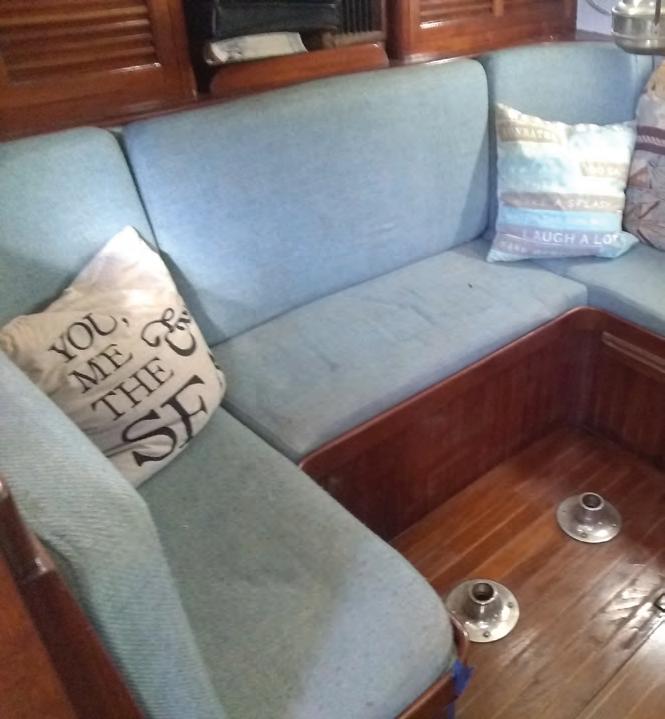
The boat I built from a set of plans did not have enough storage. That became very evident when I started planning for my circumnavigation. Where was everything going to fit? The Tayana is wall-to-wall storage. Cabinets everywhere, but still not enough. There are tools that need to be stored, photography equipment, food, lots of food; and if you bring a partner, what do you do? Plus, scuba gear, fishing gear…the list goes on and on. Then there are the 200 bottles of wine! You get the picture.
In my case, I have two ladies (cats) that live with me. I am glad they are only about 12 pounds each. They keep each other company. Their constant insanity keeps me sane, mostly! They have toys all over the place. For a cat, a boat is a big jungle gym. When you get totally frustrated and can’t do anything but screw up, put your tools away and spend some time with the fur balls to get your head back on straight. Beyond the wonderful breath-taking moments, there are times you want to set the boat on fire! I am working on making this boat my home, idiot-proof. But that’s when I become a better idiot.
Staying on top of things will help you avoid problems down the road. There are days I want to walk around the boat with my tool belt daring something else to break. As a captain, you need to know how to do everything, where everything is located, and what’s required to keep it all running smoothly. I highly recommend a log. The Tayana came with several books. Two large ones that show every component that she has. It has all the service manuals, warranties, and “what to do if’s.” Every new thing I add to her goes into those books. The third book is an overall description of everything. Everything but a wiring diagram.

Some info about the Tayana 37
The Tayana 37 is distinguished most by its doubleended hull. The deep, full-keel bottom is designed for Bluewater cruising, and the vessel’s 22,500-pound displacement includes 8,000 pounds of outside ballast. Construction is solid, hand-laid fiberglass.
Designer Robert Perry drew up two twin-headstay rigs, and the boat was rigged either as a cutter or ketch. Both versions carry large sail plans — the cutter is more than 800 square feet, and the ketch is more than 750. They’re based on a high-aspect mainsail for upwind work and twin headsails for versatility.
The deck profile shows a traditional trunk cabin ahead of a roomy aft cockpit with pedestal steering and controls, surrounded by a high coaming. Bow and stern pulpits are joined by double lifelines with both port and starboard gates. There’s also a pilothouse deck plan with a protected steering station.
Three cabin arrangements were offered, depending on the type of rig. In both the cutter and ketch versions, the U-shaped galley is aft and to port, at the foot of the companionway, with a quarter berth across the way. The main cabin has a U-shaped dinette with a table to port and a convertible bench/bunk to starboard, though the ketch adds a permanent bunk at the bench. Both versions have a forward V-berth, with the enclosed head just aft and to port. In the pilothouse version, the master cabin is forward, with a double berth instead of a V-berth, and includes a small sitting area. The saloon has a larger dinette, but the convertible bench to starboard is replaced by a linear galley, and the head is to starboard. There’s also a double berth aft and to port, where the galley is in the other versions. All interiors feature teak joinery and cabinetry.
Chandleries that sell pre-owned products will become a daily part of your life, and you can save a bucketload of money as you search for the components you need. Make a list and send it to each one across the country and have them search for you. Forget retail – I bought an LED light from one retailer for one of the dome lights for $35, and I found them on Amazon – four for $8. The point here is you can rebuild a boat using your head and a little sweat equity and save a lot of money and time.
Once all the broken parts are repaired and the components are working, then you can go to jazzing her up. Make it yours. That’s where the fun begins. As a man, I realize I have no taste in decorating; just ask my daughter. I went by the fabric store looking for something to cover the drab cushions. Taking pics of several upholstery materials, I sent them to my daughter for her opinion. The lady at the store asked if I wanted to buy one of the ones I picked out. I told her I may be the Captain, but my daughter is the Admiral.
Checking with the local upholstery shops, they quoted a price of $200 a cushion! There are 13 cushions in the boat. Time to do it myself! A YouTube video showed me that they are not too complicated. I already purchased the material, so my next purchase was a sewing machine.
If you’re a sailor, you’re willing to try anything to make your dreams come true. If you have any questions about building or sailing in general, you can always reach me at mikeworley106@gmail.com. I wrote a book about the boat I built called Building Jammin it is on Amazon. Or ask me, and I will just e-mail it to you.
SPECIFICATIONS

LOA: 36 feet, 8 inches
LWL: 31 feet
BEAM: 11 feet, 6 inches
DRAFT: 5 feet, 8 inches
WEIGHT: 22,500 pounds
HULL TYPE: full keel
SAIL AREA: 861 square feet (cutter), 768 square feet (ketch)
ENGINE: 50-hp diesel
TANKAGE: 90 gallons fuel, 100 gallons water
BUILDER: TaYang Building Co. Ltd., Taiwan
www.tayanaworld.com
Rebuilding a tayana 37


www.LatsAtts.com 63
Travelling
By Sarah Bowlin
the Great Loop
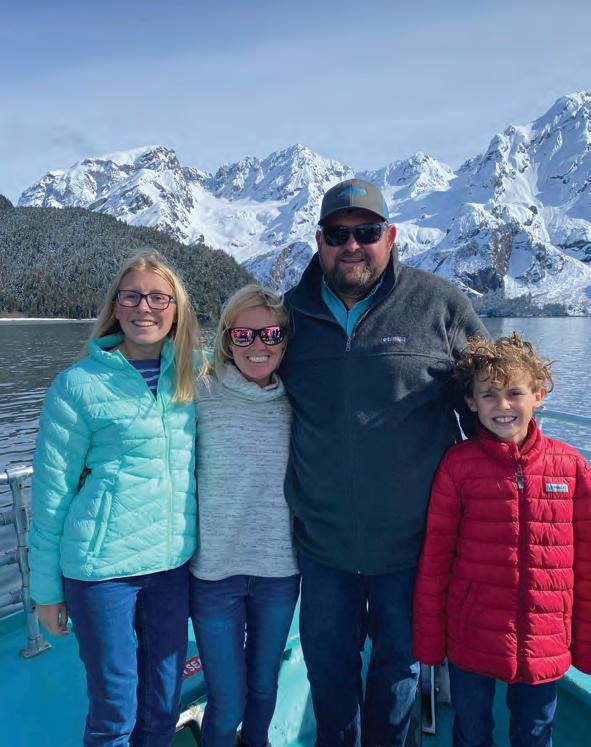


64 Latitudes & Attitudes | #42 Spring 2023
The Bowlin Family
An Alaskan trip
June 1st, 2020 is where our journey begins.
The beginning is one of my most favorite and least favorite places to be. It can be a little intimidating and even scary. But it’s full of anticipation and excitement too.
Our family’s goal is to complete America’s Great Loop, on our Cruisers Yacht 4450. This kind of dream isn’t just about the end, it’s really about the adventure along the way.
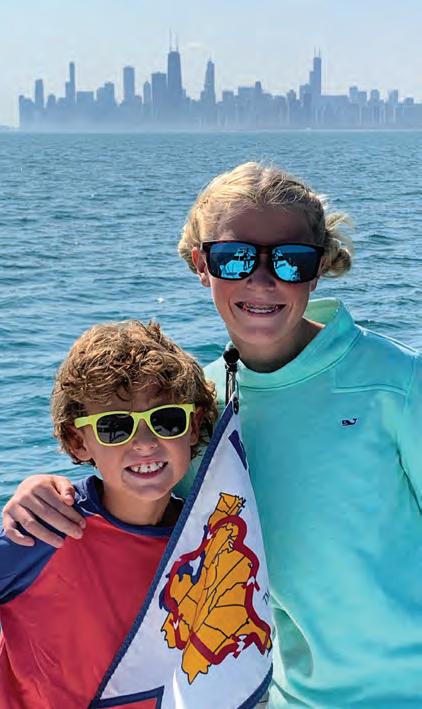
I’ve gotten a lot of questions about The Great Loop. Let me tell you a little more about it and then I’ll dive into how we got started.
The Great Loop is a circumnavigation of the Eastern half of the United States. It involves traveling the Intracoastal Waterway (ICW), New York canals, the Great Lakes, many inland river systems, and crossing the Gulf of Mexico. Most people do this in a counterclockwise direction (which is our plan too.)
There really isn’t a right or wrong way to do The Great Loop. Some people choose to travel quickly and complete it in months. Others take their time and spend years on The Great Loop. Some people do it continuously and others take breaks.
As you might imagine, the majority of people who do The Great Loop are retired, and not a lot have kids on board.
Here are a few more fun facts about America’s Great Loop:
• Less people complete The Great Loop each year than climb Mount Everest.
• Most Loopers average between 5,500 – 6,800 miles depending on which route you take and any side trips.
• The lowest fixed bridge on The Loop is just past Chicago and it’s 19.1 feet high. Our boat is 16 feet with full fuel and water, plus several antennas that put us closer to 21 feet. We will needto take those antennas down to fit under that bridge!
• We will need to go through over 100 locks, including one that acts like a boat roller coaster, The Big Chute.
• The end goal is a full circle, returning to the same place you started. Or, in Great Loop lingo, “Crossing Your Wake.”
The story of our family’s journey around the Great Loop began when we left Brunswick Landing Marina on June 1st.
We left around lunch time with our “buddy boat”, Howaho. Jim and Kelly have become dear friends and we’re very excited to travel the Loop as much as possible with them. Their college-age kids, Cody and Halley, were also visiting for this leg of the journey.

Leaving Brunswick our first destination was Hilton Head Island, SC. However, we allowed two days to get there.
Similar to using Waze or Google Maps in a car, our boat is equipped with several navigation tools. We program our destination and essentially follow the navigational magenta line.
Boat navigating is weird though. While you might look at a huge body of water and think you can go anywhere, in reality you might actually have a very tiny course that you can take your boat on. The draft on our boat is about four feet (we say five to be safe!) It may not sound like much, but you always have to be mindful of the water depth.
www.LatsAtts.com 65
Captain Mary Grace
Great Looping to Chicago
In some cases, we have to make huge navigational detours to stay in deep enough water. Until we began our journey, I had NO idea!
Our boat is capable of going about 25 miles per hour. However, we’re planning to do most of the Loop at a cruising speed between 8-10 knots. This allows us to enjoy the sights and gives us more reaction time with crab pots, shallow water, and other navigational obstacles.

As our journey begins, here’s a few questions we’ve gotten recently:
How long will it take you? When will you finish the Loop?
The simple answer to this question is that we have no idea. We’re working around Brent’s job commitments, Covid19 restrictions, and lock closures (just to name a few obstacles.) We could rush just to finish- which we’ve honestly considered- but we feel like we’d miss out on too many opportunities.
Do you stay in marinas every night?
So far we’ve spent all but two nights in marinas. For now, it’s what we prefer. My next post will cover our first time spending the night on anchor and all the challenges we faced.
When will you be in XXX? (Fill in the blank with any city.)
I have no idea.
Trust me when I say, it’s driving me crazy not having a set schedule that I can put on the calendar months in advance. There are days when I truly don’t know where we’ll be sleeping that
night. And there are other days when we start with a plan, and completely change it.
There are SO many factors that go into traveling on a boat. Weather is a big one. But also, we have to consider tides, boat conditions, and so many other things. For example, we’ve already encountered some severe flooding on the South Carolina coast. For one whole day we had to drive at idle speed to minimize our wake for the flooded communities. Although we weren’t traveling very many miles, it still took hours longer than we planned due to the no wake restriction.
My first time anchoring was one heck of an introduction to it. Not to mention a really terrible way to start the Great Loop. But alas, we lived to tell about it. And we’ve actually grown to enjoy being on anchor!
Now please don’t get the impression that we’ve turned into the kind of people who spend months anchoring in the middle of nowhere. We still aren’t experts, and we certainly don’t do it as often as we’d like to.
The most consecutive days we’ve ever anchored is three. And our total number of nights on anchor is right around 20.
While the numbers may not be that impressive, the memories we have on anchor are certainly some of the best:

• Anchoring in New York Harbor, right behind the Statue of Liberty while we celebrated Mary Grace’s 13th birthday with our friends.
• Being among 100 boats anchored on New Year’s Eve
66 Latitudes & Attitudes | #42 Spring 2023
Travelling the Great Loop
Light & Salty at a park free dock
Our Gold Standard Burgee from America’s Great Loop Cruiser’s Association (AGLCA)
at Cayo Costa State Park and everyone celebrating by honking their boat horns at midnight.
• Anchoring on the Ohio River and watching the election results late into the night with two of our buddy boats.
• Camping (on anchor) next to a waterfall with friends and enjoying breakfast prepared on the beach.
• Waking up in fog so thick in Atlantic City that we could barely see the other boats in our same anchorage.
• Waiting out a long, terrible thunderstorm on anchor after planning to eat with friends. Our dinner was spread out between the 3 boats- each of us had part of it! And we had no safe way to get together.
• Rafting to two of our best friend’s boats for a weekend of swimming, eating, and laughing.
You might notice that a common theme running through this list of memorable anchorages is the word “friend.” Being on anchor with friends makes it infinitely more fun!
It also, in my opinion, makes it a little more safe. We enjoy having a second set of eyes and instruments on the situation. While some people relish the idea of being in seclusion, I much prefer people.
Another aspect to anchoring that we’ve been testing is connectivity.
One of the main reasons we stick to marinas most nights is to ensure our ability to work. Most marinas offer Wi-Fi (though we rarely use it) and they are typically located in areas with
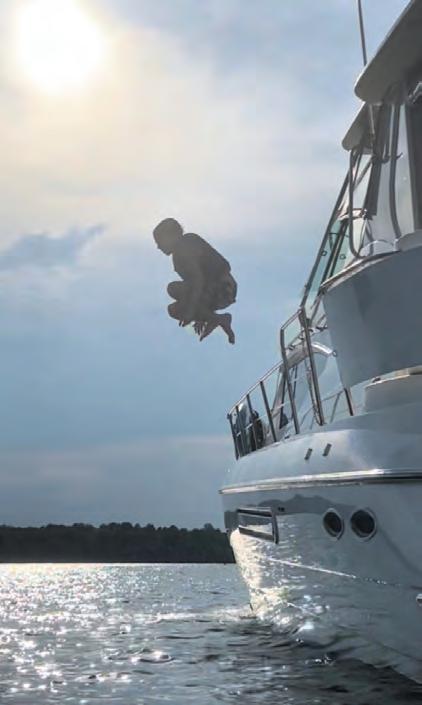
good service. Brent and I both depend on internet and cell for our jobs, and the kids use both for school too. Not to mention, we all enjoy YouTube TV and Disney+ streaming.
Several of our first anchorages were located in the middle of nowhere. Reception was spotty, at best.
Over the last few months we’ve worked hard to upgrade our boat’s connectivity to become the ultimate floating hot spot. (There’s been a huge interest lately in how we do this, so at the end of this post I will put a list of the equipment we use to stay connected.)
Spending time on anchor is so much more appealing when we have all the comforts of a modern home office!
Another thing we’ve gotten much better at is selecting anchorages.
I cringe when I think about our first few anchorages. As I mentioned, they were in the middle of nowhere. They were also often in bodies of water that were subject to major tides and current changes. Neither of those conditions are ideal for a good experiece.
Besides word of mouth, we like to use Waterway Guide to find good, reliable anchorages. We purchased the book and also have a subscription. Through trial and error, we learned that when the anchorage isn’t rated highly… it isn’t for us!

Although we’ve learned a lot and made several adjustments, we still have a few more issues to tackle before we’d be ready for long term anchoring.
Our boat does not currently
www.LatsAtts.com 67
Miller fishing at Jarrett Bay
Miller jumping off the boat
have a watermaker. And we only have 140 gallon fresh water tanks. For a family of four, that doesn’t last long enough.

We’ve actually had a really good time experimenting and figuring out what works for us without being too uncomfortable. we use a lot of paper plates now. And when we’re on anchor we use plastic cups and silverware too. Eliminating the need to wash dishes saves us a lot of water.
On the other hand, our trash piles up quickly. So it’s a balance!
We also need to make some modifications to our current battery load in order to be able to power our fridge without the use of our generator. This project is currently in the works, and I’ll look forward to updating with our solution soon.
All of this about anchoring, and I haven’t mentioned the best part… unobstructed sunrises and sunsets!
Anchoring always seems to be a hot topic when I post pictures. If you have any questions, leave a comment and I’ll be sure to answer them. As I said at the top, we’ve come a long way and learned a lot. But we also have a long way to go!
About the Author:
Sarah Bowlin lives on her boat, Light & Salty, full-time with her husband and two kids.
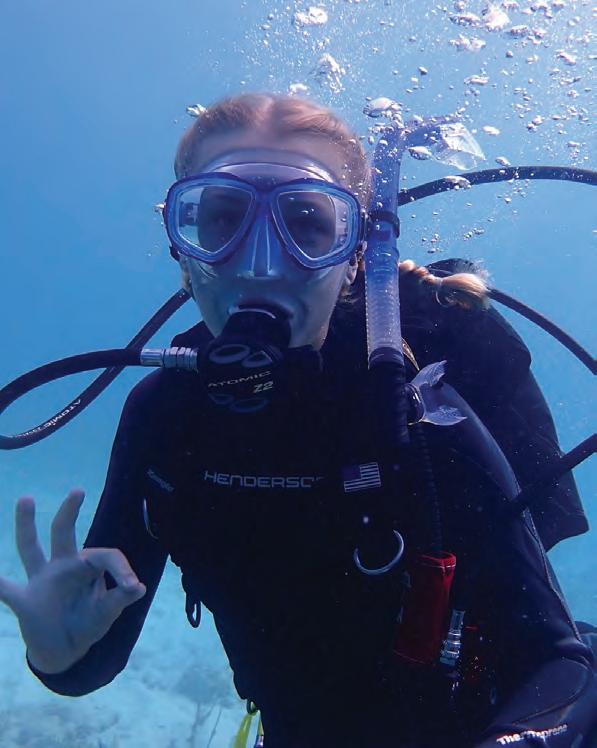
As a family, they’ve visited all 50 states and most recently, completed America’s Great Loop. The website www.momwithamap.com details their adventures and inspires others to travel.

Travelling the Great Loop 68 Latitudes & Attitudes | #42 Spring 2023
The Bowlins at the Fort Lauderdale International Boat Show
SCUBA-certified Mary Grace


www.LatsAtts.com 69
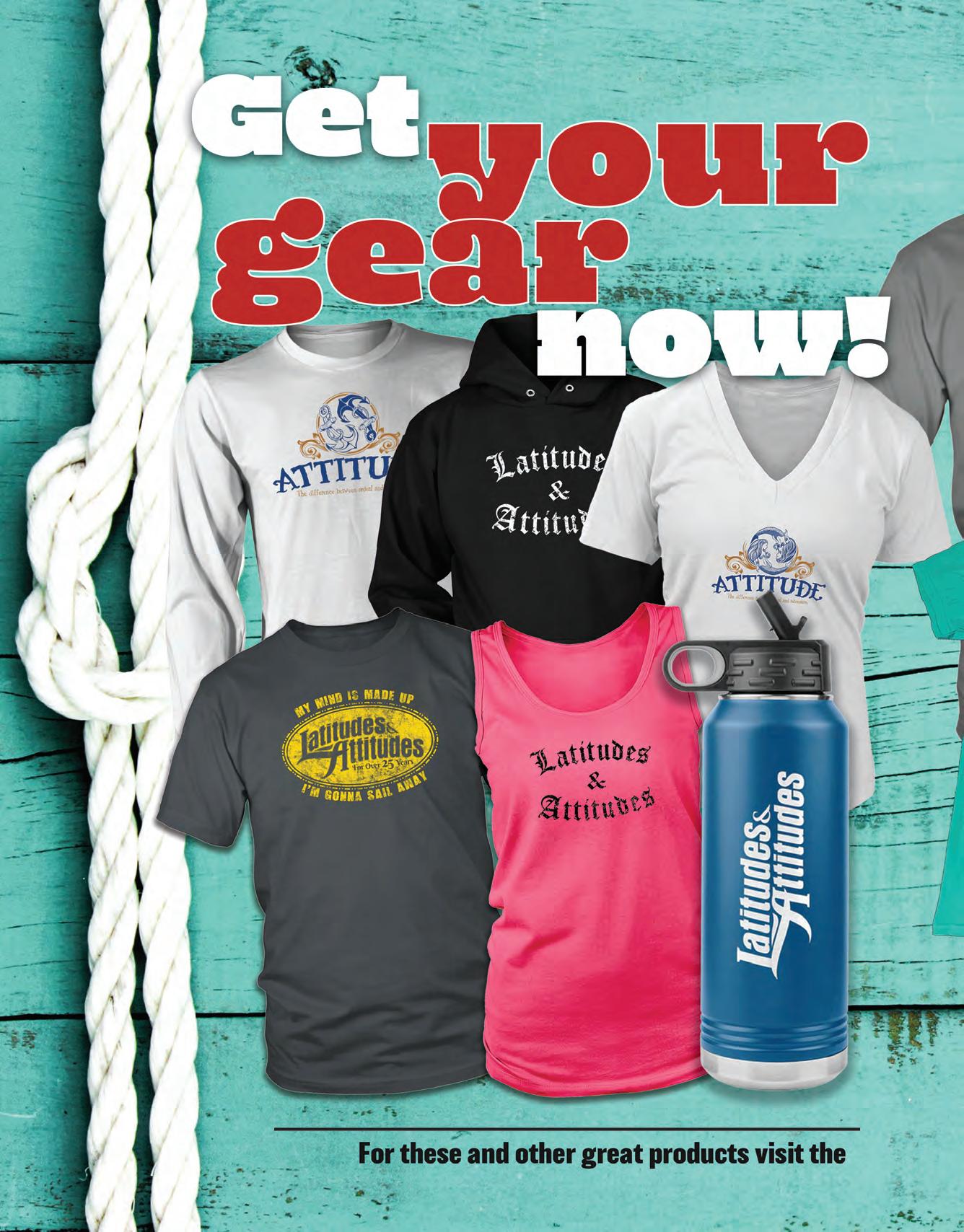

Navigation Celestial of Primer A
By Capt. Jeff Werner

Over the past thousand-plus years, instruments and techniques for celestial navigation were developed to find the latitude and longitude of any place on Earth. From the Arabian caravan navigator who used the kamal to guide his camels across the desert to the bazaars in Timbuktu, to the quadrant and astrolabe that Christopher Columbus used on his voyage of discovery in 1492. Running down the
latitude and taking lunar distances to determine longitude were practical techniques for navigators at sea until 1850. Today, cruising sailors can use a modern marine sextant and the Marcq Saint-Hilaire (or altitude intercept method) method developed in 1875. Regardless of the instruments and techniques used throughout the ages, there is one constant: It’s all about altitude!
72 Latitudes & Attitudes | #42 Spring 2023
What Is Celestial Navigation?
- Taking a sight with a sextant to measure the angle above the horizon of the Sun, Moon, planets, or stars.
- Reducing that sight using a nautical almanac and complex spherical trigonometry formulas.
- Or even easier, reducing that sight with sight reduction tables or sight reduction software to plot a line of position (LOP).
- It is used to navigate on the open sea greater than 50 nautical miles from shore, or coastwise offshore.
The Key to Celestial Navigation:
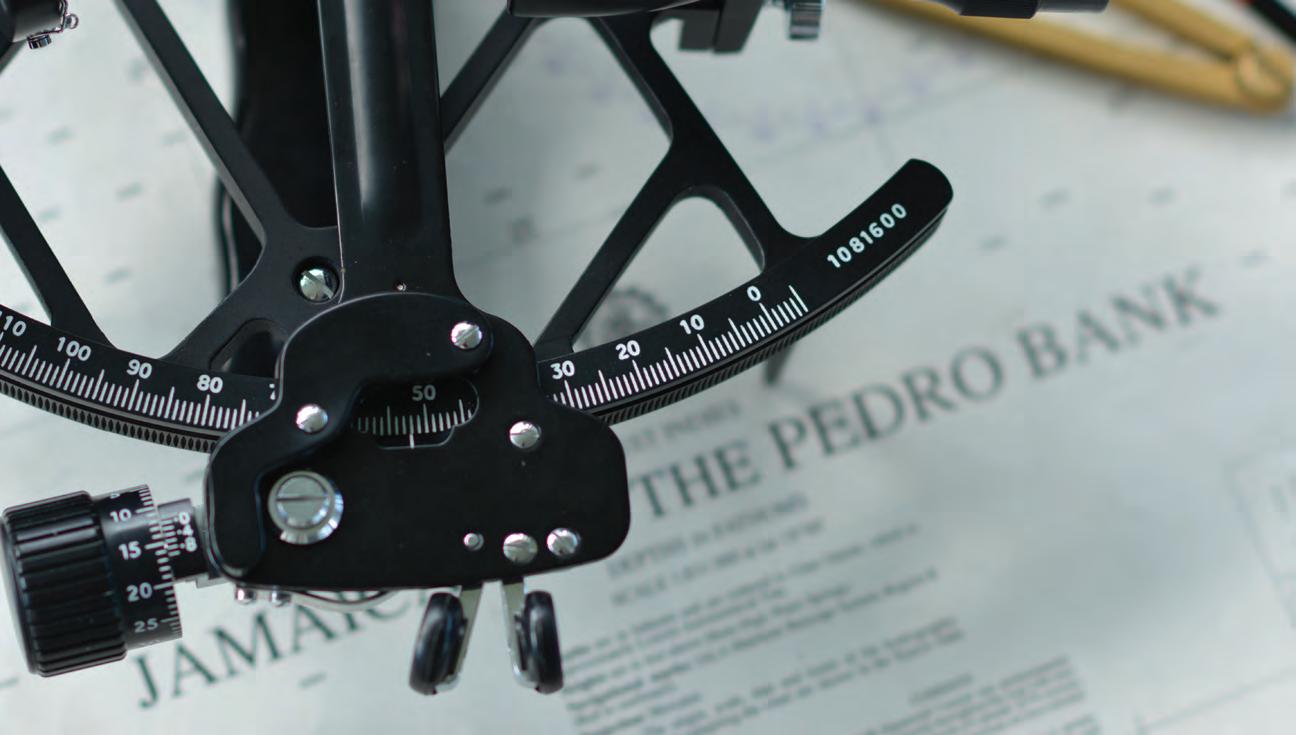
- Determining the distance and direction from a point directly under a celestial body, known as the geographic position (GP), to where your yacht is at sea to draw an LOP.
Finding your Latitude & Longitude:
- One LOP does not give a fix.
- Two LOPs or a running fix gives a good fix.
- Three LOPs give the best fix.
- These are the exact same rules used in coastal navigation with a hand-bearing compass.

www.LatsAtts.com 73
Tools Needed:
- Sextant for measuring the altitude of celestial objects.
- Chronometer or watch for timekeeping when measuring the altitude of celestial objects.
- Notebook for recording altitudes of observed celestial objects.
- Sight reduction forms, which are templates for finding an LOP of celestial objects, latitude from a noon sight of the Sun, or latitude from a sight of Polaris.
- Nautical almanac for the GP of observed celestial bodies for every second of the year.
- Sight reduction tables for spherical trigonometry solutions to the navigational triangle in a lookup table format. This format is similar to printed telephone directories of years past.
- Universal plotting sheets (UPS) to create a “local” chart to plot LOPs to obtain a fix.
- Parallel ruler, square protractor, and dividers for plotting on a UPS.
- Pencil and a big eraser.
Modern Marine Sextant:
- Is a double-reflecting altitude measuring instrument.
- It has an arc of 60° in length or 1/6 of a circle, hence the name “sext”-ant.
- It measures angles from 0° to 120°.
- For celestial navigation purposes, the sextant only needs to be able to measure altitude to the zenith or 90°.

- The ability to measure up to 120° allows the sextant to use horizontal angles to determine a vessel’s location when close to shore using a technique similar to that of a hand-bearing compass to complete a threepoint fix.

The choice of a sextant to purchase is fairly simple. When learning how to take sight of celestial objects, use a plastic sextant such as the Davis Mark 15. For under $200, you have an instrument, with practice, that will give you celestial fixes accurate to within five miles of a GPS fix. Once you are comfortable that you have mastered your sextant rocking technique, it’s time to graduate to a metal sextant. And you can stow your plastic sextant in your ditch bag for emergencies.
Jeff Werner has been a yacht captain for more than 30 years. He is a certified instructor for U.S. Sailing and the RYA. Jeff is a U.S. Sailing celestial navigation instructor and has completed over 100,000 miles of passage making under sail.
74 Latitudes & Attitudes | #42 Spring 2023
///////////////////////////////////////////////////////////////
A Primer of Celestial Navigation
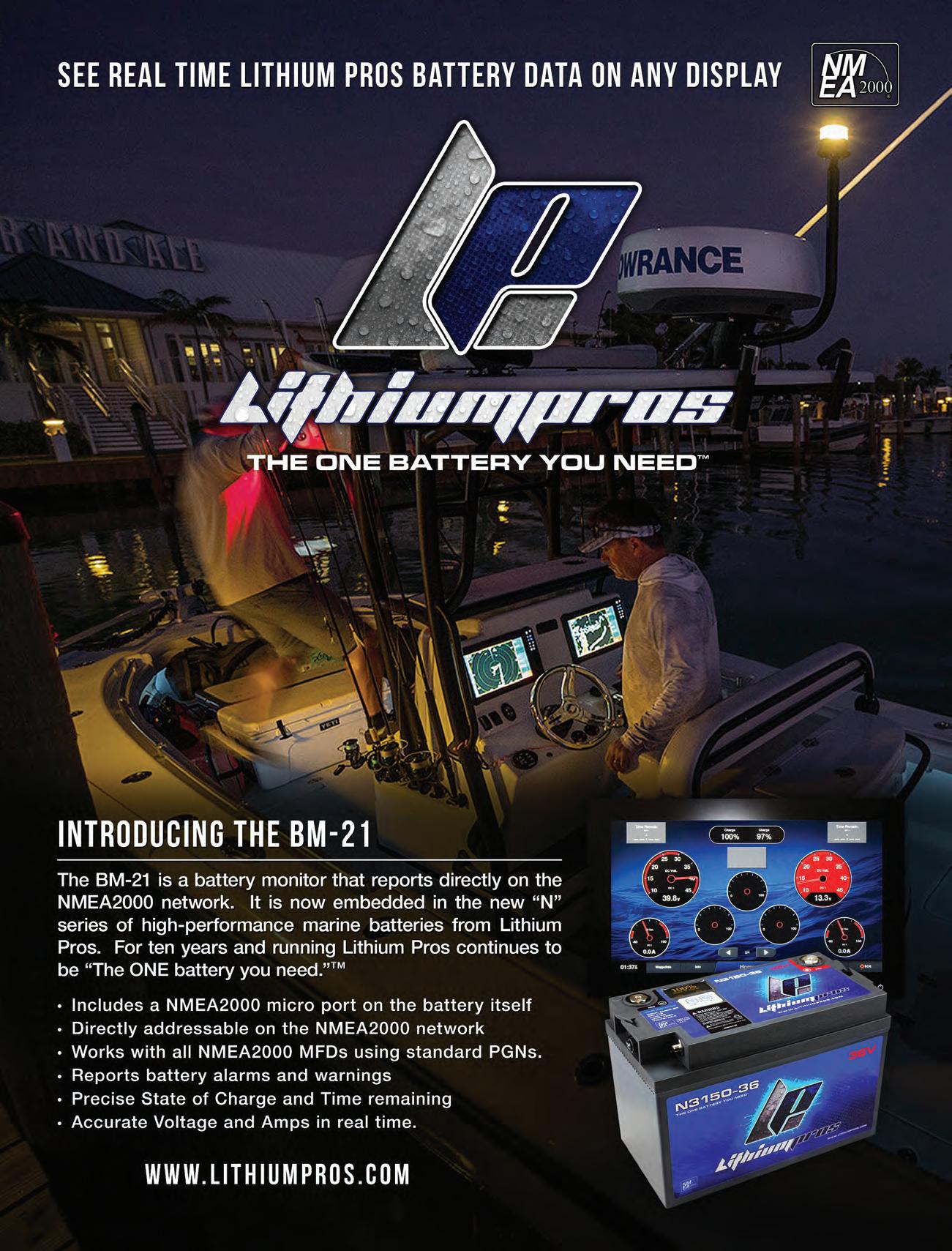
WHAT’S OUT THERE? CRUISING CATAMARAN
The first Antares Hybrid Catamaran hits the water.
With technology, safety, and affordability of key hybrid components changing the cruising industry Antares Catamarans is leading the luxury catamaran segment with their latest integration of hybrid propulsion. Antares Catamarans have been designed for the serious liveaboard cruisers wanting to explore the world in safety, comfort, and luxury. Antares takes a conservative approach to design changes and they work closely with their customers to consider improvements, upgrading the boat to maintain their desired position as “The World’s Best Liveaboard.”
The standard items that have made Antares great have not changed. They insist on shaft drive propulsion, fully skegged rudders, long keels, a handmade cherry interior, a fully enclosed cockpit, and exceptional build quality. Antares believes the parallel hybrid design and luxury living advantages of their hybrid are changing the industry, It’s good for the cruising community and the environment, and it’s a hell of a lot of fun to leave your anchorage under electric power, as silent as the breeze.
The new Antares hybrid blue-water catamaran provides many additional advantages:
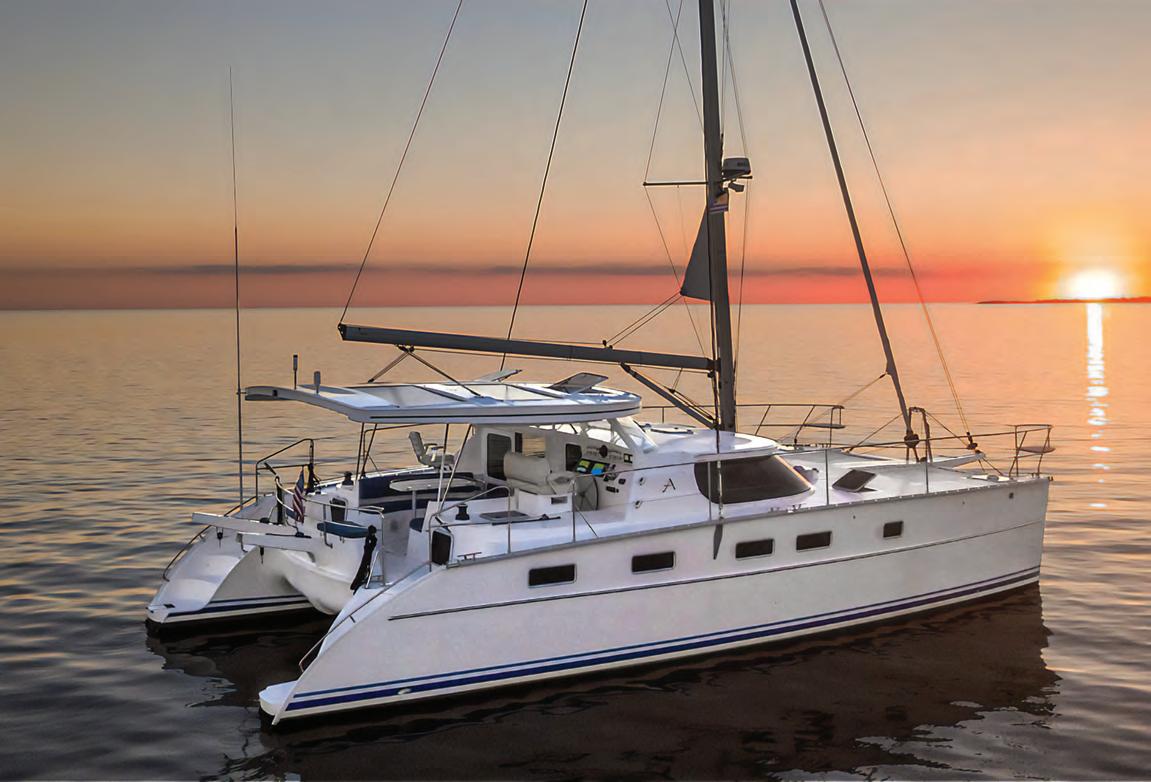
● 2+ kWs of solar capacity for recharging batteries
● 40 kWs of Victron Lithium for propulsion, electric appliances, air conditioning, and other powerhungry amenities

● 600+ watts of regeneration using the propellers while sailing at 7kts
● All electric motoring range of 20 – 25 nautical miles
● No need for a Genset aboard, eliminating one diesel engine
● Leaving a greener, cleaner wake while exploring the world
The most important consideration for the Antares hybrid concept is the use of parallel propulsion technology. A parallel hybrid, as the name implies, utilizes a standard marine diesel engine in parallel with an electric motor for propulsion. The advantage of this design is that you still have two diesel engines that can be used for propulsion and power generation, with two electric motors in
parallel, to propel the boat using either method or any combination of the two.

The Antares Hybrid uses all Victron components, including 40 kWs of Lithium batteries, which provides more than just propulsion. Most cruisers spend time on the hook, in a beautiful anchorage, enjoying a cocktail at sunset with other cruisers. Roughly 90% of the time living aboard is anchored vs. sailing. The extra lithium storage and solar can keep the beer cold, the ice frozen, and the boat’s interior cool.
By any standard, the new Antares Hybrid is luxurious living in a tropical paradise. You can live like this for about two weeks during the rainy season before flipping on an engine or for many months during the dry season. Check out the new Antares Hybrid and you’ll see why their parallel hybrid design and luxury living advantages are changing the industry.



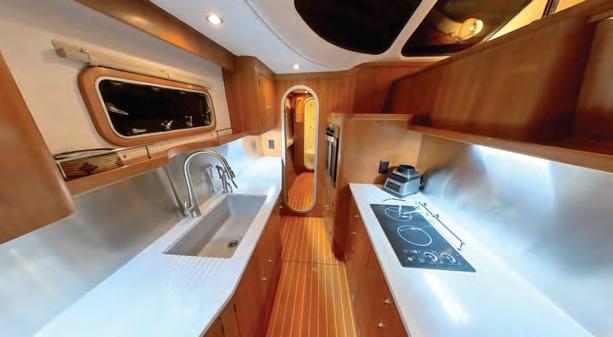

ANTARES HYBRID LOA 44’ Beam 21’9” Draft 4’ Displacement 19,500 lbs Engines 2x Yanmar 40 hp Fuel 150 USG Fresh Water 120 USG Holding Tanks 2 x 30 USG ANTARES HYBRID GET ALL THE FACTS: www.antarescatamarans.com
WHAT’S OUT THERE? POWER CRUISER

Bavaria Yachts has added another model to its successful SR range - the BAVARIA SR36. An intelligent space concept and a sporty, elegant design, in combination with extremely safe handling characteristics, make the BAVARIA SR36 unique and made for perfect days on the water with family and friends.
After the BAVARIA SR41, the BAVARIA SR36 celebrated its world premiere in January 2022 at boot Düsseldorf. Since then, she has recently won the BoB, which stands for Best of Boats and is one of the biggest awards for powerboats in all of Europe. The international jury of the BoB Award had selected a total of 18 motorboat finalists in four categories. The winners were announced at the BOOT & FUN trade fair in Berlin. Best boat of the year 2022 in the category “Best for Family” was the BAVARIA SR36, taking home the second BoB Award for BAVARIA YACHTS.
The BAVARIA SR36 is also nominated for the 2023 European Powerboat of the Year Award and the 2023
Motor Boat Award. Both awards will be presented at the boot 2023 in Düsseldorf, just in time for the official world premiere of the newest member of the family, the BAVARIA SR33
Together with the BAVARIA development team, the Italian designer Marco Casali drew up the sporty, elegant lines of the motor yacht, which is 38.4 feet long and 12.8 feet wide and boasts a bathing platform as standard. Particularly striking are the sweeping hull shape, large window areas in the superstructure, and plenty of space on the bow and stern.
The BAVARIA SR36 is the continuation of SR Line. The BAVARIA SR41’s great success confirmed to us that Bavaria understands its customers’ desires and is able to implement them successfully. With their new concepts, Bavaria offers their customers a new attitude to life on board, as well as the advantages they have always expected from a BAVARIA product. With the BAVARIA SR36,

BAVARIA SR36
customers will be impressed with the clever optimized solutions.

The BAVARIA SR36 shows creativity in the design of the cockpit and superstructure since life on modern motor yachts takes place primarily on deck and in the cockpit. Alongside the classic hardtop version, which can be optionally closed with a door, the BAVARIA SR36 is also available as an open version, with a low windscreen. The hardtop roof becomes a stable Bimini with a sunroof. Or simply BAVARIA Open Top, as BAVARIA YACHTS calls it. “The new Open Top version combines the comfort of a hard top with the sporty appeal and handling sensation of an open yacht. Plenty of space on board the BAVARIA SR36 is provided by an intelligent floor plan, including below deck. Two generous cabins and an equally spacious lounge offer plenty of comfort and privacy for all guests on board. “When designing the BAVARIA SR36, BAVARIA deliberately started with the famous piece of blank paper. However, during the process, they had a clear idea of the advantages of a BAVARIA yacht and the important design elements of the SR range, which they wanted to reinterpret for the BAVARIA SR36. The entirety of the interior was recreated precisely as a model in their development studio, allowing them to get a real feeling for the space, alongside the 3D computer models.
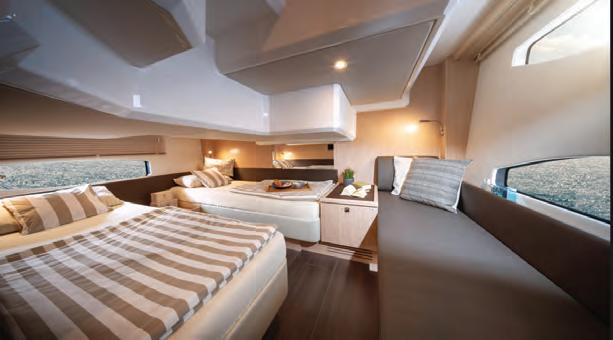
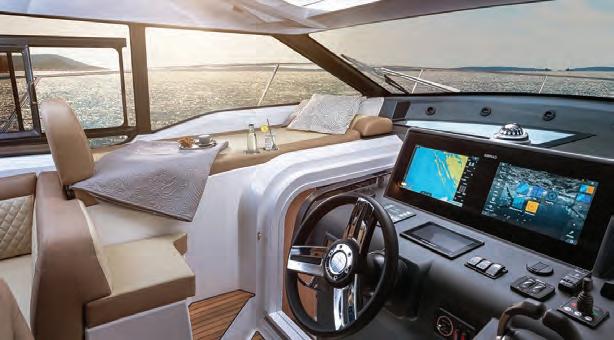

As the judges who awarded the BAVARIA SR36 the Best of Boats Award 2022 stated, “This comfortable and spacious family boat has a lot more to offer than one would expect from a boat measuring 36 feet“. She beat the 18 other boats in the competition. She has won the most coveted boat award in Europe. Now available in the U.S.

BAVARIA SR36 LOA 38’ 4” Beam 12’ 8” Draft 2’ 4” Engines Twin Volvo Penta D4-300 EVC Fuel 132 USG Fresh Water 66 USG Cabins 2
GET ALL THE FACTS: www.bavariayachts.com
WHAT’S OUT THERE? MONOHULL
From a yard that has produced more than 6,500 yachts over the last 43 years and is considered one of the finest brands in the world, X-Yachts is now poised to boast the Xc 47 as the best cruiser they have ever built.
The Xc 47 marks the beginning of a completely new generation of XCruising with a concept built on years of experience and a desire to accommodate the growing number of sailors looking for a true bluewater cruiser. Most sailing today, even bluewater cruising, is performed with a small crew, often just a couple of crew members. The development team has kept this in mind right from the outset of the design process. Some of the design features and functions have been seen before on other premium yachts, but on the Xc 47, they are executed with an unprecedented sense of style. The cockpit layout has been designed to give the helmsman the capability

of handling all lines. Four winches – two on each side, are positioned in front of the wheels. All relevant trim lines are led in channels under the deck from the mast to the steering position, with jammers reachable for the helmsman. The traveller has been re-positioned from the cockpit to a position in front of the sprayhood. Apart from creating an efficient workspace, this cockpit arrangement leaves room for a comfortable living space, with the sail handling concentrated to the area at the helm station. Near the transom, a large aft deck accommodates a comfortable full-width seating area behind the wheels, as well as a nice sunbathing area. As it should be on a true offshore yacht, the cockpit is deep, well protected, and with a closed transom.
The first thing most people will notice when looking at the lines, is the shape of the superstructure.

X-YACHTS X c 47
To make sure the Xc 47 is capable of carrying provisions for long periods of time, the yacht has efficient storage volumes hidden behind the sturdy, yet elegantly crafted surfaces of the interior.
The hull lines have maintained the deep V-shaped bow sections, generous rocker, and higher stern overhang from previous Xc models, providing the well-known comfortable seagoing characteristics. Furthermore, the aft of the Xc 47 has a modern, wider stern section, incorporating a subtle soft chine that provides extra form and stability, improved performance, and more space in the aft cabins.
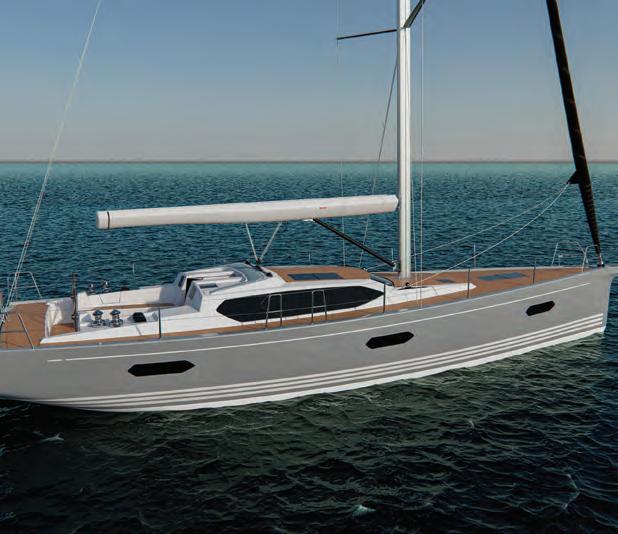


The Xc 47 is built from a full vacuum infused epoxy/eglass sandwich, together with their famous signature steel frame. Areas exposed to high loads are reinforced with carbon fiber, part of making the yacht stronger without adding excess weight.
With an expected launch in early 2024, apart from the many well-known X-Yachts Qualities, such as epoxyinfused hull, steel frame, and rod rigging, the new Xc 47 bluewater cruiser from X-Yachts, also includes a bow thruster, a large combi charger/inverter, carbon bowsprit, honey-comb floorboards, and other technical features, setting a new standard in the market.
XC - 47 Designer X-Yachts Denmark LOA 49’11” Hull Length 46’11” Beam 15’0” Draft 6’7” Ballast 12103 lbs Engine Diesel 109 hp Fuel 132 USG Water 169 USG
GET ALL THE FACTS: www.x-yachts.com


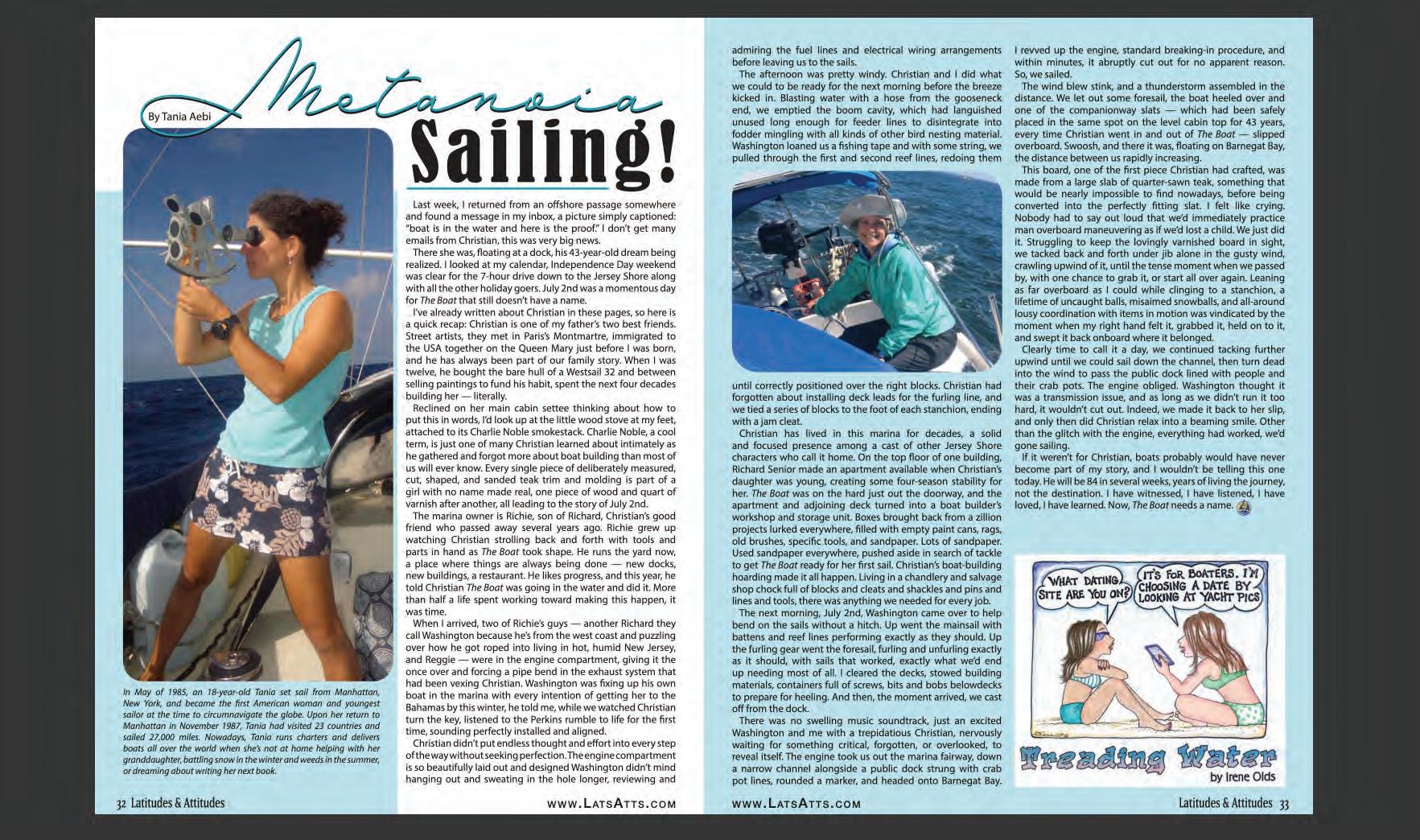

4 issues /year 14 99 $ DO NOT MISS OUT – SUBSCRIBE NOW • Access the Lats & Atts Digital Magazine with tons of great stories • Download the current issue for offline reading • Get 10% off at the Lats & Atts store for gear and apparel www.latsatts.com/magazine Online Digital Magazine or per issue $ 4.99 82 Latitudes & Attitudes | #42 Spring 2023


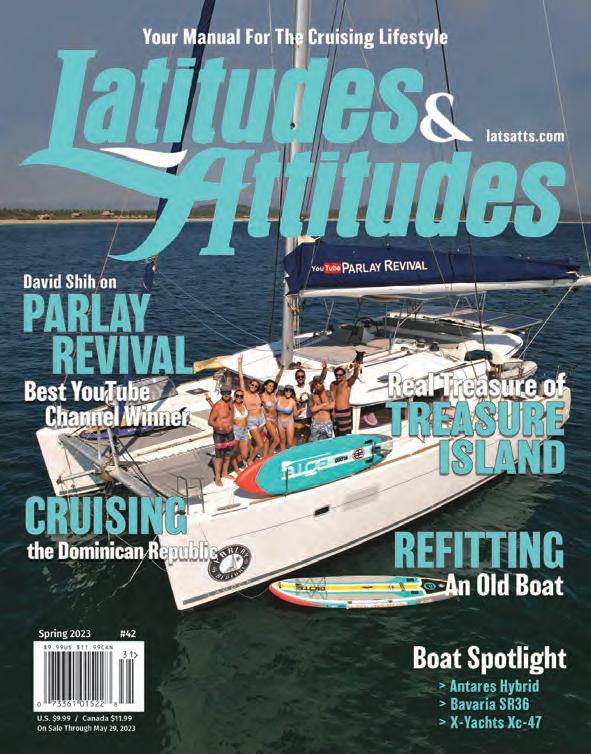
FULL YEAR GET A OF GIANT PRINT ISSUES FOR ONLY 29 99 $ SUBSCRIBE NOW! Delivered directly to you! www.latsatts.com/magazine □ Check Enclosed □ Bill to my credit card (Visa/MC/Amex/Discover) Card # Exp. Date / CVV Signature Date signed / Name Phone Address City State Zip/Country Code Email A09/22 □ 4 issues (One full year!) delivered to you ...................... $29.99 □ 4 issues DIGITAL .......................................................... $14.99 Outside of US add $10 for Canada/Mexico and $30 for International. Print Subscriptions include free access to the digital magazine. Get the print magazine in your mailbox and read online on your boat. Print Magazine
Underway!
 By Kevin Spellman - Sunset at Tyrell Bay, Grenada
By Kevin Spellman - Sunset at Tyrell Bay, Grenada
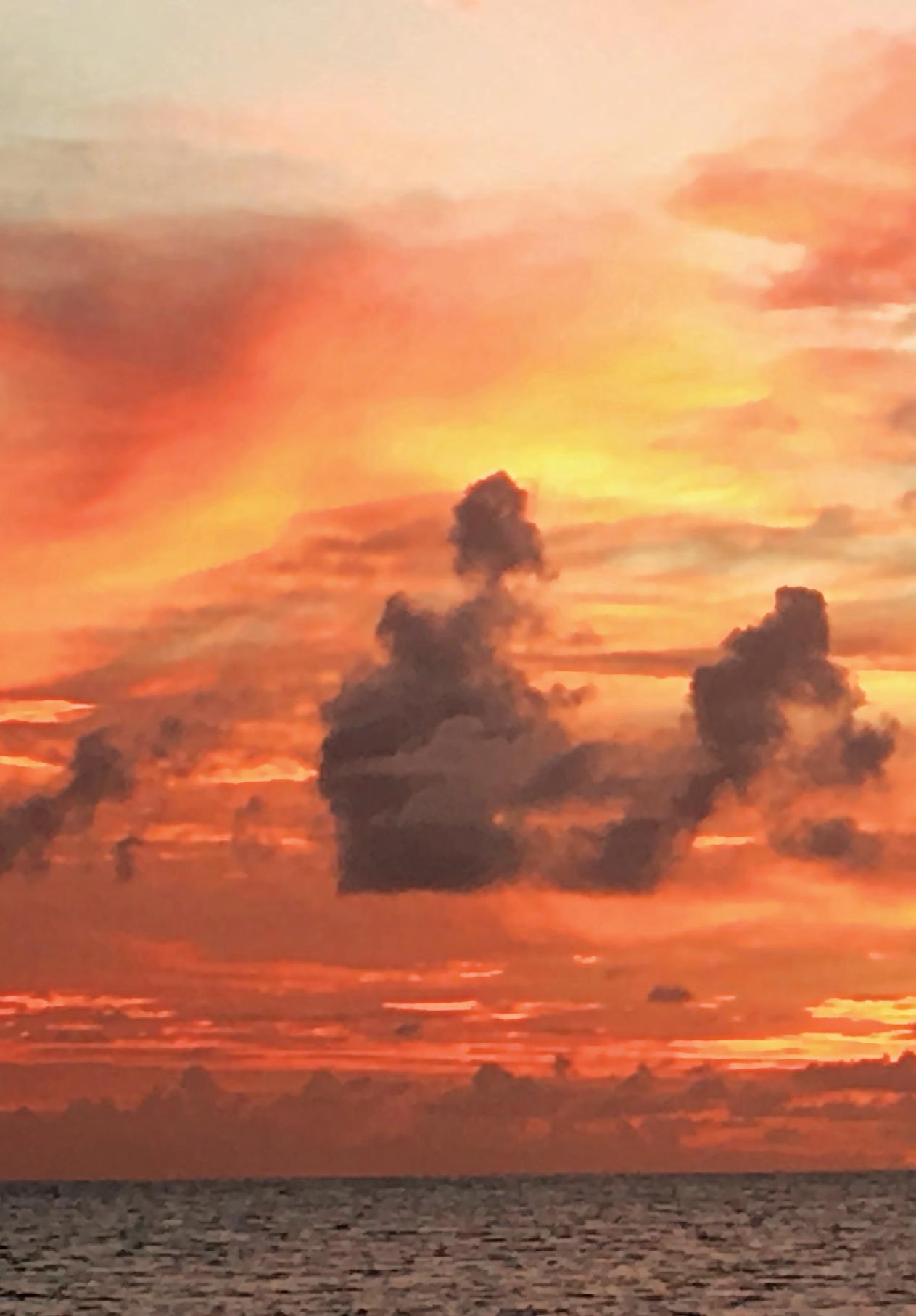
Ever wonder why people love the boating lifestyle?

Well, here in the Underway section, folks from all over the world show us what it’s really like out there. If you have a photo you think tells a good tale, why not send it to us? Tell us who took the picture and where it was taken. We will probably throw it into our “digital pile” and use it some day. We won’t send you any money, but you will be famous worldwide! Email to: submissions@latsatts.com

Underway!


Tim and Mary Kenyon (from South Dakota) with the Statue of Liberty while on their 2018 6,000-mile Great Loop trip in Nellie May
 After the storm - Oxford MD, Campbell’s Boatyard
By Jim - Selby Bay Marina, Edgewater, MD. Moon in the Morning
After the storm - Oxford MD, Campbell’s Boatyard
By Jim - Selby Bay Marina, Edgewater, MD. Moon in the Morning
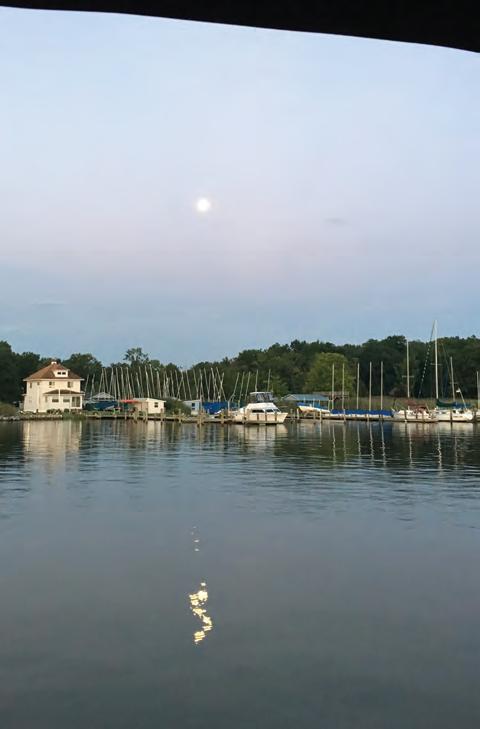
 By Tom - Cow Wreck beach, Anegada, BVI’s
By Tom - Cow Wreck beach, Anegada, BVI’s

 By Marilyn Webb - sunset Emery Cove, CA
By Marilyn Webb - sunset Emery Cove, CA
Underway!



 By Melanie Farmerphotos from the Golden Fleece
By Michael - Stella the goldendoodle out for a cruise aboard Hart’s Desire. Taken in Alabama
By Joe and Juliette - Aboard s/v Osprey, in Warderick Wells, Bahamas
By Robert Feld
By Melanie Farmerphotos from the Golden Fleece
By Michael - Stella the goldendoodle out for a cruise aboard Hart’s Desire. Taken in Alabama
By Joe and Juliette - Aboard s/v Osprey, in Warderick Wells, Bahamas
By Robert Feld
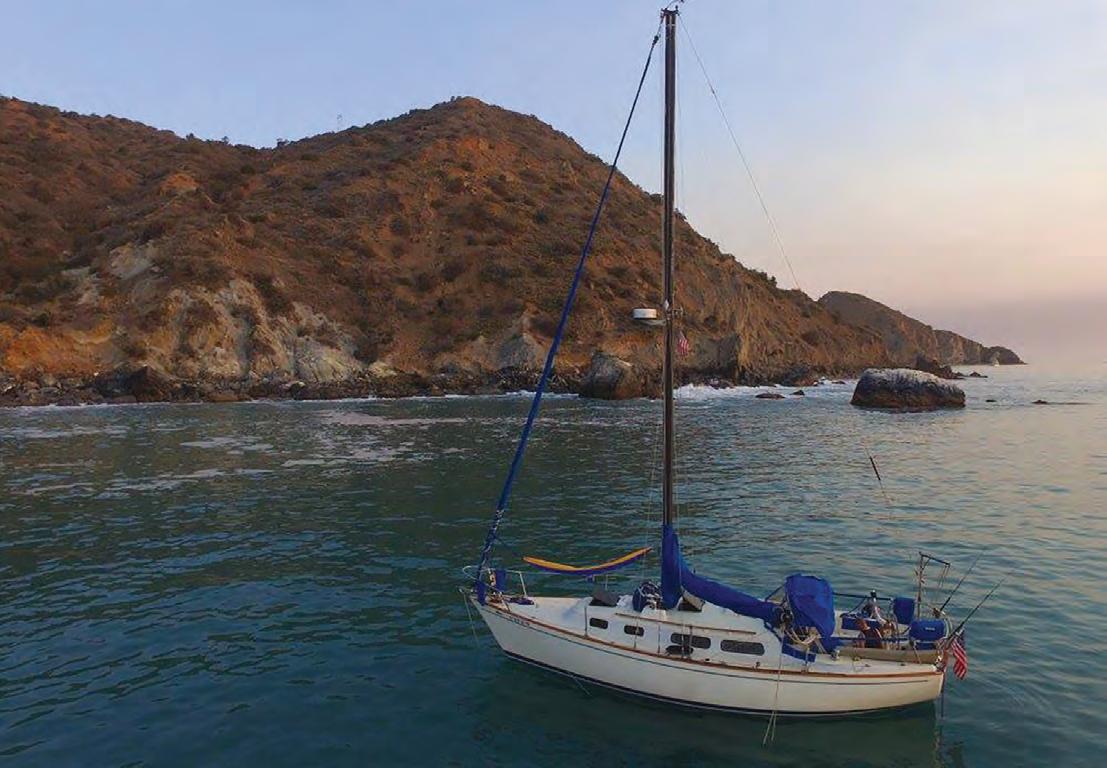

 By Terry Hoganwondering who are the other types? St Michaels in Tunisia
By Terry Hoganwondering who are the other types? St Michaels in Tunisia
Underway!



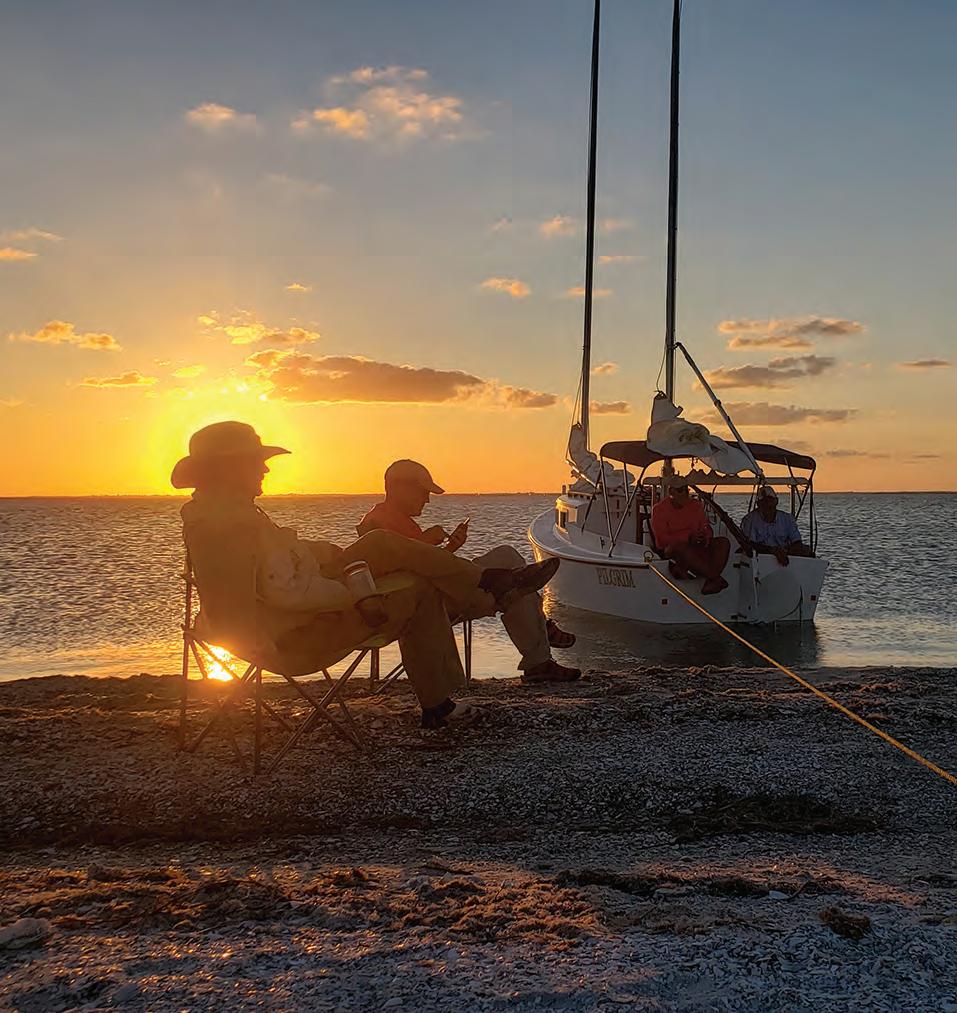 By Brian
By Brian
 By Ziggy - Lavengood, Houston, TX
By Robert Feld - Catalina Sunset
Moses the famous sailing dog aboard s/v Aria, Taken in Bonaire
By Zachary - Stella Maris off the beaches of Biloxi in the Mississippi Sound
By Scott Cabo Sunrise
By Ziggy - Lavengood, Houston, TX
By Robert Feld - Catalina Sunset
Moses the famous sailing dog aboard s/v Aria, Taken in Bonaire
By Zachary - Stella Maris off the beaches of Biloxi in the Mississippi Sound
By Scott Cabo Sunrise
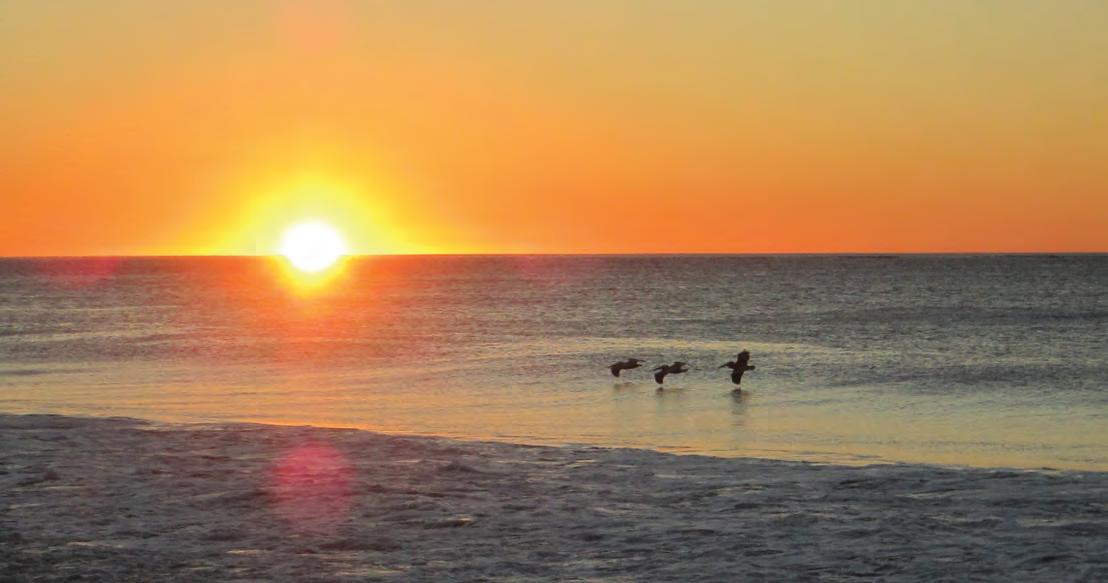

 By Chris, Safe Harbor Pilots Point Marina
By Chris, Safe Harbor Pilots Point Marina
Underway!


 By Phil Cathey - Lake Walulla
Gorge 200 miles east of Portland, Oregon on the Columbia River aboard S/V
We Be Jammin a Gemini
10.5Mc catamaran
By Cindy Holden - “Gallery” in the cockpit, on Tenacity in Olhao, Portugal
By Carol Speltz -
By Phil Cathey - Lake Walulla
Gorge 200 miles east of Portland, Oregon on the Columbia River aboard S/V
We Be Jammin a Gemini
10.5Mc catamaran
By Cindy Holden - “Gallery” in the cockpit, on Tenacity in Olhao, Portugal
By Carol Speltz -




 By Deb Lauser - Picture of S/V Evermore, an Elan Impression 434, anchored in Shaw Bay on the Wye River on the Chesapeake Bay, early this October
By Jeremy - So Cal
By Dianna PeercyLake Erie
Enchant Returning after celebration of life
Richard Taliani
By Deb Lauser - Picture of S/V Evermore, an Elan Impression 434, anchored in Shaw Bay on the Wye River on the Chesapeake Bay, early this October
By Jeremy - So Cal
By Dianna PeercyLake Erie
Enchant Returning after celebration of life
Richard Taliani

 By Mike Gun
By Carol Doskocl -
By Mike Gun
By Carol Doskocl -

 Their littlest sailor
By
in Huntington Bay, Long Island, NY
By
Their littlest sailor
By
in Huntington Bay, Long Island, NY
By
 Baudette
Baudette
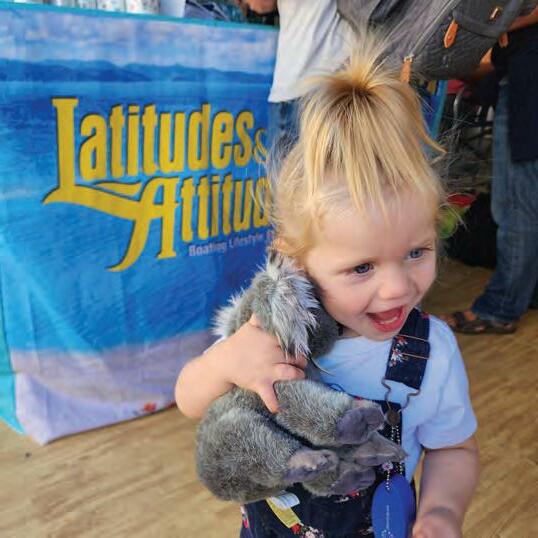

Underway! kiddos
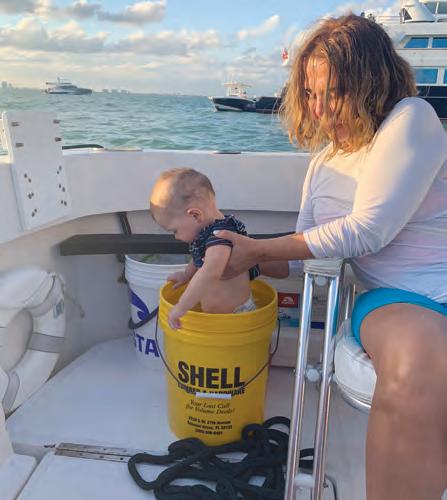

 By Peter Isern
By Chris StokesIn the Bahamas
By David Stone - of Lily (4) and Belle (6) on a hot motor south to Rock Hall, MD on the Chesapeake Bay.
Mike
- Harrison sailing on Casco Bay, Maine
By MaryLyra on s/v Tipsy Gypsy
By Peter Isern
By Chris StokesIn the Bahamas
By David Stone - of Lily (4) and Belle (6) on a hot motor south to Rock Hall, MD on the Chesapeake Bay.
Mike
- Harrison sailing on Casco Bay, Maine
By MaryLyra on s/v Tipsy Gypsy
Underway! kiddos
 By Karl Fisher
By Karl Fisher
 - Dominick, Preston, and Ryan in Catalina Island, CA
By Nathan Boom
- Dominick, Preston, and Ryan in Catalina Island, CA
By Nathan Boom
 By JC
By JC

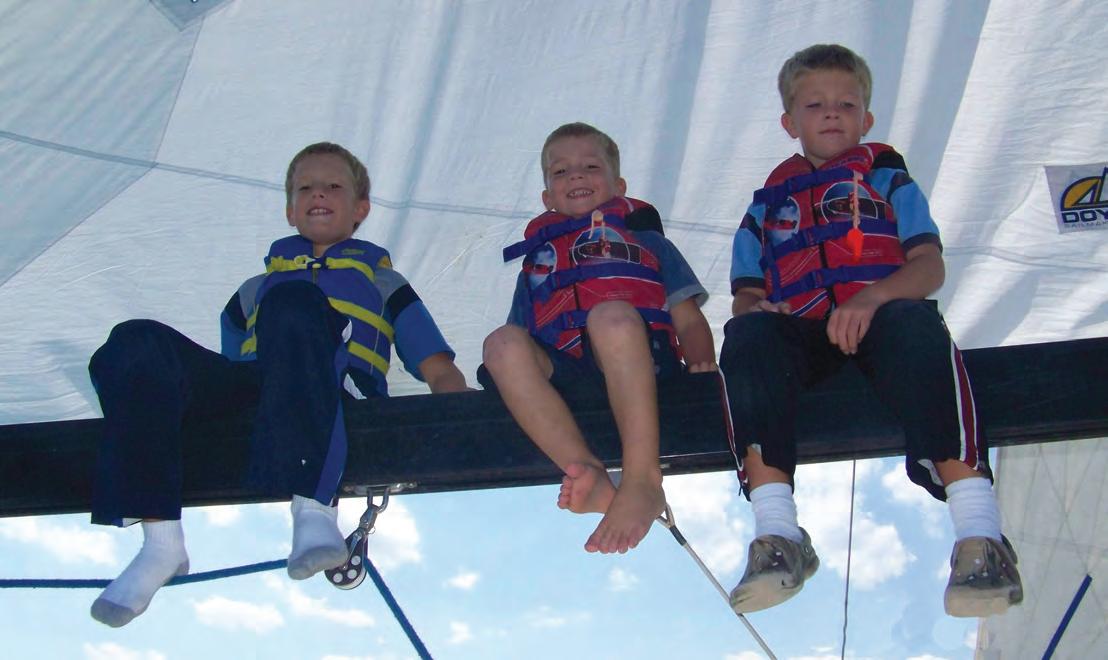

 By Leslea - Enjoying the sunset on Cuttyhunk Island, MA
By Leanna Brugman - taken on Eastwood Lake, Dayton, OH
Ben in Harbor Springs, MI
By Leslea - Enjoying the sunset on Cuttyhunk Island, MA
By Leanna Brugman - taken on Eastwood Lake, Dayton, OH
Ben in Harbor Springs, MI
OUR READERS’ FAVORITES Unburied Treasures: Best of the Southeast
Our team at Latitudes & Attitudes likes to give the readers what they want – after all, you’re the folks that make all this magic possible. We also love to introduce new features that speak to the readers and their desire to get out and cruise. I mean, we are the #1 cruising lifestyle magazine on the planet, that’s kind of our whole agenda. Those of you out there in Lats & Atts Land have consistently cried out for more: more tales of adventure, more information on where to explore, and more content drawn from the fans of the magazine. For this reason, we’ve created a new feature called Unburied Treasures, all about our readers’ favorite things across the cruising globe (raindrops on roses and whiskers on kittens…).
So, a few months ago, we gave you, the readers, a mission: tell us your favorite spots to eat, drink, cruise, and adventure in the Southeastern region of the USA (North Carolina, South Carolina, Georgia, Florida, Alabama, Mississippi, Louisiana, and Texas). We were

excited to receive lots of responses about YOUR favorite marinas, eateries, anchorages, and destinations. After pouring over the responses, we’ve compiled a list, for your reading pleasure, of the “best of the best” in the Southeast. We hope this inspires you to explore and live your best life.

Want to be a part of something bigger than yourself?
Telling us your unburied treasures and being featured in the magazine is a great way to start! We’ll be running another one of these features in our upcoming Summer issue. However, the only way to participate is by answering our survey, which will be posted to our social media channels. Get those mouse-clicking and keyboardclacking fingers ready over the next few months, and be sure to follow us on Facebook and Instagram to help us out! All you have to do is look up “Latitudes & Attitudes” on either of these platforms.
98 Latitudes & Attitudes | #42 Spring 2023
< Photos by Joy McPeters >


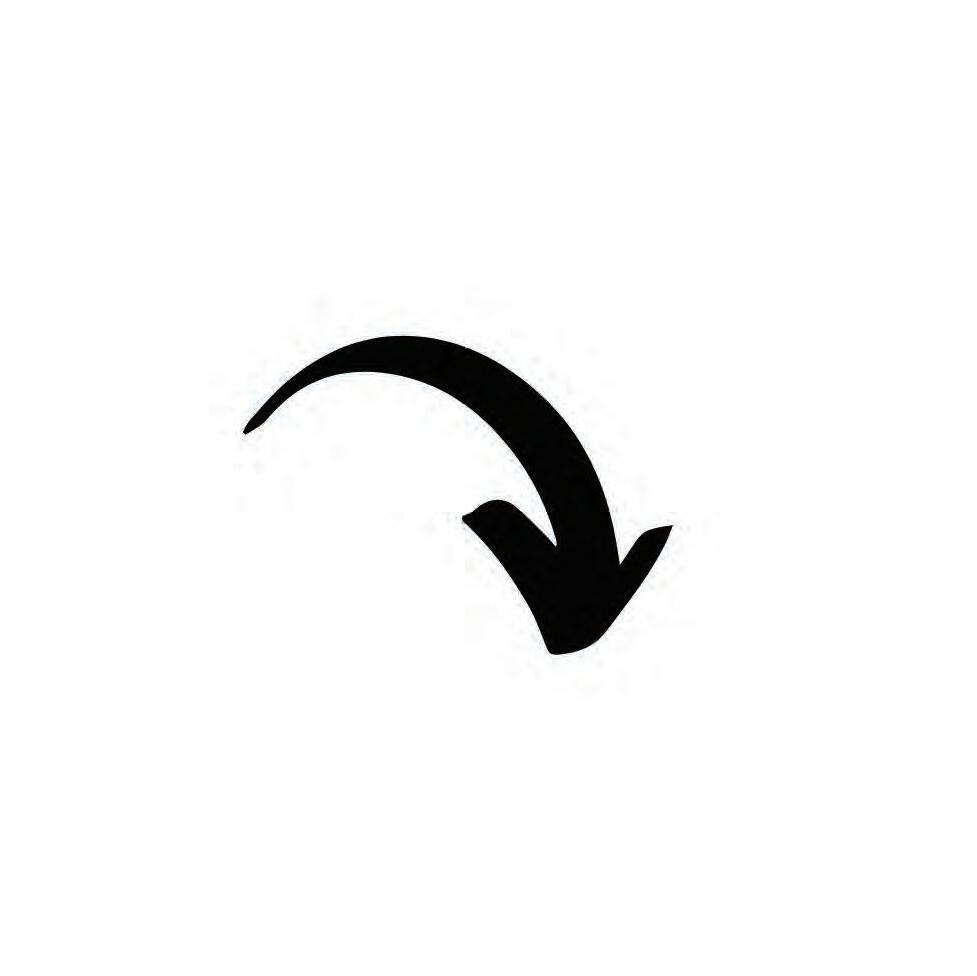
www.LatsAtts.com 99 Favorite ANCHORAGES • Cayo Costa, FL • Cumberland Island, GA
Aerial View of Fort Jefferson, Dry Tortugas National Park, FL







100 Latitudes & Attitudes | #42 Spring 2023 UNBURIED TREASURES: OUR READERS’ FAVORITES CRUISING GROUNDS HIDDEN GEMS WATERFRONT RESTAURANTS/BARS • Florida Keys • Ten Thousand Islands, FL • Cabbage Key, FL • Florida Panhandle • Little Lake Harris, FL • Bluewater Grill, Wrightsville Beach, NC • Georgia Coast • Bull River, GA • Lulu’s, Gulf Shores, AL Favorite Favorite Favorite
Cabbage Key Restaurant, Pineland, FL
Photo by Maxwell MacKenzie
Bahia Honda Railroad Bridge, FL
White Pelicans - Ten Thousand Islands, Everglades National Park, FL
Favorite MARINAS



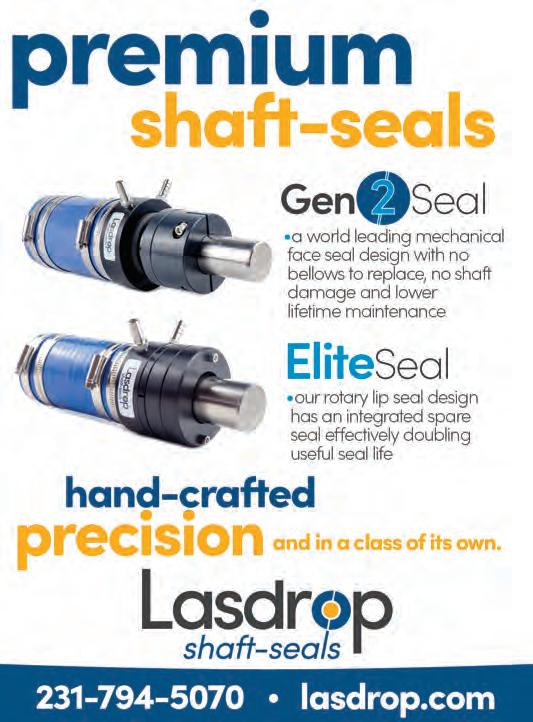
www.LatsAtts.com 101
• Fort Pierce City Marina, Ft. Pierce, FL • Conch Harbor, Key West, FL
Pool at Conch Harbor Marina, Key West, FL
Sustainability in Boating
 By Zuzana Prochazka
By Zuzana Prochazka
New propulsions systems and build methods will change boating forever

I’m allergic to the word “sustainable” because it’s overused and is usually little other than a marketing ploy to make you feel good about something you’re buying or doing. In other words, it’s mostly BS, and the word itself puts me on my guard since I once had a superyacht builder tell me how sustainable his boats were because they no longer allowed the use of plastic water bottles aboard. A sustainable superyacht with a helipad.
That said, there are real efforts underway in boating and boatbuilding that show promise of actually being green and helping the planet. Let’s look at a few.
102 Latitudes & Attitudes | #42 Spring 2023
TALK OF THE DOCK
GOING ELECTRIC
Electric propulsion is almost old hat these days – except that it isn’t. Real efforts are finally replacing the nonsense as more companies invest in electric or hybrid diesel/electric motors with a decent range designed for emission-free mobility that’s quiet, efficient, and free of fumes. Much of this is being made possible with new lithium battery chemistries that store a lot of power and do so more safely than in the past when thermal runaway could get a boat in trouble. Also, more boats are now being developed with 48-volt systems, which are vastly more efficient than 12V or 24V.
Beneteau has emerged as the first large-scale builder to commit to electric in a big way. The French builder has partnered with Germany’s Torqeedo, Canada’s Vision Marine, and Sweden’s Volvo Penta to launch electric models, both power and sail.
On the sail side, there are three production models already out: 1) The new award-winning First 44E racer/cruiser offers Torqeedo’s 12.0 Cruise pod propulsion and a 48V battery bank. 2) Beneteau’s Oceanis 30.1 cruiser now features Torqeedo’s 6.0 Cruise pod with two battery bank options in 24V or 48V versions that provide a range of up to six hours at four knots. 3) Finally, there’s the Excess 15 sailing cat which now offers the optional Torqeedo twin 50 kW Deep Blue Hybrid electric drive systems with high-capacity lithium BMW i3 batteries.
On the power side Beneteau also now uses Vision Marine’s high-powered electric outboards for select Four Winns model. The engines tout 180 hp and are available on the H2e bowrider with a 40-mph top speed.
And speaking of electric outboards – there are a bunch available for your tender. Torqeedo may have started it, but there are now many more on the market, including China’s ePropulsion and the US-built Elco. Both offer engines with a range of power. TEMO is another entrant with an innovative design and a lightweight chassis. TEMO is thinking outside the box for sure, but it isn’t the easiest to drive, especially in close quarters. And finally, outboard uber-builder, Mercury, is about to enter the game with their Marine Avator. This engine actually looks like a traditional outboard, has a built-in data screen to tell you range and charge, and has a removable battery you can charge on shore. There’s no horsepower specified yet, but since it’s supposed to debut in 2023, you won’t have to wait long to learn about this slick little dinghy motor.
Electric boats have grown so popular that they even have their own awards known as the Gustave Trouve Awards or “Gussies”.
A notable winner in 2022 was the Sunreef 80 Eco luxury sailing cat with electric propulsion and solar panels built directly into the composite structure of the hull and superstructure that functions like a solar skin. If you haven’t seen this one, it’s worth a Google search.

CLEANER BOATBUILDING
Sustainability reaches well beyond propulsion and is right to the heart of how boats are built. Fiberglass is notorious for being difficult to recycle, so companies are exploring options for both resin and fibers that can be reused or broken down at the end of a boat’s life.
Remember that First 44? Beneteau teamed with French manufacturer Arkema to build a hull from recycled resin, and it’s featured on this model. Another boatbuilder that is experimenting with an eco-friendly build process is NEEL trimarans which features a glass/flax cloth mix with a cork core, both of which are recyclable. I expect lots of changes in the way boats are built coming as soon as processes become feasible – which means affordable.
IT ALL MATTERS
The way we build boats, drive them, and use energy aboard all impact the environment. Sure, there’s been a lot of hype so far, but finally, real efforts are making headway. At least they make the word sustainable a bit more tolerable.
www.LatsAtts.com 103
Caring for and LIFESTYLES

Water Maker Package Installation
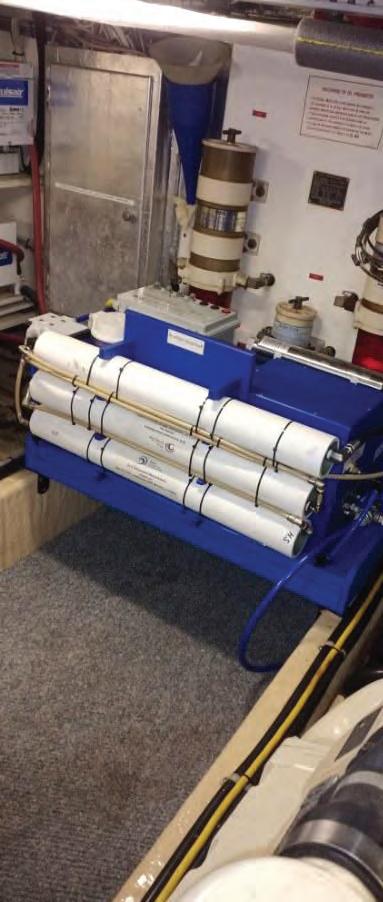 By Glenn Adams, GCA Automated Watermakers (www.GCAAW.com)
By Glenn Adams, GCA Automated Watermakers (www.GCAAW.com)
Maintaining Your Water Maker 104 Latitudes & Attitudes | #42 Spring 2023
Most water-making equipment on yachts and boats today uses the reverse osmosis technique for converting seawater into drinking water. These RO systems remove solids, bacteria, and most viruses from the water, and the water produced is often better quality than water from a city water supply. We all use a considerable amount of water, so fresh and clean water is a must-have for those folks who plan to be on anchor or away from a good water source for an extended period of time.
Today’s yachts and boats will often have a washer and dryer on board which can use upwards of 20 gallons of water during each washing cycle. Longer showers, doing the dishes, freshwater toilets, and boat cleaning all add to large amounts of fresh water consumed by today’s boating travelers.


A good rule of thumb for water consumption is 20 gallons per day per person. A reliable water maker, producing 20 – 30 gallons per hour, will more than handle the requirements of two to four people on the boat. The key word there is “reliable.” While most systems start out as dependable, reliable equipment, neglect or improper use can soon make the system problematic.
Two factors can severely limit or destroy a water maker’s ability to produce ample quantities of clean drinkable water. Those two factors are:
• Exceeding the maximum operating pressure range
• Lack of proper flushing after every water-making cycle
There are a few other aspects of operating the water-making equipment that will improve the life of the system, but those two factors are paramount.
LET’S DISCUSS WHY KEEPING THE PRESSURE WITHIN LIMITS IS IMPORTANT.
Most systems are designed to operate at 800 psi of back pressure. Excessive pressure, even for a few seconds, can cause issues within the pressure side of the water maker system. While most membranes can be pushed a bit above 800 psi, the o-rings in the end caps and the hydraulic seal on the membrane are pushed to their design limits when the 800 psi is exceeded.

If the hydraulic seal on the membrane leaks-by or fails, the system won’t be able to build pressure, so water production volume can be affected, or in some cases, if the failure is substantial, it will not produce any water. Reducing the pressure will usually allow the hydraulic seal to hold the pressure, but every time the pressure exceeds the seal’s ability to hold pressure, a little damage is done, which be an issue down the road. Although the failure of the hydraulic seal will limit the amount of water produced, you will not produce bad water because of that failure. Bad water can be described as any water with a TDS (total dissolved solids) reading greater than 500 ppm. (parts per million).


We are not going to get into a TDS discussion here, but the EPA suggests we don’t consume water having a TDS above 500 ppm, so we’ll use that number as the maximum acceptable level of dissolved solids.
If the o-rings in the membrane housing end caps leak or fail, the system WILL produce water that has excessive dissolved solids. When those o-rings leak or fail, raw water is allowed to enter the freshwater side of the system, which is down the center of the membrane, then directly to the freshwater tank. The entire tank of fresh water can be contaminated in a matter of minutes. We have seen o-ring leakby cause a TDS reading to jump from 190 ppm to 840 ppm within a few seconds. There are typically two o-rings in each end cap, so the redundancy should protect the system, but excessive pressure can damage them. Failed o-rings will also impede the system’s ability to
Caring for and Maintaining Your Water Maker
A dirty membrane
come up to operating pressure. Those little o-rings are all that stand between you and bad water.
Excessive pressure spikes can rupture or damage the interior of the membrane, which will then allow raw water to enter the freshwater side of the system. Although this is rare, repetitive pressure spikes can cause a rupture. After you have set the pressure, it is a good idea to monitor it because pressure can have momentum in some systems and we have seen pressure continually increase as the highpressure pump comes up to operating temperature. We recommend an initial setting of 725 psi – 750 psi as a safeguard against that increasing pressure.
Remember, raw water contains bacteria and possibly viruses in addition to salts and minerals. These are all normally removed by the RO process. If the water from your water maker tastes salty or is discolored, raw water, including bacteria, is likely getting to your tank.

Most water-making systems on smaller boats are described as “manually operated and monitored,” meaning the operator has to turn on pumps, move levers, adjust valves and monitor water quality during the water-making process. Monitoring the pressure, water quality, and production rate are important to the longevity of the system and, more importantly, to the health of anyone who consumes the water. It might be boring to sit there and stare at the pressure gauge and water quality meter, but your system will last longer, and your health depends upon good, clean water sent to the tank.
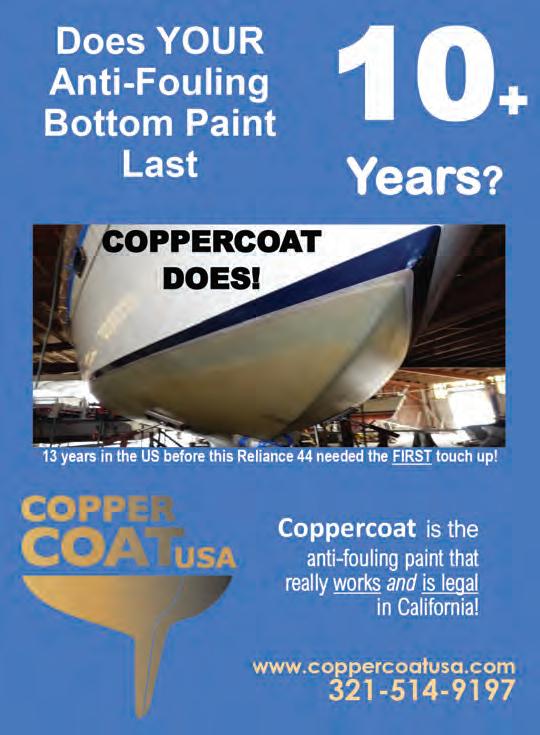
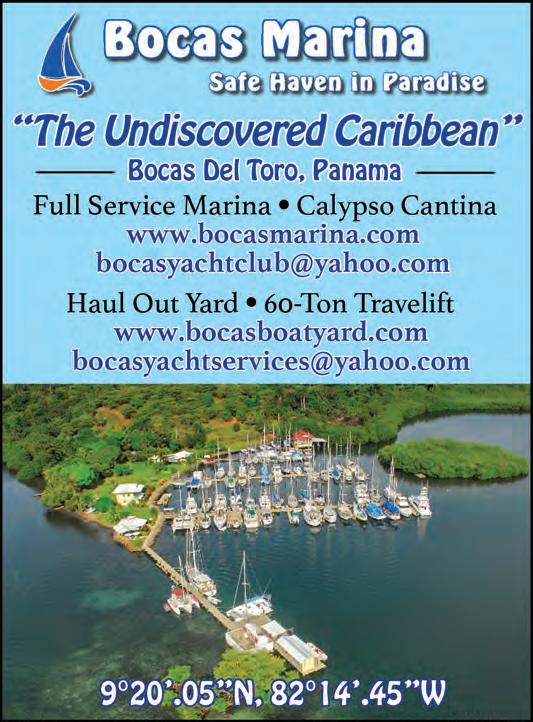
NOW LET’S TALK ABOUT WHY FLUSHING IS IMPORTANT.
Remember that the RO process removes the solids, bacteria, and most viruses from the raw water, so you only get good quality, clean water. As the system produces good water, the “stuff” taken from the water is dumped overboard after it flows out of the membrane housing. However, at the end of the water-making cycle, when the pumps stop, whatever raw water remains in the membranes, tubing, pipes, and pumps still contains those solids, bacteria, and viruses. In addition, the membrane is a structure with lots of little crevices where bacteria can hide. If the water-making process is stopped and the equipment is not flushed out, those left-



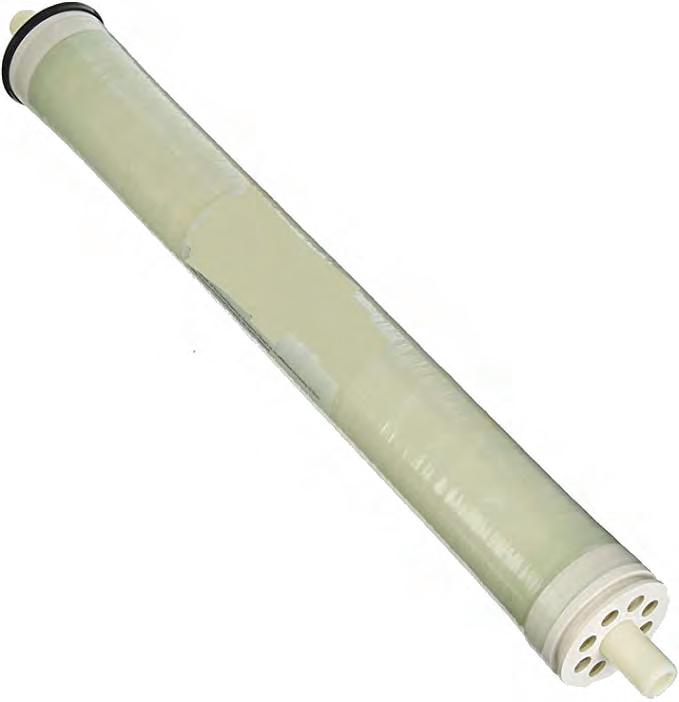
Caring for and Maintaining Your Water Maker 108 Latitudes & Attitudes | #42 Spring 2023
Neel 43 installation
over bacteria and viruses can grow, which can limit your system’s ability to produce water and possibly get through the membrane into your water system.

Flushing after each water-making cycle will push most of those contaminants out, thus protecting your system. Some folks believe that making water every couple of days negates the need to flush. We don’t subscribe to that thought process and believe that the continual buildup of contaminants will lead to a shortened membrane life. Since the membranes are one of the most expensive components in the system and are time-consuming to replace, we prefer to do everything we can to extend the life of the membrane(s). Keep in mind that flushing uses fresh, clean water from your tank, so make sure there is at least enough water in the tank to complete a flush. Typical systems will need 4-8 gallons of fresh water to flush the entire system properly.
If your system is to be dormant for an extended period, regular flushing will limit the growth of bacteria and viruses. We normally suggest a onceper-week flush of a system that is not being used. If the system has been dormant for more than 14 days, even if you have been flushing it every week, we recommend two successive flushes prior to making water as a precautionary measure. The other option is to pickle the system to keep bacteria and viruses from growing, but that should be a last resort because of the potential problems pickling can cause. We will discuss pickling a little later in this article.
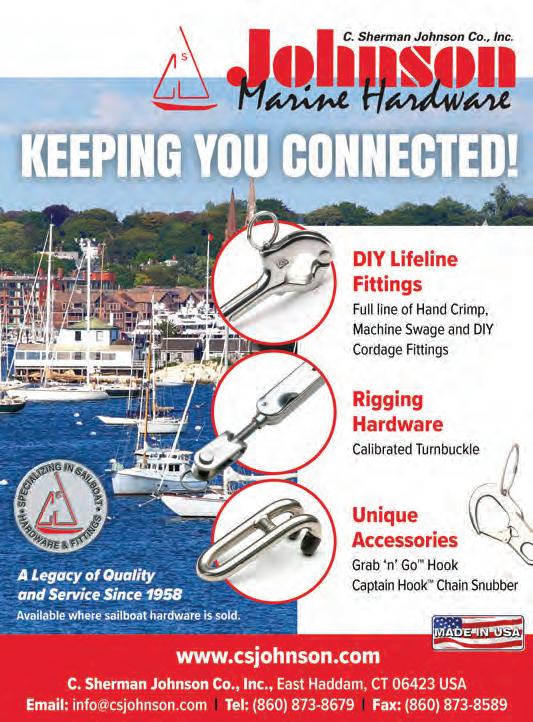
A good quality Ultraviolet Light, located at the output from the water maker, will ensure that 96% of any bacteria and viruses that get through the membranes are killed or are dormant before they enter your freshwater tank. However, the UV light will not remove solids and minerals, so if you have a membrane or o-ring failure, the water should not be consumed.
Let’s look at a few other things that need attention to extend the life of the water maker. The voltage source connected to the water maker should be monitored periodically to ensure a proper voltage level is maintained while the system is operating. Some users operate their water makers on an inverter that draws current from a battery bank. Depending upon the quality of the inverter and the batteries, you’ll want to make sure the voltage is
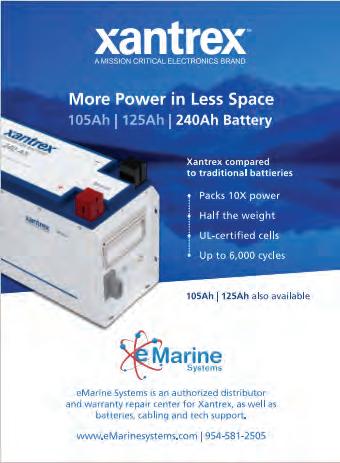
within the specifications of the water maker system.

For example, a water maker with a rated voltage of 120 volts is going to draw excessive current if the voltage supplied is only 105 volts. The current in the pump motor will increase, which will generate more heat, thus shortening the life of the motor.
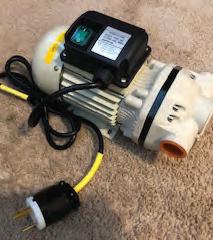

There should be a couple of sediment filters before the highpressure pump. These filters remove debris which could cause problems with the high-pressure pump. If these filters become excessively dirty, the high-pressure pump will starve and won’t be able to build pressure. We have seen one system where the filters were clogged to the point of not allowing any water to reach the high-pressure pump. The pump was ruined because the high-pressure pump could not tolerate running dry.
When adjusting the pressure valve, raise the operating pressure slowly, allowing the pressure to settle at several points along the way before continuing to reach maximum. Raising the pressure too quickly can rupture the membrane or those little o-rings we discussed earlier. When starting the system, the feed pump should be allowed to run for 15-30 seconds before activating the high-pressure pump. Then allow the high-pressure pump to run for 15-30 seconds to allow air to be purged from the housings and the lines. Membranes don’t tolerate high-pressure air bubbles and can rupture.
PICKLING YOUR SYSTEM.
Water makers that are not used for extended periods and cannot be flushed weekly can be pickled.
Caring for and Maintaining Your Water Maker
Pickling uses Sodium Metabisulfite to inhibit bacteria growth. Pickling works very well, but it can cause issues.
Some owners believe that if the water maker is pickled, the system can be left untouched for years. Although theoretically, this is true, we have seen many cases where the pickling material has dropped out of the solution and become caked on membranes, pump internals, and valves. When this happens, the component is usually ruined. One owner is a Marine Surveyor who has seen dozens of situations where a water maker has been pickled for 6-12 months, and the pump is now locked up, or the membrane is clogged. Sometimes flushing can push out the caked pickling material, but in most cases, the owner has to replace the pumps and/or membranes.
If you are not going to use your system for a long time, there are two other options. The first choice is to remove the membranes and flush the pumps and lines with fresh water. Bacteria can still grow in those lines, but if the system is open, allowing air to enter the lines, it is less likely. Exercising the pumps and valves once per month will help ensure those components are usable and healthy.
A better option is to purchase the preservative, lubricating, and cleaning cartridges that are sold by a few companies. These are elements that go into your sediment filter housing; then, you simply run the system to distribute the chemical in the cartridge. Again, exercising the pumps and valves is still recommended to make sure those mechanical components are healthy when you want to reactivate your system. Here is a link to a website selling these cartridges that will help keep your system healthy. We have no affiliation with this company.
www.appliedmembranes.com/membranepreservative-disinfectant-lubricant.html


Water makers are an expensive investment. Caring for that investment will make sure the system performs as you expect it to.

PetsAboard
 By Teri Miller
By Teri Miller
112 Latitudes & Attitudes | #42 Spring 2023 LIFESTYLES
When people meet Charlie, our furry first mate, they often ask, “Does he love being on the boat?” I once thought the best answer to this question was, “Yes, of course!” He enthusiastically jumps aboard, loves standing with his nose in the fresh air, has wellestablished favorite spots for napping, abundant treats, and toys, dolphins to bark at, dinghy rides, and an endless supply of attention. What is not to love? The real response, though, should be that while he may enjoy boat life, what he truly loves is being with us. The feeling is mutual. We love having him with us on the boat.
No matter where we ventured, we found Charlie to be a great social connector. Strangers, some with dogs, others without, would easily engage with us, asking about Charlie and eager to share their own stories. Some of our dearest friendships came from meeting other boaters who also enjoyed the company of dogs aboard. Another benefit of having a pet on board is boat security. If you knew Charlie, you would laugh at the idea of him protecting anything other than his favorite toy, but a pet onboard can be a deterrent to someone looking for an easy way to disturb your property. The greatest value of boating with pets is companionship. The boating life can be as social or as isolated as you prefer, but a boat dog (or cat) can certainly keep you company while challenging you to explore beyond your boat.
The benefits of having Charlie with us far outweighed all the work that it required…but it did require work. Whether you are out for a short cruise or a longer liveaboard journey, boating with pets brings additional boxes to check before getting underway.
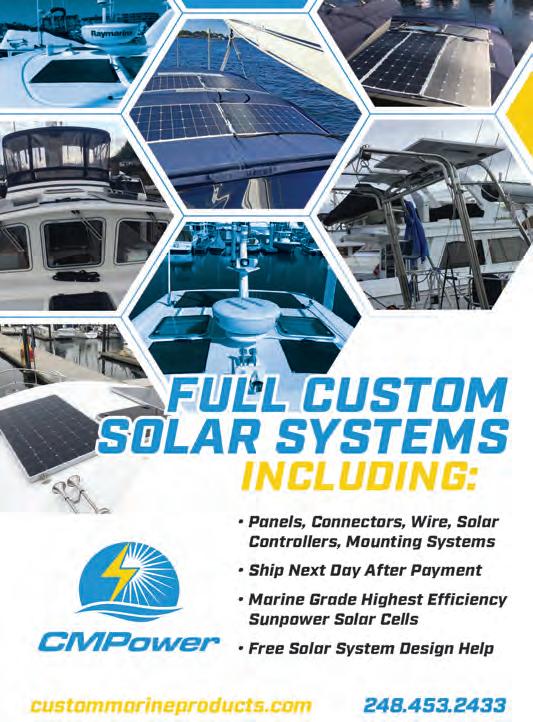

ALL ABOARD
Safety is a priority for all crew members, and that includes your pets. It is important to give thought to how your pet will get on or off your vessel. For some, your pet may be small enough to carry, but if your pet is larger you need to have a plan. Well-maintained floating docks are pet friendly but not always an option. Depending on your hull design and location for boarding, you may be lifting your pet up or over a freeboard or onto a swim platform. A good harness is important. Unlike a collar, which could cause a choking hazard when pulled, a harness allows you to assist your pet as needed in getting aboard. Should your dog or cat make an unexpected water entry, having a harness with a handle will make retrieving them much safer. When choosing a harness, consider if it can hold the weight of your dog or enable a boat hook to snag it if needed. If your pet will have access to areas of your boat in which
www.LatsAtts.com 113
they can get overboard, keeping them in a comfortable life vest is important. We may be lulled into a false sense of safety if our pets are good swimmers or waterloving breeds, but a life vest will give you valuable time to assess and safely retrieve your pet. Some boarding circumstances require extra consideration, such as dinghy entry, fixed docks, or ladder-only accessibility. Ingenuity and forethought will be your best friends in these situations. We have found giving Charlie a command to board helpful. When needing to take a step across a space from a dock or dinghy to the boat, hesitation tends to cause problems for pets and people alike. We use one word, “board!” for when Charlie must step/jump/or be helped on or off a boat. He is more confident boarding when he is obeying a command. In the event of an unplanned water entry, or even if a swimming excursion was intended, you will want a plan for getting back aboard. This is especially important for larger or older dogs. While making sure to provide a safe boarding experience for your pet, consider creating a safe space as well. Designate a space in which your pet can be comfortably contained. If you are experiencing a stressful sea state, an emergency, or even coming into a new port, having a place to secure your pet will reduce the chaos and keep them safe.
PET RELIEF
Your pet will require a place to relieve themselves. Perhaps you plan to stay at the dock frequently, if so, getting your pet to shore is no problem. If your boating lifestyle has you underway for days or frequently at anchor, this issue will need your attention. For feline first mates, this means carving out a space in your boat for a litterbox. You will also need to factor litter refill and proper disposal into your provisioning plan. For canine crew members, onboard relief techniques may vary. The ideal situation is to train your dog to relieve itself while on board. Artificial grass mats, live grass patches, or well-scented rugs are popular methods. Since housebroken dogs prefer not to do their business in an area they consider part of the home, you will want to find an out-of-the-way area for their potty station. Some dogs never acclimate to anything other than land. If this is the case, establishing a cruising plan that allows for pit stops may be needed. For Charlie, when the need was great, like when we were offshore for days, he would partake in the offered artificial turf, but he would much prefer land. We eventually perfected the art of accessing our dinghy easily for quick trips to shore when possible.


PETS ABOARD 114 Latitudes & Attitudes | #42 Spring 2023
FUR, FOOD, AND FIRST AID
I have heard pet fur referred to as “magical fibers of joy,” but in the confines of a boat, these “fibers of joy” can be overwhelming. You can reduce fur-clogged air filters, scratched surfaces, or upholstery with frequent brushing and nail trims. Acquiring grooming supplies and teaching yourself how to manage your pet’s coat and nails are smart investments of your time and money.

Careful provisioning to keep sufficient food and fresh water on board for your pet is imperative. You will need an ample supply of fresh water for hydration as well as for post-saltwater rinse downs. Collapsible bowls and water bottles are good to have when going ashore. Before setting off, procure all pet food and treats and keep them in airtight storage. If you plan to restock food along your journey, keep in mind the logistics of this effort. Finding a specific brand may not be easy, and transporting large flats or bags back to your boat could be a huge undertaking.

Pet first aid basics are much like our own first aid needs. Plenty of pre-stocked pet-focused first aid kits are on the market, but you can also assemble one on your own. General antibiotics, anti-nausea, and pain medicines should be a part of your first aid kit. We have found establishing a relationship with a veterinarian who is familiar with your pet and willing to work with you remotely invaluable. Talk with your veterinarian about your pet’s cruising lifestyle and specific preventative and maintenance health care. Many veterinarians will help you to stock up on your pet’s prescriptions and give guidance as to what medicines you should keep in stock for remote situations. Include sufficient heartworm, flea, and tick medicines in your provisions. Tending to emergent issues or updating vaccines while away from home port may mean visiting a new veterinarian in unfamiliar areas. Research locations of vet services near your planned cruising destinations. Keep all vet records updated and on board.
PAPERWORK AND PERMITS
One of the more daunting aspects of cruising with pets is visiting other countries. While it may require extra planning, it is certainly doable and worth the effort. Each country will have its own requirements for entry. You can usually find the requirements for importing a pet on a government’s agricultural or customs websites.
www.LatsAtts.com 115



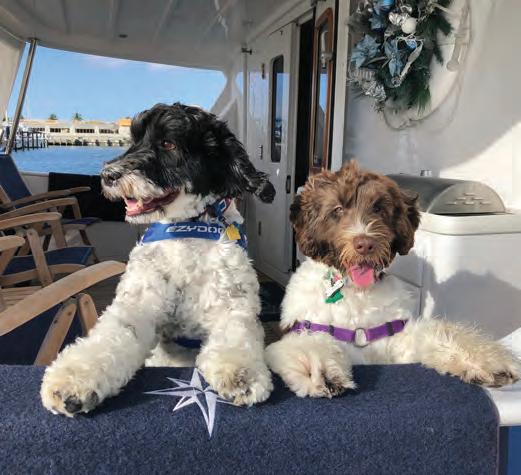


PETS ABOARD 116 Latitudes & Attitudes | #42 Spring 2023
No matter where you travel, there are a few things to keep in mind.
Almost every country requires your pet to be microchipped. Make sure the correct microchip number is located on all documents. Be sure all information is legible and updated on tags. Include the boat name and at least two contact numbers on tags if possible. Inspect your pet’s tags regularly, as rust may cause detachment and loss. Consider using a nonmetal clasp or a silicone tag.


Pay careful attention to vaccination timeline requirements. Not all countries recognize the threeyear rabies vaccine. This may require your pet to be revaccinated within 12 months, but not within 30 days of entry. Some countries ask for proof of a Titer Test. This test is a blood screening that verifies how much of the rabies vaccine is present in your pet. Currently, this is not a requirement for the Bahamas, but it may be a requirement for other Caribbean destinations. Many of the islands are currently rabies free or hoping to eliminate rabies in their country. Strict adherence to rabies prevention is understandable, considering many of the pet populations in these areas are free roaming. A rabies titer test can be performed by your local vet, but it will be sent to a lab at Kansas University for processing. With results taking as much as a month to return, and most countries requiring the titer test 30 days post-vaccine, make attaining this test a priority if cruising beyond the Bahamas. Other commonly required vaccines are Lyme Disease, Distemper, Hepatitis, Parainfluenza, Parvovirus, Leptospirosis, and even occasionally canine Coronavirus. While some of these vaccines may already be a part of your pet’s health schedule, some of them are unique to specific situations. Planning as far ahead as possible is key for keeping your pet’s vaccines updated and meeting guidelines.
Two important pieces of paperwork for traveling with your pet are a health certificate and an import permit. Every country will require an updated health certificate. Health certificates can be obtained by visiting a veterinarian prior to visiting a new country. In the United States, most veterinary services are familiar with the process and can supply you with an endorsed certificate. If you are seeking a certificate out of the country, you may be challenged with locating an available veterinary office. Vet services exist in the Caribbean, but you may need to research locations and operational hours. Many countries require an import permit to be completed and approved prior to arrival. These can usually be sent by email, but some will only be processed through the mail. Bringing
www.LatsAtts.com 117
your pet as you adventure beyond the United States may seem overwhelming, but there are numerous resources to navigate each step. BringFido.com has an extensive list of entry requirements for most cruising grounds.
BEYOND THE BOAT
We love having Charlie with us in our boating life as we explore and meet new people. But it is important to remember that not everyone is comfortable with dogs. In some Caribbean islands, dogs are not seen as friendly companions. Farmers often battle small packs of stray dogs that harm their livestock or property. Placing poison around a property is not uncommon. Be careful to keep your pet from eating anything off the ground and keep them leashed around people you do not know. As a rule, most strays you will encounter will be friendly, but always be mindful of your dog’s best interest. While many places you travel to will welcome you and your pet, be considerate of the cultural or individual concerns of others.
The boating life is filled with endless lists and projects. Having a pet on the journey does add to the list, but it also adds joy. Every part of our cruising lifestyle was made better with our furry first mate along for the adventure. When adding a pet to your cruising life, do your research, planning, and provisioning… then “board!”
GREAT GEAR OPTIONS
First Aid for Furry First Mates:
Keeping first aid items on the boat for your pet is made easy with available pet centric kits. In addition to items you may already have on board, consider including a dog thermometer, self-adhering bandages and styptic gel.


Chewy.com

PETS ABOARD 118 Latitudes & Attitudes | #42 Spring 2023
Don’t forget your pets when provisioning your ditch bag. Include additional first aid items and water for them.

PET EVAC PAK Big Dog Pak Pet Emergency KitChewy.com

All Aboard:
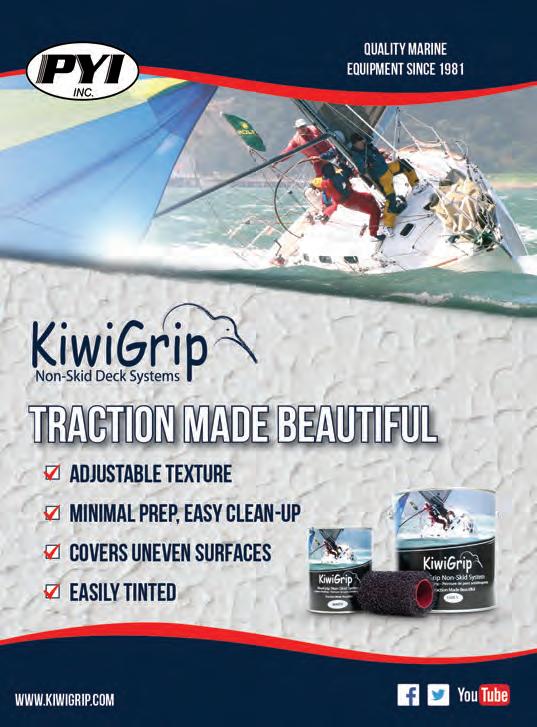
In addition to a collar, or in lieu of, a harness with an integrated handle can be useful. A good harness can be a safe way to assist guiding, or completely hoisting, your pet in or out of your vessel.
Sport Dog Harness | Hiking Dog Harness ezydog.com
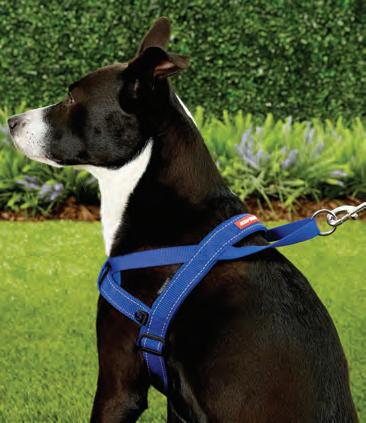
www.LatsAtts.com 119
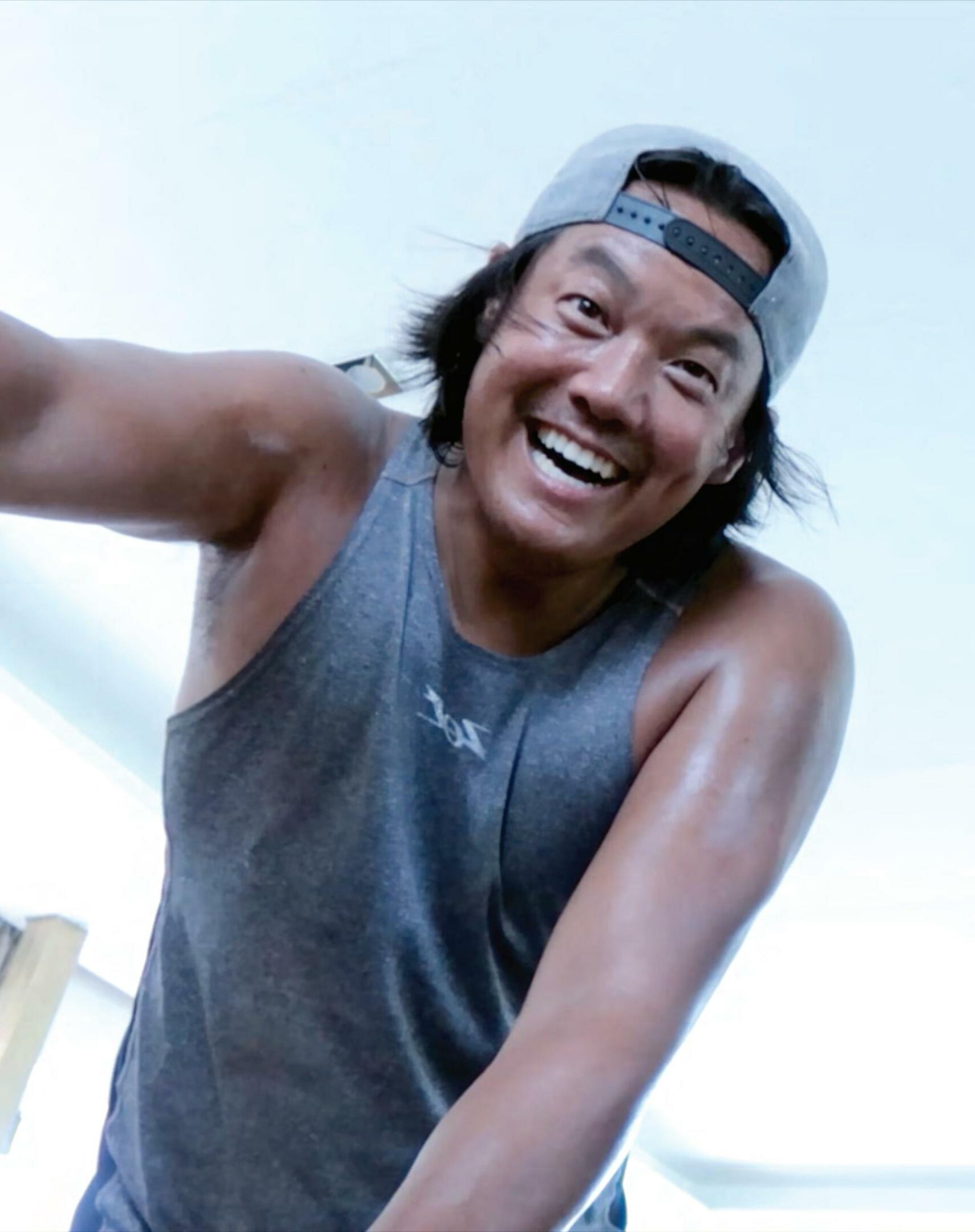
120 Latitudes & Attitudes | #42 Spring 2023
The most valuable experience is actually the one you can give to someone else and not keep for yourself.”
“
- David Shih
VIRTUAL CRUISING:

Boats & Brotherhood

www.LatsAtts.com 121
VIRTUAL CRUISING: PARLAY REVIVAL
 By David Shih
By David Shih
Life is hectic, and with a wife and a bunch of young kids, things are always changing. One of the few remaining constants in my life has been our Sunday morning tradition of watching YouTube sailing videos, something we started back in 2019. I first stumbled upon Sailing Parlay Revival when YouTube recommended their video following an episode of Delos or Gone with the Wynns. The Parlay Revival crew, led by Colin MacRae was attempting to rebuild a hurricane-damaged Lagoon 450. I was captivated by the romanticized idea of buying a broken boat and restoring it back to its former glory. Fixing a hurricane-damaged boat is a monumental task. We watched each week as they attacked the most ridiculous projects head-on, armed only with Colin’s experience working on superyachts and his Kiwi “can-do” attitude. He always managed to stay positive, even after the craziest of setbacks. It was so inspirational
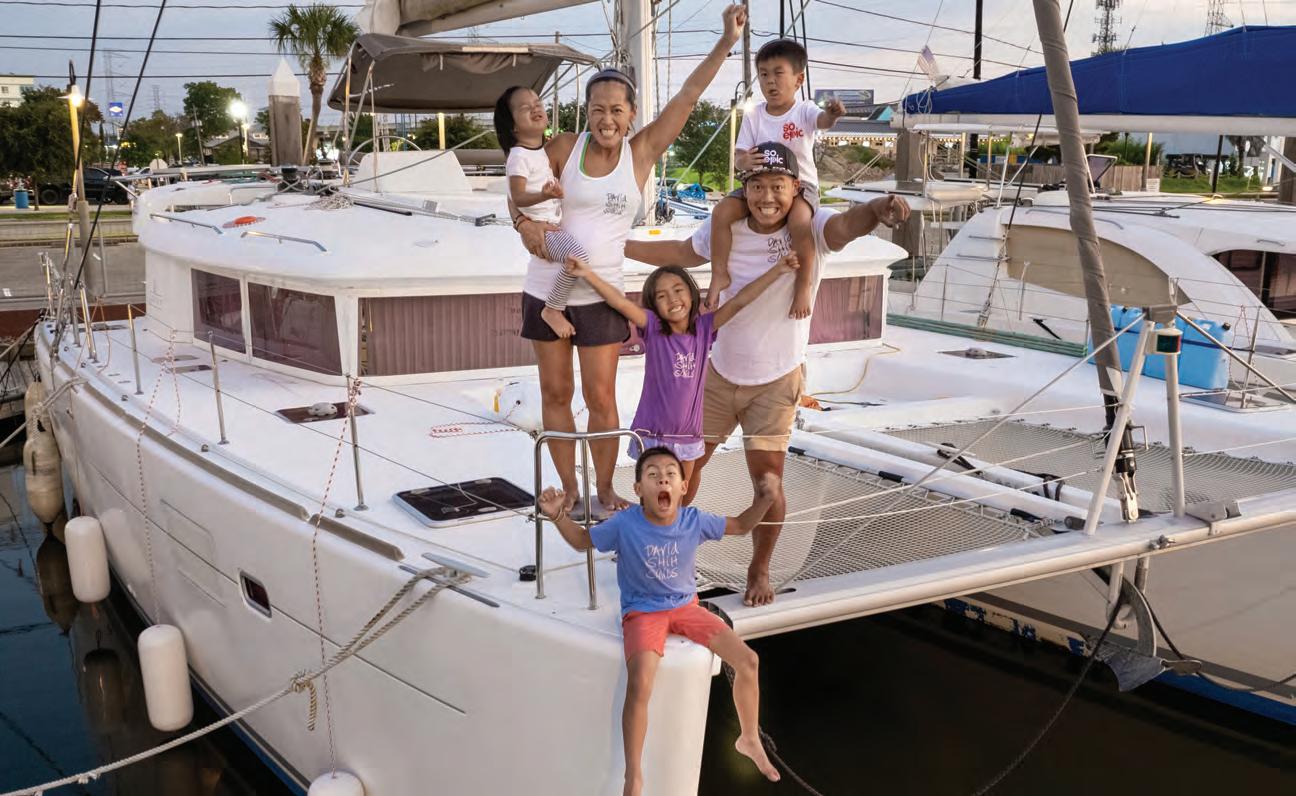
to watch and his channel quickly became our favorite on YouTube.
As I followed his journey, I couldn’t help but imagine myself being on the Parlay crew sailing the world. I cherished the thought of being with friends on a mission, each of us on our own path of a shared dream. But these moments were short-lived. Reality would set in as I caught a glimpse of the kids on one side of me or my wife on the other. “If only I were younger,” I would think to myself. I would have killed to be a part of that ragtag crew. They had cut ties with society and were free to go anywhere the wind took them – but it was just a far-fetched fantasy, something I could only experience in another life. But life has a way of providing the unimaginable and leading you there if you are only willing to leap. Never in a million years
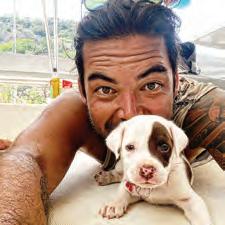
122 Latitudes & Attitudes | #42 Spring 2023
could I have predicted that all these dreams would come true, that I would see myself on those very same Parlay Revival videos years later.
The Parlay Revival story started when Colin MacRae, a chief engineer on superyachts for a decade, gave in to his dream of sailing his own sailboat around the world. He put his life savings into a half-sunken, hurricane-damaged Lagoon 450 catamaran named Parlay. Calling it hurricane-damaged is being conservative – the boat was a total loss, according to the insurance company. The port side of Parlay had sunk completely, and the temporary patches throughout the vessel were barely keeping it afloat. It required extensive repairs, but they were cost-prohibitive in the BVI’s. Colin and a friend revived it just enough so they could move it to less expensive parts of the Caribbean. After four months, they sailed it out of Tortola with a rebuilt engine, replaced wiring, and new fiberglass where huge holes in the hulls once sat.
Watching Colin just astounded me. These challenges alone would have been too much for most, myself included. But Colin has this rare ability to skip over the disappointment phase that plagues most people. When faced with a problem, he jumps straight into analyzing and then systematically eliminates it. I can do this with small issues, but for those on a grander scale, I can’t help but let some of the fear and self-pity creep in. I didn’t know at the time, but I would get to see his unemotional
problem-solving approach unfold firsthand as I watched him overcome some of the worst setbacks and even pull me through some of my own.
After years of watching videos of people sailing the world, my wife Mary and I couldn’t ignore the urge anymore and started to sell everything in exchange for a life at sea. We considered a few boats, but I knew deep down it was always going to be a Lagoon 450. How could we not get the same boat that made us fall in love with the lifestyle? Also, this catamaran has a massive flybridge that allows the entire crew to gather together at the helm. We were certain this would be the ideal boat. And while it seemed perfect for our big family, this decision appeared as a curse at first, but thankfully turned out to be a blessing that would change the course of my life.
I knew nothing about sailing and even less about boat repair, but in early 2021 we spent our life savings on Epic, a 2013 Lagoon 450 catamaran, and soon discovered it needed major bulkhead repairs. Colin was sharing videos about the catastrophic bulkhead failures on his Lagoon 450 around that time, and it was from those videos that we discovered that our boat was badly broken as well. I went straight to two separate Lagoon dealers for help, but both turned me away, explaining that the symptoms I found were just the boat settling, “like a foundation in a house”. According to them, misaligned doors and trim, creaking under sail, and even bent floors were all normal in a used catamaran.

www.LatsAtts.com 123
I contacted Lagoon corporate as well but never heard back. I knew my bulkheads were broken, but I could not get anyone to help me fix them. We were desperate, and the only person I knew of in the world that had knowledge about the bulkheads on this boat was Colin, so I reached out.

He told me not to buy that boat, and I told him I already had. He told me that he figured out how to fix it, and I asked him if I could come. Then I just did what any normal human would have done and sailed 1,300 miles from Saint Maarten down to the east coast of Panama and parked my boat next door to Parlay. As we pulled into Linton Bay Marina, Colin and Jamie were waiting on the dock to catch our lines. Jamie is the first mate on Parlay and the ultimate sidekick to Colin. He’s an Aussie with zero fear (except sharks,) an unwavering loyalty to Colin, and has a contagious laugh that’s become a staple in the videos. Within a week, they had diagnosed all of the bulkhead issues and helped me haul out Epic right next to Parlay

For months, Parlay was the only Lagoon 450 with bulkhead issues, and most people attributed the damage to the fact that she was in a hurricane. Epic, on the other hand, had never been in a hurricane, run aground, or otherwise damaged. As Colin’s bulkhead videos gained popularity, several Lagoon 450 owners followed his lead by inspecting their bulkheads and discovered they, too, were cracked or bent. He released videos on how to perform the difficult bulkhead inspection and, all the while, encouraged me to make a video about my bulkheads. Just this small nudge would have a profound impact on me, but more on that later.
It turns out the hurricane did not damage Parlay’s bulkheads, but rather there was a design flaw. With Colin’s lead, around 200 boats (about 20% of all Lagoon 450’s produced) discovered they had identical issues. At first, Lagoon dismissed everyone’s concerns and attributed the failures to improper sailing and maintenance. And despite offering to fix Parlay, they refused liability for the problem overall. I was shocked when Colin stood his ground and, for months, continued to push the executives at Lagoon to take ownership for the flaw. For Colin, it was going to be all of us or none at all. It was about the safety of all owners and their families and not about self-interest. I was amazed to see someone use their platform to help everyone at his own risk.
The result of all the publicity that Parlay Revival created around the bulkhead issue was a win for all Lagoon 450 owners. His persistence paid off, and the company developed a reinforcement kit, providing it to all owners at no cost. And as a preventative measure, they were even given to boats with bulkheads that hadn’t failed


124 Latitudes & Attitudes | #42 Spring 2023
yet. He leveraged the power of social media to singlehandedly fight a behemoth corporation in a professional way, and nothing could get him to back down. The impact spread beyond Lagoon and incentivized other production catamaran builders to reevaluate the strength of their structural bulkheads. All this came about as Colin was concluding the repairs on Parlay, so he had little to gain personally, but that was never his goal.
Meanwhile, I was past the point of no return on my own repairs. Panama was nothing like I expected, and the mountain of work I had ahead of me was overwhelming. Mary had helped me sail to Panama, but she left immediately to return to work and take care of our children. I went from enjoying the comforts of home and family to living completely alone in the tropical jungle of a third-world country. I was so naive! When I arrived, I actually believed I would be home in six weeks: three weeks of repairs, one week to learn how to sail, and two weeks for the passage home. I can’t imagine where I’d be today had I not been next to Parlay for 11 months, getting my master’s degree in bulkhead boat repairs.


Colin and Jamie helped me realign the hulls, guided me through disassembling the cabins, and even showed me how to remove the damaged bulkheads. And this was not even the half of it. While the learning curve wasn’t too steep, there was just so much to learn! I had never touched a boat before buying Epic, and in hindsight, I blame my false sense of confidence on the bit of drywall work I did in our old apartment – I think I replaced some tile there, too. I didn’t even have tools, purchasing and learning how to use them only as the need arose. I was clearly less experienced than I had portrayed, but surprisingly this did not bother Colin at all. He fielded hundreds of my embarrassingly basic questions and generously shared his knowledge. Nevertheless, it was incredibly difficult, as I had to learn everything on the fly. It all came to a head after I spent the three longest days of my life in 90° heat, grinding away broken fiberglass while trapped in a Tyvek bunny suit and a full-face respirator. The dust consumed the boat, forcing me to move into my small hatchback rental car parked next to the boat.
After a few nights, Colin realized what was going on and immediately offered me a cabin on Parlay. Moving aboard was surreal, to say the least. I had watched hundreds of episodes that took place on this very boat, but now I was living on her. And, even crazier, I was welcomed into the family as one of their own. We worked together, ate together, and had some of the most epic parties I’ll never forget. Somehow, I had become a part of the Parlay crew, the very thing I had daydreamed about for years while sitting on my couch at home watching their videos. I was truly living my dream!

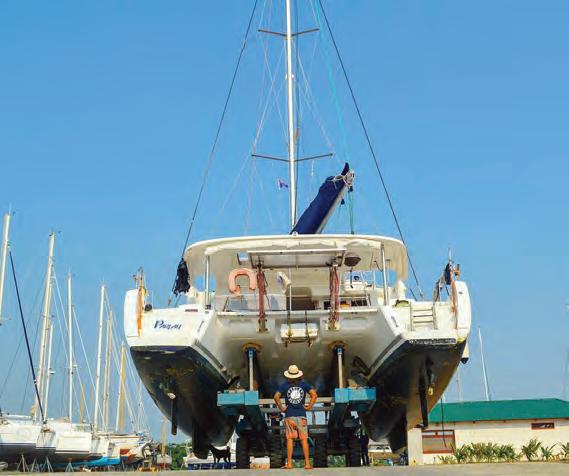
www.LatsAtts.com 125
Boats & Brotherhood VIRTUAL CRUISING:


Eventually, being around Parlay would inspire me to follow in their footsteps and make videos for YouTube. Though I have always loved filming and had been documenting my life for years, I could never get myself to edit the footage. I had so many excuses, and if Colin didn’t push me to put out that first video about my broken bulkheads, I’d still be telling myself, “I’ll do it one day when the time is right.” The nights became joint editing sessions in the salon as I picked his brain on how he built such a successful channel so fast. We’d critique each other’s videos and strategize on how they could be improved. He put me on the fast track to building my channel and even featured us in some of his videos. I’ll be forever grateful for his encouragement and confidence because it helped me take my first steps to realize my dream of becoming a YouTuber.
we were one of the Sailing channels invited to the YouTube Booth. Mary and I were reunited with the it was like I had never left. The best part was witnessing my boys win Best YouTube Channel at the International Cruisers Awards (the award which just so happened to be sponsored by this very magazine). I was like a proud father sitting in the first row, awkwardly filming them like I would my own kids. I even captured the hilarious moment when Jamie accidentally dropped the glass trophy they had just been presented with, and the violent cheering that followed!
”Knowing what you know now, would you buy this boat again?” They always assume my answer will be based on all the effort and expenses involved, but that doesn’t even cross my mind. While you could say buying this boat cost me a year of my life and money we didn’t have, I left Panama with enough courage to finally pursue my life’s passion in YouTube, and I gained a mentor and a brother. The number one reason I’d do it all again is if I hadn’t, I’d probably still be sitting on my couch on Sunday mornings, half dreaming about how, in some other life, I could have owned a boat and given my family experiences most people can only imagine.
to us, but the most integral part of my boat-life DNA will always be from from. Their videos taught us to appreciate the liveaboard life and eventually inspired us to buy a boat. Then Colin taught me everything I know about boat repair and even how to sail. Jamie chaperoned us on my first passage as captain of my own boat while Colin followed in Parlay. And even after we parted ways, Tom, a long-time Parlay crew member, flew back to help me sail Epic 1,600 miles all the way home to Texas. Their continued support is what has gotten us this far, and I am so thankful.
From overcoming the bulkheads to that time we all got COVID, and the epic journey across the Panama Canal to the everyday magic of being a part of the crew, my memories with Parlay will last a lifetime. But what’s more important is those experiences have reshaped the purpose behind our dream of cruising the world. Mary and I were just naive armchair sailors when we first came up with that goal – we thought boat life was just about being free and collecting , it became clear that the most valuable experience is actually the one you can give to someone else and not keep for yourself. It’s to make a lasting difference in someone else’s
Misc anecdote: I’m proud to say that I hold the record for the loudest Colin has ever yelled at anyone. To be fair, it was . Colin had been chasing us for half the day with no contact, so we didn’t know. We were ahead of him and everytime he turned towards us we adjusted course thinking he wanted us to finally caught up I see Colin hanging off the mast and hear his voice louder than I’d ever heard, “Turn on your f*cking radio!” I have never forgotten
David and lovely wife Mary sold everything and sunk it all into their dream boat, a Lagoon 450 catamaran. Then found out it had broken bulkheads which would cost $100k to fix. After abandoning his family in Texas and sailing across the Caribbean to Panama to connect with Sailing Parlay Revival, a channel he followed and drew inspiration from, his boat was made whole again. David’s Instagram page is david_shih_sails and both YouTube channels can be found here:

126 Latitudes & Attitudes | #42 Spring 2023
ABOUT THE AUTHOR: YouTube: @david_shih YouTube: @ParlayRevival
Breaking Waves: www.youtube.com/@BreakingWavesSailing
Odd Life Crafting: www.youtube.com/@OddLifeCrafting Scan
Gone with the Wynns: www.youtube.com/@gonewiththewynns






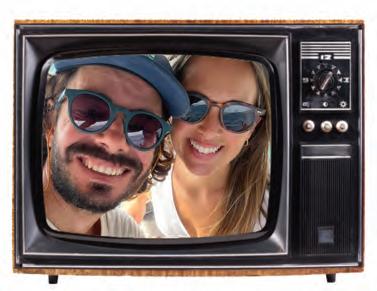


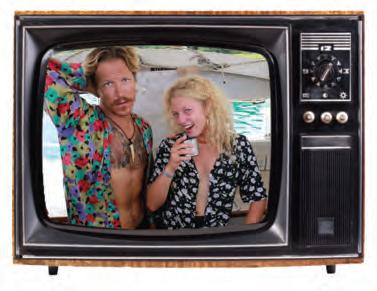
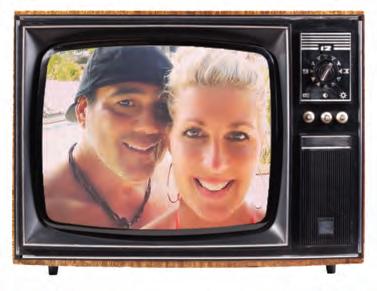

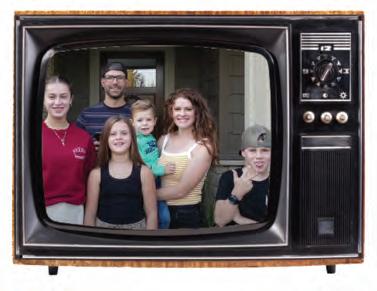
Sailing One Life: www.youtube.com/@SailingOneLife
Sailing Dark Angel: www.youtube.com/c/sailingdarkangel
Sailing Zephyr: www.youtube.com/@SailingZephyr
Spear It Animal: www.youtube.com/@SpearItAnimal
WEsail: www.youtube.com/@WEsail
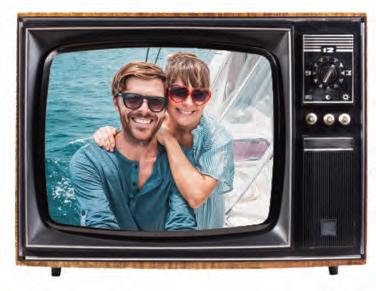

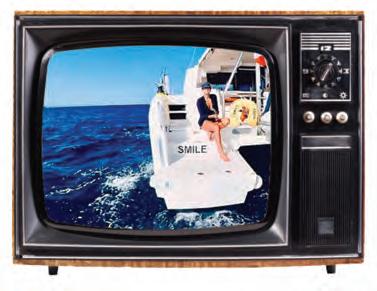
www.LatsAtts.com 127
QR Code
with these and other influencers by visting our YouTube Channel @latsatts
Connect
Clipper Cove the Real Treasure of Treasure Island and
 By Marissa Neely
By Marissa Neely
128 Latitudes & Attitudes | #42 Spring 2023
Aerial view of Yerba Buena Island
Since 2018 my partner Chris and I have lived aboard our 1979 Cheoy Lee 41, Avocet, preparing to cast off in search of whatever lay beyond the horizon. In the Fall of 2022, it was finally time to cash in on efforts and leave the dock for good. We left Ventura, California, on September 17th, 2022, with a southern wind on our tail, and our course set for San Francisco Bay. After two days and seven hours of nonstop sailing up the California coast, we sailed under the iconic Golden Gate Bridge. We found solace in Clipper Cove, located between Treasure and Yerba Buena Island.
Getting into the anchorage definitely proved a bit difficult, especially as a deep-keeled vessel like Avocet with a 6.5’ draft, since a shoal guards most of the entrance at low tide. With that said, sailors will want to wait until the flood current returns, as similar drafted vessels need enough clearance to navigate the channel into the deep section of the anchorage.
A local’s knowledge is worth its weight in gold and can be the difference between a successful entrance to the anchorage or an embarrassing grounding; Fortunately for us, Chris’s brother spent a fair amount of time sailing the Bay area back in the mid-2000s and was able to pass along some information regarding the Cove’s tricky access.
It is recommended to hug the pier on your starboard side and, once almost to the sailing dinghy dock, point your bow directly at the TransAmerica pyramid building (a tall pointed structure) in the distance. We followed the instructions carefully and kept a close eye on our depth, seeing a minimum of two feet under the keel. Once we were over the shoal, the depth gradually increased, and we set our hook in a comfortable 16 feet of water.
Nestled between the two islands, you will find that the cove provides protection from almost all directions (minus the east) and shelters you from the sounds and views of San Francisco – impressive, given the close proximity. The water was as still as a lake, allowing us to sleep soundly from the early hour of 7:30 PM through 10:00 AM the following day (an unspoken agreement to wake up slowly). When we finally rolled out of our berth, I made a “we-are-finallycruising” celebratory breakfast of pancakes decorated with fresh fruit and Vermont maple syrup – almost as sweet as our new digs.
The Bay Bridge was on full display behind us, and in front of us was a long sandy beach with no breaking waves, which would surely make our beach landing a breeze. Another boat, which Chris confidently ID’d as an Irwin

www.LatsAtts.com 129
46, was anchored closer to shore, becoming our only neighbors for the time being. After breakfast, Chris began to pace around the boat. I had just settled in the cockpit with my coffee and laptop to go over some work emails, but he was clearly going stir-crazy from being so still. After a few moments of patiently letting him buzz around me, I suggested we launch the dinghy so he could go to shore with his bike and scope out the island.


Lay of the Land
The sound of construction and traffic formed an urban symphony; my incessant typing, the metronome. Hours passed with no word from Chris, leaving me a bit concerned. Had he crashed? My anxiety began to set in, and the only cure was the reassurance that my accident-prone partner was alive and in one piece. “So I learned something new,” a very winded (but still breathing) Chris began to explain through the phone. Apparently, the Bay Bridge pedestrian path was only available on the weekends… and it was a Thursday, meaning he had pedaled all the way up to the top of Yerba Buena Island for no reason other than a good workout. Chris (somehow) returned more energized than when he left, eager to get me to shore and tour the island with me on foot.
From the air, you will notice that Treasure Island is flat in comparison to Yerba Buena, the island it is loosely connected to by a two-way road – that is because Yerba Buena Island is an organic land mass, whereas Treasure Island was artificially created. The 400-acre island was built by the Army Corps of Engineers in 193637 on the shoals of Yerba Buena in anticipation of the 1939 World Fair. The site of the fair was to become San Francisco International Airport later, but the Navy seized the island
130 Latitudes & Attitudes | #42 Spring 2023
Clipper Cove and the Real Treasure of Treasure Island
Marissa and Boots the boat chicken
Avocet, overhead
in 1942, shortly after World War II began, and it became Treasure Island Naval Station. Pan American World Airways’ Clipper seaplane was commonly used at the time and for which Clipper Cove gained its name.
Chris and I walked along the island’s perimeter on a clearly marked pedestrian path with an unmatched view of the Golden Gate Bridge and the city. With a brand new ferry terminal with routes to the city for $10 round trip, I was surprised to see that the island wasn’t more developed, mirroring the towering buildings and new age homes that the surrounding cities sported, but instead many of the original buildings created for military personnel still stood. Given the jaws of capitalism and the growing housing crisis in the Bay, this spit of land seemed like an extremely underutilized opportunity, so what gives? Through research, we discovered that although the Navy left the island in 1997, its messy legacy remained.
A little over twenty years ago, the city of San Francisco moved thousands of its homeless and low-income residents into former military housing on Treasure Island after the Navy base left it covered in toxic radiation. Today, construction on the island has it on track to becoming a bustling, upscale extension of the city. The problem is, some of those residents from twenty-something years ago are still there, as well as thousands of others who have moved in since… oh, and so is the radiation.
To date, the Navy’s $285.1 million Treasure Island cleanup has unearthed concentrations of lead, dioxins, petroleum, and more than 1,000 radioactive items. Among other activities, the Navy had used the island to repair ships with deck markers painted with
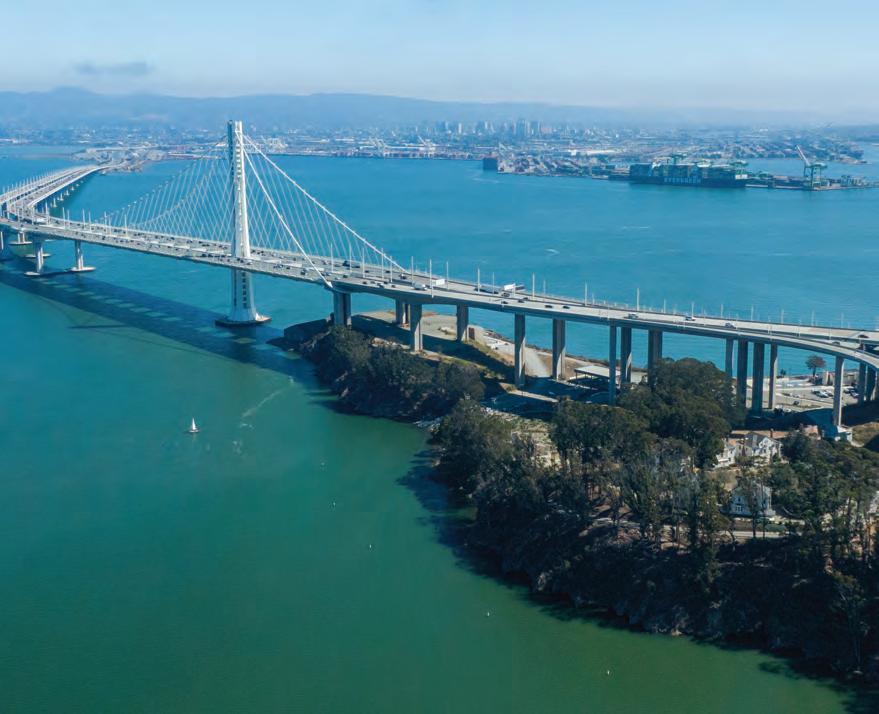
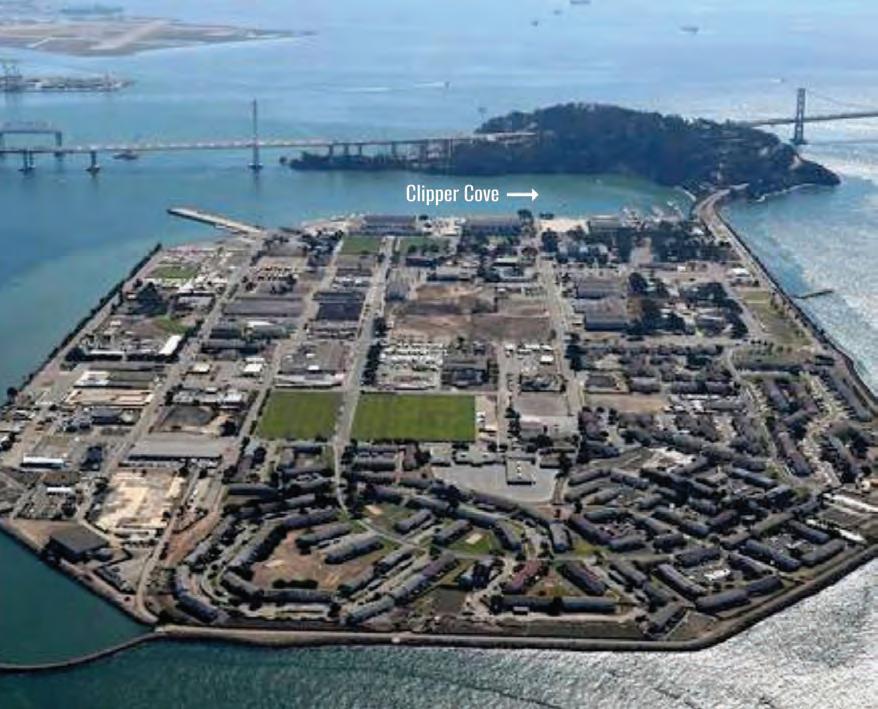
www.LatsAtts.com 131
Aerial view of Yerba Buena and Treasure Island
Aerial view of Yerba Buena Island and the Bay Bridge
radium. For years the radioactive material and other contaminants were dumped in large garbage pits that have since been developed over. Chris and I walked past the corner of Avenue E and 11th Street, where the Navy discarded used equipment in what they called the “South Storage Yard,” but today, that dumping ground is an elementary schoolyard. On the corner of Avenue D and 11th Street, where the island’s daycare center is now located, the Navy buried trash and “burned debris.”
As we walked past these previous dumping grounds, my skin crawled with the idea that children were being carelessly exposed to such horrors for years. The effects of this mass exposure aren’t widely known (yet), but the contamination has had clear social and economic consequences, such as delaying a city blueprint to provide quality housing.
While Treasure Island’s name implies that there was something of value buried beneath the soil it was resurrected from, I couldn’t help but think that radioactivity lies beneath where “X” marks the spot. The wind carried the sound of children’s laughter from a playground in the distance as we walked back to Avocet that evening, dismally carrying our newfound knowledge with us.
X Marks the Spot
Given Chris’s profession as a cinematographer with an emphasis on storytelling and my tenacity for chasing down a good story, we were a match made in marketing heaven. When we cast off our dock lines, we knew we wanted to capture the history, beauty, and future outlook of the places we visit through written word, photos, and videos. Treasure Island was the perfect place to put our ideas into action, so when the museum responded to my request to meet with an enthusiastic

Clipper Cove and the Real Treasure of Treasure Island 132 Latitudes & Attitudes | #42 Spring 2023
s/v Avocet
“yes,” we got to work drafting questions and pulling out what video gear we needed.
Much like the rest of the island, The Treasure Island Museum is a work in progress with a sign on the door stating exactly that: As redevelopment of the islands progresses, the museum will remain open and accessible. But street, parking, and transit patterns will be in flux for the next few years. The large white city-official-looking building stood out against Yerba Buena’s ruggedness and Treasure Island’s urban development, and we were eager to see what treasures awaited us inside.
“My name is Annamarie Morel and I am the Museum Manager.” the young woman stood in front of our camera and began answering our questions with the brightest smile on her face. Beforehand we had spent a few minutes scouting the best place to film in the expansive historic building that seemed to have more surface area beneath the ground than above.
The Treasure Island Museum was founded by the Navy in 1975, occupying the lobby of one of the original airport buildings constructed in 1937-38. This “Administration Building” (known as Building One) has served through the years as the administrative center for the Golden Gate International Exposition (GGIE), a terminal and ticketing office for Pan American Airways, and headquarters for the Twelfth Naval District. The Navy/Marine Corps Museum opened to the public in 1975 with exhibits representing the Navy and Marine Corps from the early 1800s to the present. Over time, the museum’s collecting and exhibiting areas evolved to include the U.S. Coast Guard as well as non-military themes: the GGIE, the Bay Bridge, Yerba Buena Island, and related subjects. As its scope expanded, the name of the museum was changed to the Treasure Island Museum. Currently, the museum is focused on funding, designing, and building a 3500 - 4000 square foot museum in space committed by TIDA on the ground floor of Building One. In the meantime, it plans and mounts exhibits, manages a growing collection, and organizes lectures, events, and tours.
Although she had only been with the museum for a relatively short while, Anna spoke as if she had been there her whole life, indulging us in detailed answers to our many questions about the museum’s past, as well as the two island(s) that encase Clipper Cove. Much like the museum, Treasure Island has hosted a spectrum of inspiring human achievements in art, architecture, engineering, and visionary national and civic endeavors starting with the creation of Treasure Island itself!
As the United States prepared for WWll in 1941, the U.S. Navy moved onto Treasure Island, transforming it into a major training and education center. Millions of personnel were shipped overseas following their training from Treasure Island. By the time the war ended in 1945, aviation had changed dramatically; the Pan Am Clippers were no longer in regular service, so the island was never developed as an airport.
The Treasure Island Naval Station was closed in 1997 and leased to the City of San Francisco. Shortly afterward, the enormous hangar buildings were converted to sound stages for feature films such as The Matrix, Parent Trap, and Indiana Jones and television shows such as Nash Bridges and Discovery Channel’s Prototype This!
Treasure and Yerba Buena Islands are now in the beginning stages of a sustainably designed redevelopment project which will create up to 8,000 residences, open space across three-fourths of TI and much of YBI, and a compact mixed-use commercial center serving island residents. The American Institute of Architects honored it as a “new urban ecology with innovative sustainable strategie.” Hopefully, the artificial island will soon become a destination for Bay Area residents and tourists from around the world to enjoy waterfront promenades

www.LatsAtts.com 133
that will display public art and offer spectacular views of San Francisco and the Bay.

“So… that’s basically it!” Anna said through a cheery wide grin. We thought it best not to address the questions about the Navy’s (literally) toxic legacy, given that the island is so eager to make positive changes for not only its residents but also its future visitors. Of course, the past cannot be ignored. Still, the island’s dedication to improvement is admirable and worth celebrating, not something we want to soil by focusing on such a detrimental time in history. Anna introduced us to Atta Pilram, island resident, museum board member, and the Treasure Island Yacht Club commodore, who was kind enough to take the time to chat with us about sailing in the bay and show us the club. The yacht club was located downstairs, with large windows overlooking Clipper Cove. “There’s Avocet.” I pointed to our boat that sat patiently awaiting us in the anchorage. While Chris chatted with Atta about our sailing plans, I flipped through the club’s collection of magazines hunting for the latest editions I hadn’t read yet. In the pile, I found the Spring 2022 edition of Latitudes & Attitudes that featured yours truly on the cover. “I didn’t realize we were in the presence of celebrities!” Atta flattered us, but I was truly just proud to see my published work in a yacht club far from where I had originally submitted it, proving how close-knit the sailing community really is.
So, what is the treasure on Treasure Island? Perhaps it was originally the alleged gold in the soil used to resurrect the island, or maybe sadly, the radioactive isotopes, but today Chris and I think that the real treasure lies within the hearts of the people who keep the history alive and continue to fight for healthy progress, who will undoubtedly turn the island into a gem of the San Francisco Bay.
Our crew of three spent eight days anchored in Clipper Cove, which was longer than expected but all for good reasons. It was protected, easy to get to shore, and a relaxing start to our cruising journey, but we knew that it was time to move on to the next adventure. The islands shrank off our stern as we set our course for our new anchorage, another island just to the west, but that’s a story for another time.
ABOUT THE AUTHOR
Marissa lives aboard her Cheoy Lee 41’, Avocet, with her husband, Chris, and cat Cleo. The couple has been refitting the boat since 2018 and recently cast off for cruising life. You can follow their adventures on their website www.svavocet.com or their YouTube Channel, Sailing Avocet.
134 Latitudes & Attitudes | #42 Spring 2023
Clipper
and the Real Treasure of Treasure Island
Cove



www.LatsAtts.com 135 GOT A NEW HAIRCUT OR TATTOO YOU’D LIKE TO SHOW OFF TO THE WORLD? Do you have a pic of your life at sea that you think tells a good tale? Send it on over! Just tell us who you are, where you are, and (if you have it) your social media handle and you just might make it into the magazine! Won’t that be a hoot! Email your photos to us at submissions@latsatts.com! SEND US YOUR PICS AND WE’LL BE HAPPY TO DISPLAY FOR ALL TO SEE!
Are U Ready 4
Northern Badger Adventures? and other Death’s Door
By Mark Reid
What looks and feels like the Maine Coast, minus lobster, salt, and low or high tides? What lacks the peninsular grandeur of Michigan and the magic of Mackinac, but where it is warmer than Thunder Bay but colder than Put-In-Bay?
Or finally, where in the world can the fanatical locals take something like a pirate’s hat and fashion it to look like a wedge of cheddar cheese?
Well, it is a place that I never imagined I would be writing about or fawning over for a sailing story, nor is it where anyone really thinks about sailing or cruising in our short summer months because the sun sets on the “other” side which is probably why the donkey-dong shaped great lake is called Michigan and not…drum roll, please, Lake Wisconsin!
Yes, this is all about the maritime and on-the-water delights to be found in the Badger state of Wisconsin.

From the psychedelic sand caves of the Apostle Islands on the big lake they call “Gitchee Gumi” to depths of the greenest of Green Lakes to all the waterpark fun that can be found in the Dells and finally thru “Death’s Door” itself, there is a lot more to Wisconsin than the Green Bay Packers or Milwaukee’s finest.
Door County is where one of my longtime bucket list adventures was finally fulfilled this past summer presents itself in many ways, like the aforementioned rocky Maine Coast minus the lobster but plus whitefish, walleye, and a maritime heritage that can only be found if discovered.
and
136 Latitudes & Attitudes | #42 Spring 2023
Article
Photos
Death’s Door Maritime Museum. Photo from Mark Reid
Death’s Door Maritime Museum.
When you reach my age at 64, it was more than a June 4 Paul McCartney remembrance for me. “Bucket lists” take on a new meaning and significance.
Over the last couple of months and into the next few years, there are several to knock off, and no, it isn’t some exotic far, away pipe dream like Tahiti or Paris, though I am always open to adventure!
They are mainland American destinations and goals, many years in the making. This January it will be biking Coastal Highway 1 from San Luis Obispo to Monterey thru Big Sur. Definitely fodder for new material and stories! I will keep you posted.
Anyway, Door County in Wisconsin has always been on that short list. I can’t tell you how many times I had passed it by on my way from Minnesota’s North Shore (home for many years) to Mackinac Island (likewise) and down to Grand Rapids - our family’s home base.

Whether it be by car, rail, or sail, there are plenty of opportunities. A couple of misnomers to avoid are: “You know, Door County is a lot like Cape Cod.” No, it’s not, not even close. More Maine Coast than any place I know or have been to.
Or it is very similar to Leelanau County in Michigan. Yes, they are on opposite sides of Lake Michigan, but the similarities end there.
Aside from my first adventure in 1963 on the Badger Boat – the coal-fired car and passenger freighter that runs from Ludington, Michigan, to Manitowoc. The memory that serves me best was taking my son when he was five.
For him, it was like riding on the Titanic. Of course, we took the midnight boat across the frigid waters of Lake Michigan, and as we crossed, gazing at the billions of stars above and as Mitch seemed to cover the old steamship from one end to the other, my memory was encapsulated in the rich heritage and seasonal tradition that the Badger’s crew judicially follows year in and out that traps you in a 1950’s time era celebrating everything from “badger” bingo to the “badger” buckets that are sometimes needed when the old boat rocks back and forth.
What I do remember from many of those overnight trips was how much exuberance my son displayed from dusk to dawn, and all I wanted to do was catch some zzz’s and count some sheep.
But, enough of that, the Door County Peninsula kind of begins in Sturgeon Bay and ends 63 miles up the winding
coast at the Death’s Door Maritime Museum, adjacent to the ferry that heads to Washington Island.
We started our adventure a few clicks to the East in the tiny, quaint little fishing village of Algoma, which has quite a historical legacy of its own. Originally founded as Ahnapee, the town changed its name with the advent of railroads and industry.
On the night of our arrival, the town was having a community picnic at Heritage Park near the marina, and we were warmly welcomed even though I was wearing my Chicago Bears colors!
Of course, I had to give the “da Bears” greeting, but they knew with Rodgers as a quarterback, they owned us. That said, of course I ordered a couple of brats...when in Wisconsin! They were awesome.
Downtown Algoma had the feel of a bygone era from another century when railroads opened the frontier with the advent of factories and mills. The architecture in town heralded that time, and each building, lovingly preserved, encapsulated the ghosts and memories that give the town its warmth and character.
The channel was a bit algae-slimed, but the local harbor was filled with fishing boats and not too many masts in the air, but the coastal village retains much of its charm as it hosts “Shanty Days” each and every summer.
We made our way to Sturgeon Bay the next day. I spent a great deal of my time down in the depths of the bustling shipyards, which were full of lake freighters and ferry boats in either drydock or under repair.
The town itself was colorful, but Door County beckoned. Egg Harbor was only a short, but a world’s distance away as the marine industry gave way to charming, picturesque fishing villages, yes, reminiscent of New England, but very Midwestern, obviously no low and high tides, with nary a sea salt scent in the air. But plenty of seagulls!
I was on a mission, though, as we worked our way up the peninsula towards Porte de Morts or “Death’s Door,” which is the legend and mythology and “Genesis” of where the Door in Door County’s comes from as the passage between the tip of the Door Peninsula and Washington Island is where many ships met their fate at the bottom of the lake in a passage that is a laden watery graveyard.
“Death’s Door” comes from indigenous Pottawatomi stories and tales passed down through multiple generations until the fable made its way to French explorers as, over the centuries, daring ship captains
Are U Ready 4 Death’s Door and Other Northern Badger Adventures?
would tempt fate, ultimately in many cases to their own demise.
It is a treacherous passage at best where fog can materialize without warning or notice as if generated for special effect in a John Carpenter horror movie. The narrow passage is riddled with rocky shoals and tricky currents.
Eventually, when the first lighthouse was built in 1837 off Rock Island, it made more sense and saved “cents” to take the long way around than to risk becoming “Davy Jones’” next (Door) neighbor. However, these days many Great Lakes freighters navigate the waters through the Sturgeon Bay ship canal, which was constructed in 1881.
Much of the history of the peninsula and some neat artifacts can be found at the Death’s Door Maritime Museum in Gills Rock which recreates and traces much of the region’s rich fishing and shipping history and heritage.

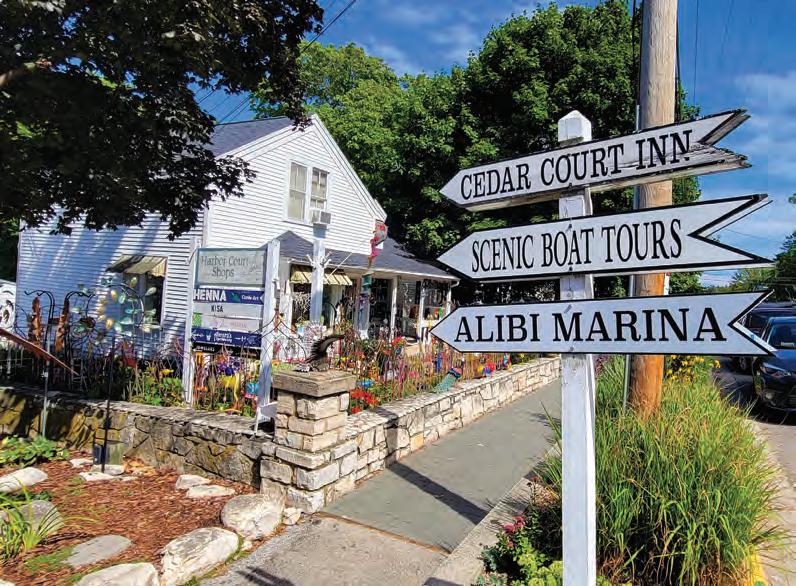
As Robin and I traversed our way back thru Sister’s Bay past Ephraim and into Fish Creek, lunch was very much on our minds. It is a very walkable little village, and restaurants would be more of a roll of the dice than being presented with an obvious choice. It had to have the best of both worlds - local fish for me and gluten-free options for Robin, so we ended up landing at the Bayside Tavern. After lunch, we continued our afternoon exploring as much as we could take in without overloading our senses.
We trooped around, making
138 Latitudes & Attitudes | #42 Spring 2023
Death’s Door Maritime Museum. Photo from Mark Reid
Death’s Door Maritime Museum. Photo from Concert and picnic at Heritage Park in Algoma, Wisconsin.
Shops in Fish Creek.
the best of our time in August. It was actually perfect timing because the kids had gone back to school and the Fall colors hadn’t kicked in yet.
There are multiple marina and mooring opportunities in and around the tiny fishing hamlets that dot the peninsula. Sailing adventures abound as well, given the fresh breezes that can make Lake Michigan an enjoyable place to cruise during its short summer months; there are more than 34 islands that surround Door County, but really only 13 make an inhabitable grade to visit or dock.
My brother has a Catalina 30, which he rebuilt and brought back to Lake Michigan after purchasing it on the shores of Lake Erie in Vermillion. It provides the perfect platform for sunset cruises or to compete on a Wednesday night beer can buoy race at a yacht club here or there.
There is a certain piece of mind and nirvanic state when it comes to sailing. It is a bond with nature as you let the wind, water, and waves guide you on your way.


The water in and around Door County, bar the treacherous short cut are a fabulous place to cruise and take in all the islands and inlets. Yes, there is an occasional fly or mosquito, but there is nothing like boating on one of the Great Lakes, whether you’re geared up and netted from head to toe or not.
By the numbers, there are eleven lighthouses to visit, multiple museums and
 Death’s Door Maritime Museum. Photo from Mark Reid
Death’s Door Maritime Museum. Photo from Mark Reid
Another beautiful Lake Michigan sunset.
Yours truly taking in some sun and fun on Lake Michigan.
Death’s Door Maritime Museum. Photo from Mark Reid
Death’s Door Maritime Museum. Photo from Mark Reid
Another beautiful Lake Michigan sunset.
Yours truly taking in some sun and fun on Lake Michigan.
Are U Ready 4 Death’s Door and Other Northern Badger Adventures?
heritage centers, plus five state and nineteen county parks. There are more than 14 municipal marinas and docks with haul-out opportunities beyond just Sturgeon Bay.


Whether it is Fish Creek or the Sister Bay Marina – it also is the home to Bay Shore Outfitters, where you can pick up anything that you may have forgotten for your maritime needs.
For sailors, power boaters, kayakers, and canoes, Northern Wisconsin has much to offer beyond my bucket list adventure in Door County. The Apostle Islands on Lake Superior is an epic journey in itself which requires either a massive haul through the locks at Soo Saint Marie and westward past Whitefish Point or, better yet just make it a trailer trip and pull your boat and weight there.
Of course, when yearning turned to learning within the spirit of Porte des Morts’ illustrious, sometimes violent, tragic history, it is the passion for this particular bucket list adventure that created a tapestry that is now interwoven into another layer of fabric in life. If you are starting your trip on the Minnesota shore, you can see the sprinkling of islands on the horizon; it doesn’t seem so far. After all, seeing is believing.
140 Latitudes & Attitudes | #42 Spring 2023
Death’s Door Maritime
Death’s Door Maritime Museum. Photo Anderson Dock.
Graffiti from Anderson Dock in Ephraim.
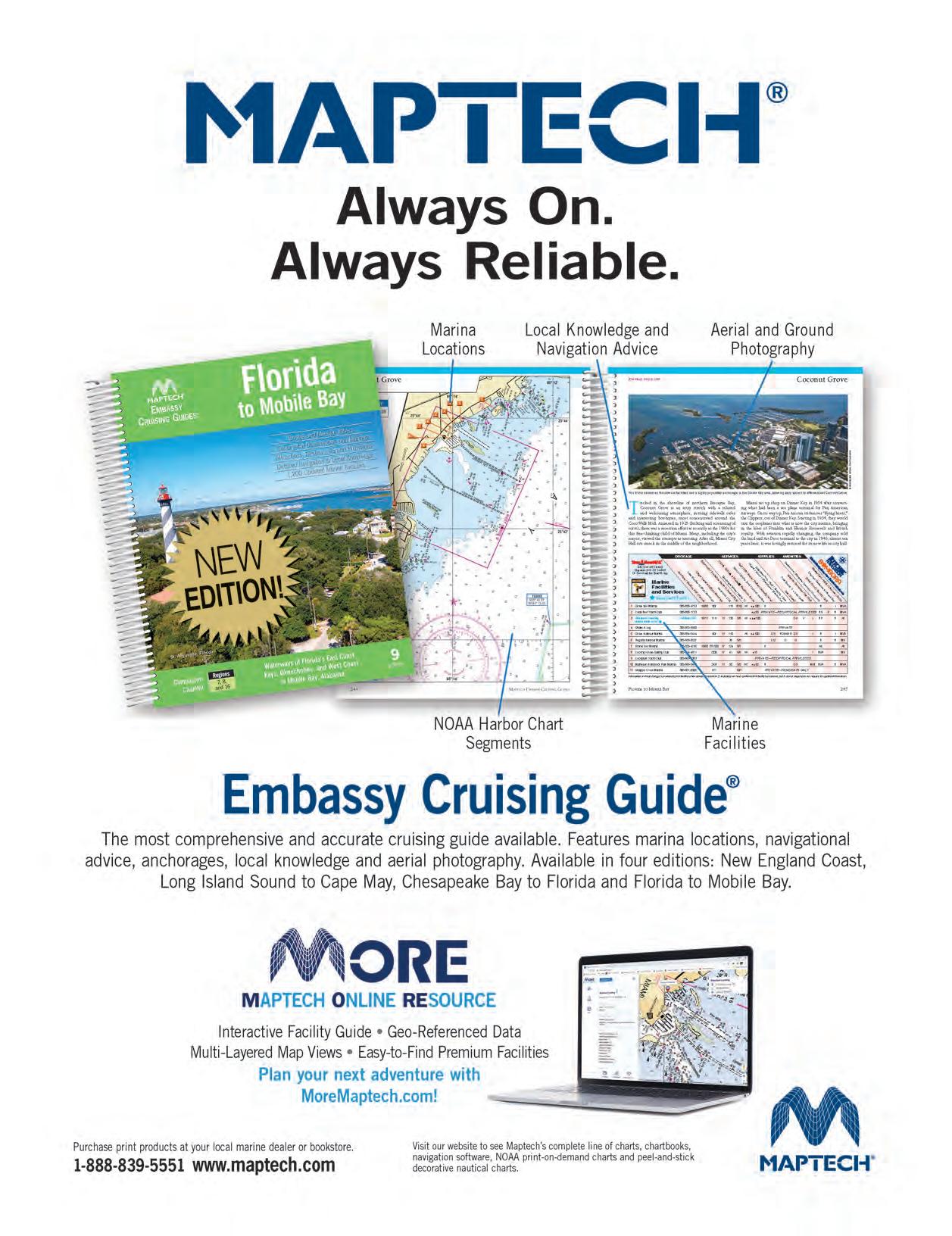
Normally I review books from our readers, sharing their personal tales of adventure. This book, however, is a biography of a member of our tight sailing community, though most, including me, have never heard of Thomas Thor Tangvald. The author is an active bluewater sailor in his own right with several previous books on sailing and states in his Preface that he was constantly asked two questions while doing research for the book.
First, how had he learned Thomas Tangvald even existed, and second, had he ever met Thomas personally? The answer to the first question goes back to his early sailing years when he read the memorable book At Any Cost, an autobiography by Thomas’ father, Peter Tangvald, with the final few pages written as an epilogue by Thomas, who, at the time, was still a young boy. The answer to the second question was, “Sadly, no.”
Fast forward to 1999, and Captain Doane finds himself in Culebra, an island in Puerto Rico, where he meets up with an old Caribbean sailor who remembered when Peter Tangvold and his son Thomas, 15 at the time, and younger daughter Carmen age seven, all lived together on Artemis de Pytheas, Peter’s self-built, engineless, wooden gaffrigged sloop. (Lin and Larry Pardey, the famous cruising couple, dedicated one of their early books to Peter Tangvold, saying they were greatly influenced by his book Sea Gypsy and calling Peter a real Self Sufficient Sailor, the title of their book).

BOOK REVIEW

 By Capt. James F. Cash
By Capt. James F. Cash
The Boy Who Fell To Shore
By Charles Doane
hurricane zone for the season. Thomas, by this time, had acquired his own small boat, so the plan was to sail Artemis and tow the Spartan in which Thomas was riding. As they neared their destination in poor visibility, Artemis runs aground and, in minutes, is dashed to pieces. Thomas, riding back in his boat, sees this and manages to escape and make it to shore while watching both his father and little sister die in the wreckage.
The story begins in July 1991 as Peter decides they should sail south from Culebra to Bonaire to get south of the 142 Latitudes & Attitudes | #42 Spring 2023
From this beginning, the story of Thomas Thor Tangvald unfolds. Now orphaned at age 15, Thomas goes to live with his Godparents, Clare and Edward Allcard. Edward and Peter had been friends since the 1950s, and Edward was a sailing celebrity in his own right, having been the first to sail from Europe to America and back single-handed in 1949-1950. They took Thomas to live with them in the mountains of Spain.
We then start learning some of the backstory and find out that Peter met Thomas’ mother, Lydia, while sailing around the world, and Thomas was born at sea aboard Artemis while crossing the Indian Ocean. Later, as described in Peter’s book At Any Cost, Lydia was shot when they were attacked by pirates in the Sulu Sea, and she fell into the water, never to be seen again. Thomas grew up mostly living aboard but occasionally was sent to school on land, where he proved to have a genius IQ.
The Allcards sent Thomas to school, and he was accepted to all the famous universities like Oxford and Cambridge and chose Leeds, excelling in academics. Perhaps because college was too easy, he got into the drug scene and started selling LSD, according to his later writings, “until he could afford to buy a proper yacht” and indeed purchases an “Itchen Ferry” cutter named Melody, leaving England, sailing single-handed back to the Caribbean. However, as is often the case, being back in one’s hometown did not prove as satisfying as one thinks, and Thomas got back into drugs and was hounded by the police, often jailed, but apparently, due to his wit, charges were always dropped. He had various relationships, always living on and caring for his boats, of which he had developed quite a fleet of derelicts.
Thomas meets Christina and falls in love. He tries life ashore but becomes disenchanted and buys a Puerto Rican “Nativo Sloop” named Oasis to, as he states, “escape Babylon.” His plan was to sail to Brazil. After issues with Christina, Thomas sails off in Oasis toward the island of Fernando de Noronha, Brazil, never to be seen or heard from again, and later is declared to be “Lost at Sea.”
There has been a lot of speculation about Thomas’s disappearance, some believing that with his sailing skills, he would not let his boat flounder and he must be hiding away somewhere under a different identity. The most insightful aspect of this book is the inside glimpse at the unconventional, full-time liveaboard cruising community of which Thomas and his father, Peter, before him were a part.

www.LatsAtts.com 143

144 Latitudes & Attitudes | #42 Spring 2023
Death’s Door Maritime Museum. Photo from Mark Reid s/v LIAHONA
WITH LIAHONA
We met an amazing couple aboard a beautiful boat LIAHONA in the Caribbean. Willie and Mark have lived aboard boats for many years. Willie shares their story:
“I am a New Yorker of Puerto Rican parents. I grew up in the Bronx, Brooklyn, and Queens and became a physical therapist (retired now) with over 30 years of clinical experience and teaching. My husband, Mark, was born in Madison, Wisconsin, but lived in Brazil during his early years, then grew up in Philadelphia.
“I met Mark in Staten Island, New York. I had a clinical position at the Marine Hospital. He was sailing in a friend’s custom boat to Florida. We met through friends, and he took me sailing at night in New York Harbor. Very romantic! I had never been sailing and instantly fell in love with it. And I liked him, but then he sailed away. We kept in touch, and I used some leave time to go visit him on his new boat, a Colombia 28. We sailed to a Lynyrd Skynyrd concert. A couple of months later, Mark brought the boat to Staten Island, and we agreed to get married. We were married in December 1974 in the Cathedral in Old San Juan. In February of 1975, we decided to live aboard and bought a Coronado 35.
“We always, always wanted to cruise from the time we were married, and we just got diverted by family issues (parents and kids) and careers. When our daughters were in their teens, we started talking about retiring after they had gone off to college and buying a boat to live on. They were quite upset that we would do this without them, so we sold the house and bought LIAHONA. We continued to work, and they continued to go to school in Miami, but we spent lots of weekends and vacations in the Bahamas or the Florida Keys.
By Robin Stout, Life Aboard editor
“We bought LIAHONA in 1998 and have lived on board ever since. LIAHONA is a Nautical Development Corporation 60. She was built in Largo, Florida, in 1981. Nautical Development Corporation built three sizes: 57’, 60’, and 62’. Each

www.LatsAtts.com 145
NOODLING
size had two versions: an owners version and a charter version. Ours is an owner’s version, although the previous owner did have her in charter in the USVI. Prior to being named LIAHONA, she was called SEPTEMBER MORN. We have run into charter captains who recognize her. Everyone always asks, “What does LIAHONA mean?” The previous owner was Mormon, and, briefly put, LIAHONA is a compass of faith from the Book of Mormon. You’ll see other boats named LIAHONA with a compass rose painted on their hulls.
“When we first got LIAHONA, she had four staterooms (two forward, one midship, and the master stateroom aft), two shower rooms, and four heads. We immediately removed the head to the midship stateroom and installed a washing machine. After the girls no longer lived onboard, we combined their two forward staterooms into one and converted one of their heads into a hanging locker. Now we have a large guest room with one head and a shower room. The other major change was converting a day bed into a desk for my use since I was still working when we moved on board.
“Over the years, we’ve done the usual: new counter tops in the galley, rebuilt engine, rebuilt transmission, reupholstered everything, re-painted the topsides, replaced the sails. We did replace the Bimini with a hard top.

“The best thing about living on a boat is being able to cruise from island to island (really country to country) and stay long enough to learn about its people and the culture. The worst thing is bad
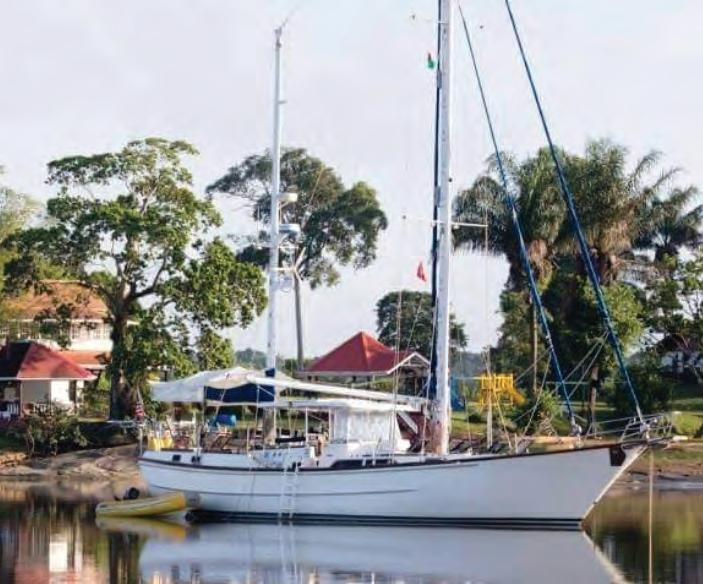
146 Latitudes & Attitudes | #42 Spring 2023
Noodling with Liahona
Death’s Door Maritime Mu- Mark and Willie
weather, be it sudden squalls at sea or hurricanes bearing down on you.
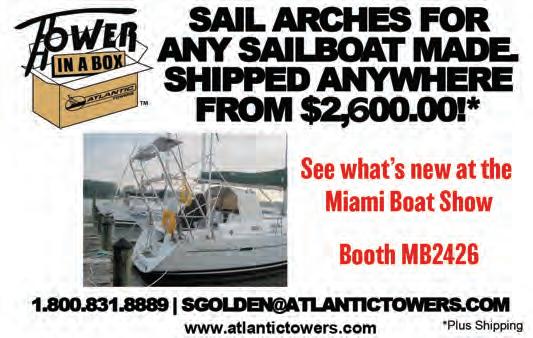



“It’s wonderful when the kids, grandkids, and friends visit. Our daughters and their husbands visit us wherever we are. They love it, and I love having them. As an only child, I especially love it when they’re all here at the same time. The more hustle and bustle, the happier I am. On his last visit, my grandson (then seven years old) learned to swim, free dive, and snorkel. His grandfather “accidentally” lost the training wheels on his bike, so he learned to ride a bike without training wheels.
“My life changed when I learned to noodle in the pool at the Marina de Salinas in Puerto Rico from three other sailors: Jeanette Deale on SEA LION, Mary Liz Hepburn on WANDERING ALBATROSS, and Jane Rogavin on JARANDEB. Noodling is water aerobics using a pool noodle. Later on, I met an aerobics instructor, Gosia Ziolkowski, on ALDEBARAN, and she contributed new exercises. When I left Salinas, I modified the routine for deep water and noodled at anchor. Gradually people started joining me. As they did, the routine adapted to what worked for others and what didn’t. It’s a fluid routine that is constantly changing. I learn new exercises when new people join me or when I join a new group. I started teaching groups of cruisers (and locals) to noodle in anchorages or off beaches where ever we are. It’s been loads of fun, and great to see everyone enjoying themselves while contributing to their physical health.
“In 2012, Sally Erdle asked me to write an article on Noodling for the September issue of Caribbean Compass, and in 2013, that article formed the basis for the e-book, Noodling at Sea. The proceeds of the book are donated to Hands Across the Sea, an organization that buys new books and builds libraries for underprivileged children throughout the Caribbean.
“Living on the boat all these years, we’ve had some great experiences. One of my favorites was sailing to Guyana, where we raced the rapids on the Essequibo River and went to Diwali. Diwali, also known as the Festival of Lights, is a Hindu holiday that celebrates the triumph of good over evil. Every year Guyanese light small clay bowls called diyas to fill their homes with light, goodness, and merriment. Another was the
www.LatsAtts.com 147
first time we went to the Antigua Classic Yacht Regatta and chased the classic yachts through the swells in our 11’ dinghy, with me taking pictures of the sky, the floor of the dinghy, and occasionally the yacht. (That was a hoot.)

“All of these memories stand out because of how unique these were for me, a girl from NYC. They are all inextricably tangled with memories of the people we met or the people who traveled with us — also, the people who made a mark on our lives and are no longer on this earth. Guyana reminds me of Jo Gordon (OUT OF AFRICA) sitting on the edge of a cliff and leaning out to get that one perfect photo of Kaieteur Falls. Noodling in Ste. Anne Martinique reminds me of Devin Taylor (MOOSETRACKS) showing off how he could balance and hold his arms up while I flailed. I’ll never be able to go to Trinidad without remembering Beth Smith (CAPE), the child I met who grew into a beautiful young woman. And I’ll never be able to go just about anywhere in the Eastern Caribbean without thinking of Ellen Husted Tishbin (MICLO III) enjoying life to the fullest no matter where she was or what she was doing.

“Of course, things haven’t always been smooth sailing. One of my worst experiences so far was the storm on Lake Ontario in 1976. It was my first big storm, and I was terrified. I couldn’t release the steering wheel. I was so sure no one else could steer as well as I. We limped into Rochester Yacht Club at midnight and were welcomed by them the next day. They knew what the conditions had been like the previous evening, and while they normally

148 Latitudes & Attitudes | #42 Spring 2023
with Liahona
Noodling
Death’s Door Mari-Noodling!
NOODLING WITH LIAHONA

did not allow transients at their dock, they decided to let us sleep. Then they fed us. Another is the Lobster mini-season in Miami. It was memorable for me because it was my first time hunting lobster as well as my first night dive. When we returned to the marina, there was a photographer from the Miami Herald. My hair was a tangled, wet mess, and my photo ended up on page one of the local news the next day. There was also the time we sailed to the Bahamas shortly after we had moved on to LIAHONA. We were lucky enough to have a couple of weeks off over the Christmas holidays and had planned a family vacation in the Bahamas. We knew the seas would be up before we headed out but figured it was only 8 hours to get to the Bahamas from Miami on LIAHONA. So, off we went, one of the girls sitting at the railing throwing up while we bashed through ten-foot seas. It all ended well, though. We reached Bimini, and we had a wonderful family vacation in the Bahamas.
“So what advice would I give to people who are considering this lifestyle? Be open to new adventures. Slow down and take the time anywhere you go and get to know the people and the culture wherever you are. Treasure each new experience, each new friend, and live life to the fullest. And finally, tie up your dinghy really well. It’s going to end up on the other side of the world if it gets loose.”
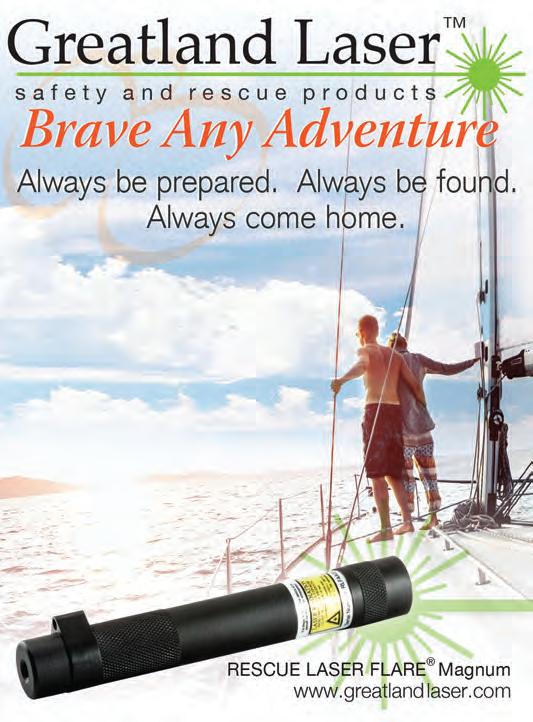
www.LatsAtts.com 149
I Found It At BOAT SHOWThe
Spurs Sail Drive
www.spursmarine.com

Event & Boat Show Section

The all-new Spurs sail drive line cutter is now available for select Volvo and Yanmar sail drives. These spline-driven cutters feature a slim design with no modification to the sail drive unit or the propeller required.

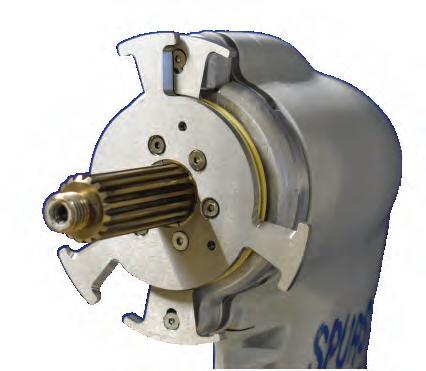

These rotating and stationary cutter blades are made from specially hardened stainless steel, using three heat treatment processes to develop a hardness of approximately 45 Rockwell C. This allows the cutters
to remain stable in saltwater with cathodic protection. The hardness is essential in maintaining the blade’s sharp edge, even in the most severe cutting conditions.
Learn more at www.spursmarine.com
150 Latitudes & Attitudes | #42 Spring 2023
Sunbrite Solutions fully dimmable lighting products conquers the night by up to 10 times more than the competition! Their patented technology allows for maximum light output and visibility unlike anything you’ve ever seen on the water.




Every light is precision made with optimal quality and performance. Each part is precision made with quality and performance in mind. Proudly Made in the USA, their compact housing, which includes the Faceplate, brackets and heatsink, is fully CNC machined of 6061 aluminum and side plates of billet
I Found It At BOAT SHOWThe
aluminum. Other components are Type II Class I Anodized or AAMA 2604 Super Durable Powder Coated. PLUS, their ultra-vibration damping mount allows the light to be mounted in any application causing zero disturbance and an unparalleled mounting experience. This makes Sunbrite lights the ultimate powerhouse in the most extreme environments.
Learn more at www.sunbriteled.com
Event & Boat Show Section

Sunbrite LED www.sunbriteled.com
www.LatsAtts.com 151
I Found It At BOAT SHOWThe
www.siriusxm.com/marine
Event & Boat Show Section


SiriusXM Marine’s service includes weather radar, lightning, storm cells, marine zone forecasts, sea conditions, wind forecasts and more. Their satellite-delivered service provides up-to-date info up to 150 NM offshore so you can cruise with situational awareness and confidence. Suspend your Marine service for up to six months at no cost when you’re not using your boat. Service is compatible with Garmin, Raymarine, Simrad, Lowrance, B&G, and Furuno hardware. Plus, add SiriusXM entertainment to your marine service at a discount and

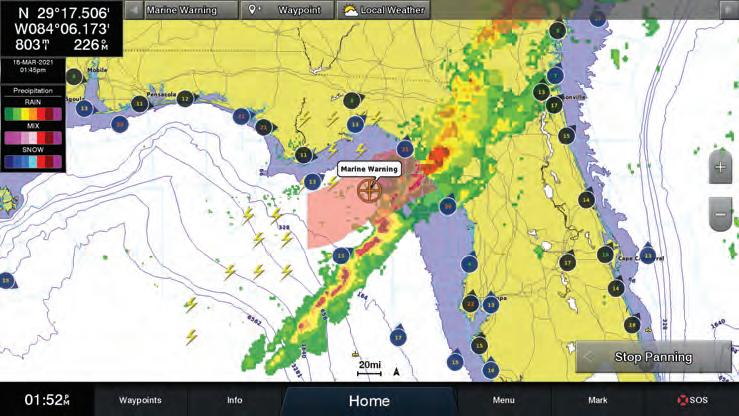
you’re all set for an incredible day on the water.
To learn more about SiriusXM Marine’s services, visit www.siriusxm.com/marine
To learn more about starting a 2-month trial and getting a $100 hardware rebate, visit www.siriusxm.com/marineoffers

152 Latitudes & Attitudes | #42 Spring 2023
Dragonfly Energy
www.dragonflyenergy.com

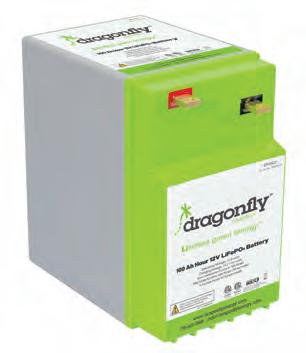

I Found It At BOAT SHOWThe
Dragonfly Energy is an industryleading manufacturer of deep cycle lithium-ion batteries and is spearheading conventional and solidstate lithium-ion battery research and development worldwide. Sold under the Battle Born Batteries brand, Dragonfly’s products are used for powering and charging devices and appliances, low-density mobility, high grade energy storage, and are ideally suited for applications where stability, longevity, and safety are a priority.
Their company’s goal is to reduce the cost of green energy storage, making it more widely accessible to all.
Learn more at www.dragonflyenergy.com
Event & Boat Show Section


www.LatsAtts.com 153
I Found It At BOAT SHOWThe
Event & Boat Show Section

The Flexboat SR 10 is robust and durable, making it an excellent choice for those looking for a tender or a leisure boat.
Using Hypalon (special fabric based on rubber and neoprene) for its tubes, for 28 years the Brazilian-born Flexboat brand is synonymous with inflatable boats.
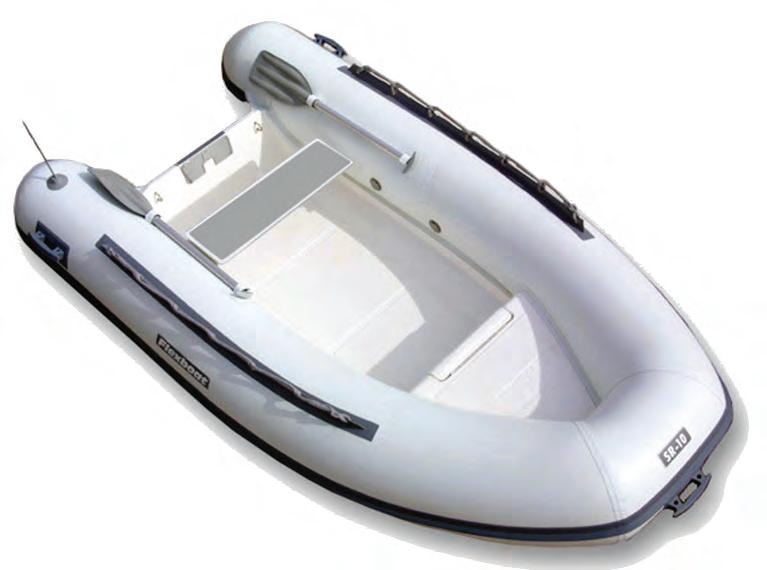

Boat Specifications

LOA: 10’ 3”
Beam: 5’ 8”
Weight: 150 lbs
Passenger Capacity: 5
Max HP: 20 HP
Recommended HP: 15 HP
Tube Diameter: 17”
Air Chambers: 3 (Independent)
Tube Material: Orca (Hypalon)
Flexboat
SR 10 www.flexboatinternational.com
Visit
www.flexboatinternational.com
154 Latitudes & Attitudes | #42 Spring 2023

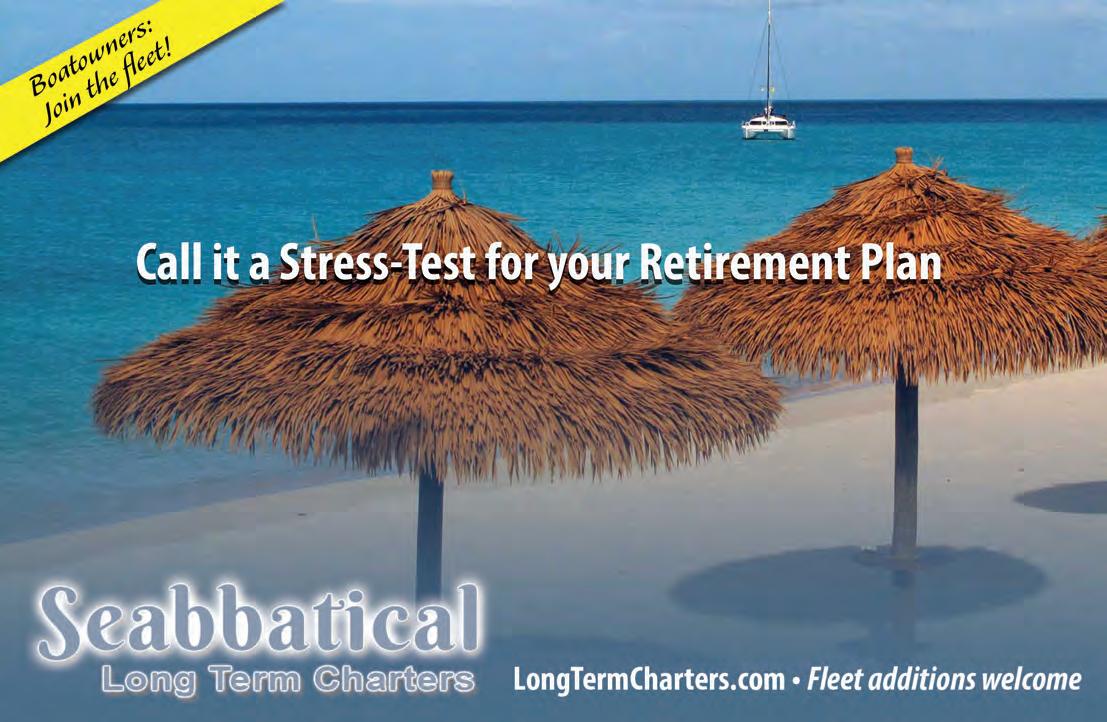
www.LatsAtts.com 155



www.LatsAtts.com 157

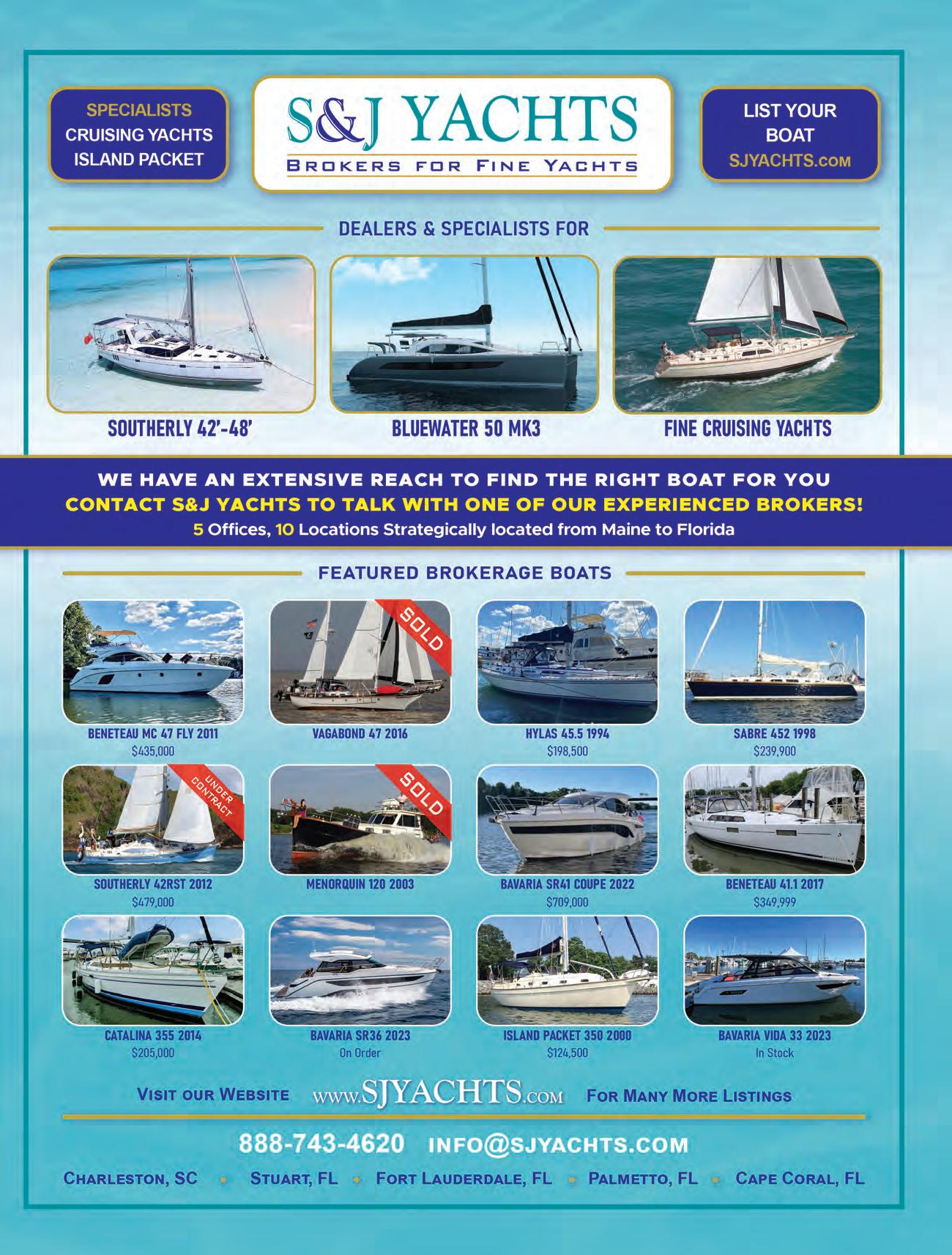

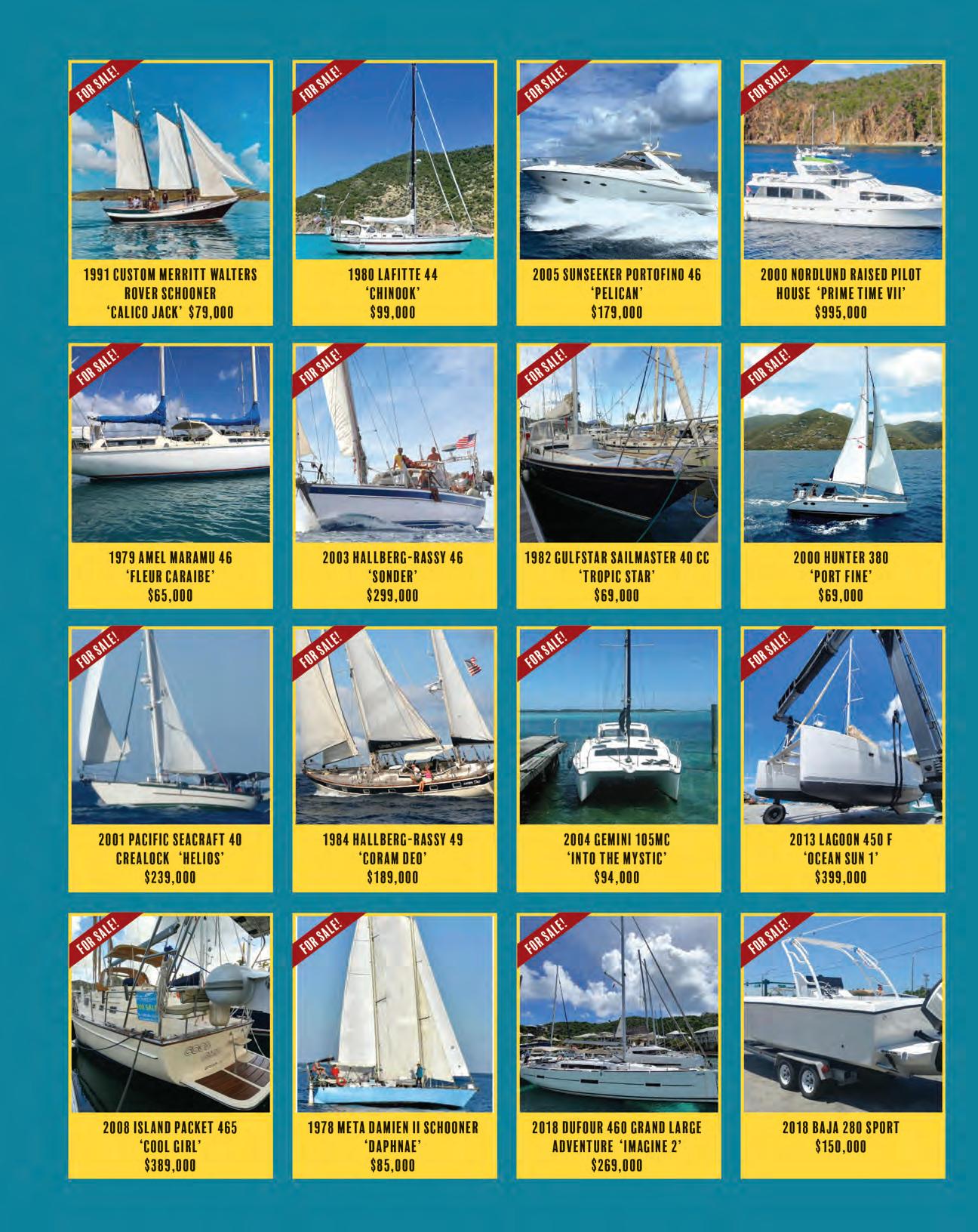



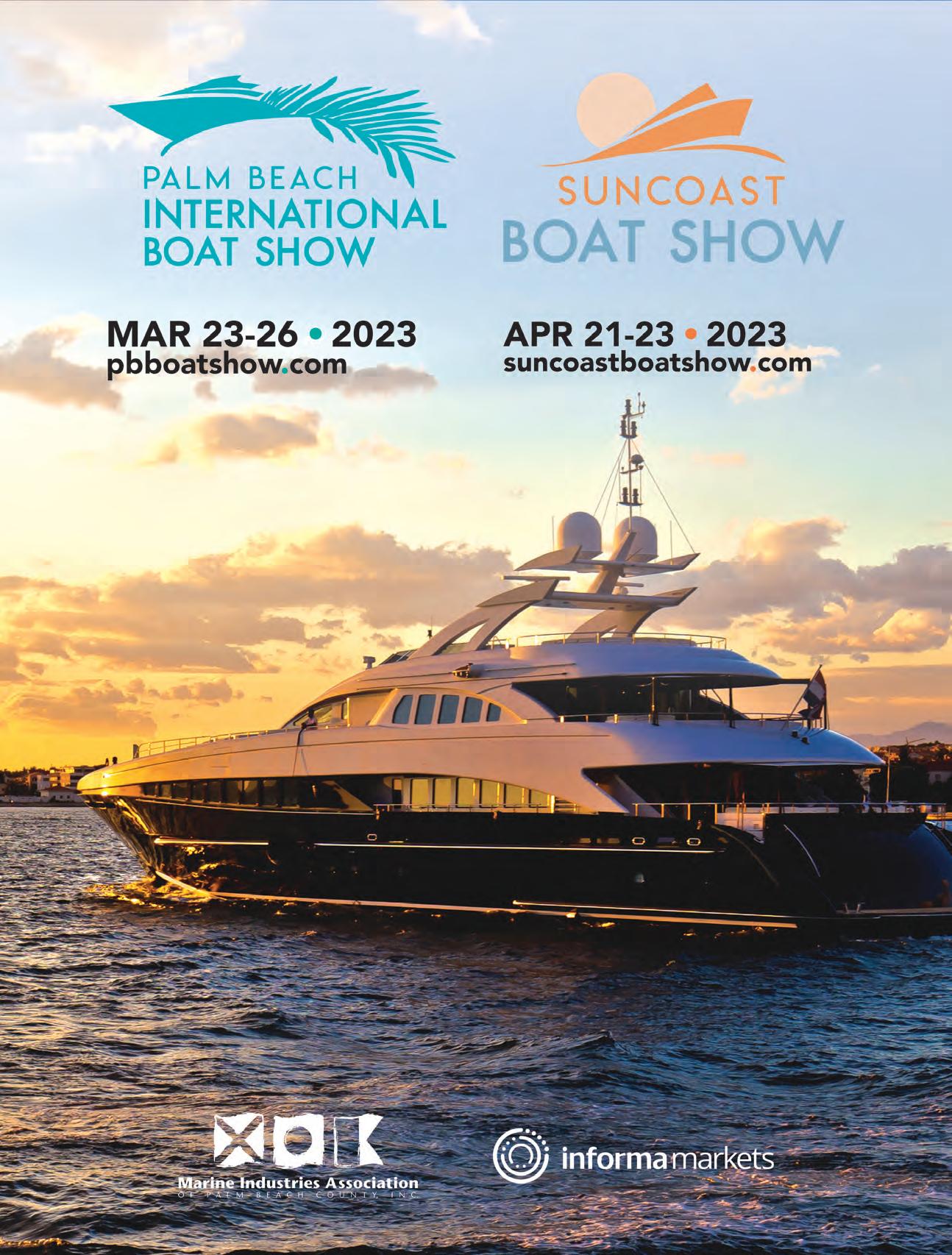



166 Latitudes & Attitudes | #42 Spring 2023


Join us for Share the Sail

November 4-11, 2023
Abaco Islands, The Bahamas
The Share the Sail team for an exciting 7-day charter throughout the Abaco Islands with Navigare Yachting.


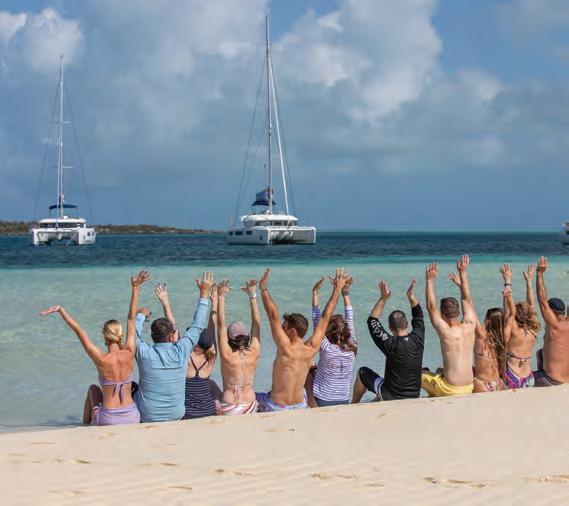

The Abacos have been The Bahamas’ boating capital since colonial times, and whether you are a sailing purist, willing to tack until the last gasp of wind, or just a sun worshiper joining the adventure to relax and explore with fins and snorkel, this is your paradise. The Navigare base is located in Marsh Harbor, right next to the Abaco Beach Resort, only ten minutes from the Leonard Thompson Airport.
Choose Your Catamaran
Select one of three sailing catamarans from Navigare Yachting.

40 Lagoon (4 cabins & en suite heads in all cabins): $2,500pp*
42 Lagoon (4 cabins & en suite heads in all cabins): $3,000pp*
450 Lagoon (4 cabins & en suite heads in all cabins): $3,500pp*
*Price includes: Provisioning for Breakfast, Snack and Lunch; Entertainment; Happy Hour Party; Welcome Dinner; Swag Bag filled with gear and gifts and of course lots of fun with the Bob and Jody crew. Please note this price does not include a captain. Single cabin occupancy available, please contact us for pricing. Other taxes & fees may apply.
Join
Share the Sail
168 Latitudes & Attitudes | #42 Spring 2023
Itinerary – 7 Days




DAY 1: MARSH HARBOUR.
The third largest settlement in The Bahamas, Marsh Harbour is the commercial hub for the Abacos. With an airport served by international flights and a ferry service which allows island hopping the Abacos Cays. Visit the Neem farm and the Abaco National Park which features blue holes and the Abaco Parrot.
DAY 2: HOPE TOWN.
Settled by British Loyalists in 1785, the quaint Hope Town has a unique history and picturesque architecture like no other in the Abaco. Overlooked by the red and white stripes of the Elbow Reef Lighthouse, Hope Town is best explored on foot.
DAY 3: MAN-O-WAR CAY.
Discover the boat building capital of The Bahamas. The Albury family (who operate the Albury Ferry service) are still in the boat building business today, Joe Albury builds handcrafted boats from his workshop.
DAY 4: GREAT GUANA CAY.
Beautiful beaches, a picturesque settlement, spectacular sunsets and world-class sailing are thehighlights of Great Guana Cay. Nippers Beach Bar and Grill is a renowned beach hangout, particularlyon Sundays when they have their pig roast buffet.
DAY 5: GREEN TURTLE CAY.
Home to a population of around 450, New Plymouth is the main settlement on the island where you will find the Albert Lowe Museum and Loyalist Heritage Sculpture Garden. Tour New Plymouth historical village, a small, sleepy 18th century village by the sea, with several restaurants, galleries, and gift shops, a museum and a few historical sites. The architecture of the older homes that make up much of the village is largely unique to the Bahamas.
Green Turtle Cay has some great diving and snorkeling sites along its outer reef. A fantastic base for discovering the Abacos unique marine life, it is within close proximity to the stingrays and sharks found at Manjack Cay as well as the swimming pigs of No Name Cay.
DAY 6: POWELL CAY & BONEFISH CAY.
If you venture out further north towards Spanish Cay, pristine white sand beaches and shallow creeks await. Your ideal stop to anchor and soak in the sun away from the crowds.
DAY 7: TREASURE CAY.
Adorned with a stunning three and half mile-long white sand beach with a beautiful backdrop of turquoise blue ocean. Treasure Cay is a small island resort destination with a full-service marina, golf course, water sports and beach service.


www.LatsAtts.com 169
Itinerary may change slightly. Act Now Secure your charter boat in the 2023 Share the Sail. Share the Sail Contact Us Toll Free: 877-775-2538 bahamas@latsatts.com latsatts.com/Bahamas
Do You Want to Be ( Sorta )
RICH AND FAMOUS
WE’RE HERE TO HELP!
Latitudes & Attitudes Magazine is all about making happiness happen. We’re offering you the opportunity to send in YOUR cruising stories for a nice chunk of change AND the chance to be recognized by a global cruising community! Just imagine the accolades…

If we think your story is a good fit for us (and let’s face it, if you’re a fan of this magazine, we know it will be), you’ll receive not only payment for it, but worldwide fame! We’re the #1 cruising lifestyle magazine on the planet, folks – we’ve got over 50,000 readers as well as over 30,000 social media followers. Your story won’t go unnoticed.
How does it work, you ask? It’s real easy... Simply write about your latest and greatest adventures at sea and send them (plus some amazing photos) to our editor at submissions@latsatts.com – we’ll take care of the rest!

Questions? Reach out to our content manager/self-proclaimed “grammar guru,” Frankie Krutsch, at editorial@kylemediainc.com, OR give her a ring at +1 877-775-2538

170 Latitudes & Attitudes | #42 Spring 2023

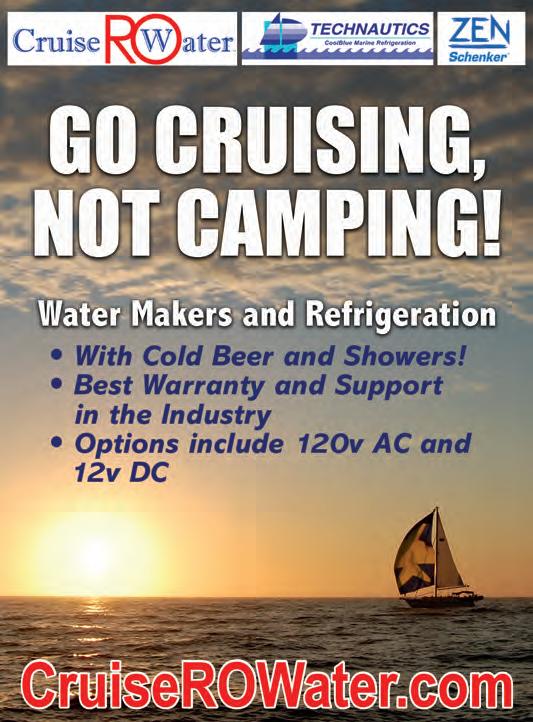



www.LatsAtts.com 171 Hard-to-Find “Stuff” for the Cruiser Bosun’s Bag The



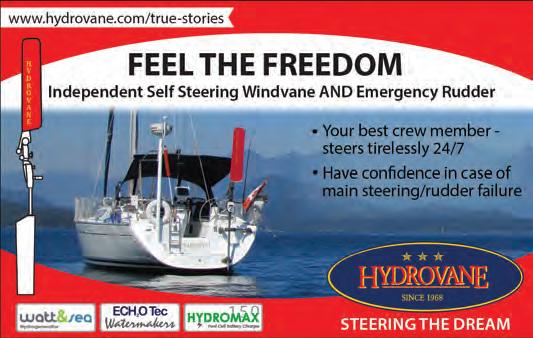


172 Latitudes & Attitudes | #42 Spring 2023






www.LatsAtts.com 173
Nautical Word Search










To Donate, Participate, or Volunteer, go to: CallOfTheSea.org Aboard Adrift Alongside Ashore Ayeaye Azimuth Bearing Belay Bilge Binnacle Bollard Bowsprit Bulwark Buoy Cable Captain Catamaran Chain Chart Cleat Crest Davyjones Decks Deep Derrick East Equator Fathom Flag Flotsam Fluke Furl Galley Grog Hatch Helm Holiday Lapping Latitude Maritime Mast Mess Moor North Ocean Oxeye Pier Pilot Pirate Pitch Plot Prow Radar Rain Reefs Repairs Rigging Scuttle Sheer Sink Siren Skiff Sonar South Stern Surf Surge Swell Tack Voyage Watch Weather West Wind Zigzag
on page 176
Answers
174 Latitudes & Attitudes | #42 Spring 2023
Across
1 Renowned pirate who was based in Jamaica, 2 words

7 Flag indicating a vessel ready to sail, 2 words
12 Yacht race
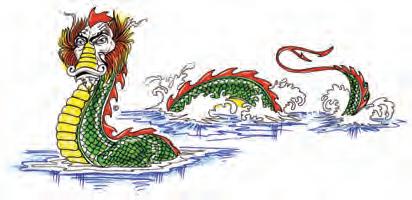
13 Coleridge’s “ancient _____”

14 “Jolly ____”- pirate ship flag
15 Barrier reefs off the east coast of the US, 2 words
journey
www.LatsAtts.com 175
Remove sail supports 9 Harbors in foreign lands, 3 words 10 Kids’ game 11 Redder, as steak 16 Put away 17 London TV network 18 Canoe-like craft 20 Like the head on a glass of beer 23 Light metal symbol 26 Toward the stern 27 Have a casual chat, 3 words 29 French privateer 30 Emotional intelligence, for short 31 Join ropes together 32 In the middle portion of a vessel 33 Number of seas in ancient Greece 35 Ship partition 38 Greek island 40 Mail Boxes ___ 42 Ships that travel frozen waters 45 Nautical line 47 Limited number 48 Super Bowl score, abbr. 49 Japan’s largest active volcano 50 Post-it
8
GIANT NAUTICAL CROSSWORD PUZZLE
words
long ago, abbr.
Site for arts and crafts 46 Deck opening 47 New, like a breeze that just started up 48 Flat surface across the stern of a vessel 52 Berg material 54 Cleansing bar 55 Morning time, abbr. 56 What a motor provides 57 Forward end of a ship 59 Having the highest temperatures 61 Threw out a fishing line 63 Bobble 65 Zig’s opposite 66 They blow steadily towards the equator, 2 words 67 Physician, familiarly
Principal rope used to swing about a yard, 2 words 72 They blow against the direction the ship is traveling 75 Marsh plant 77 As well 78 Hang up
British Navy rank, 2 words Down
Pequod weapon
Hot toddy at the end of the day perhaps
“The best is ___ to come!”
Type of poker
Whale pod
Standard
Game fish of the tuna family
61 Cruise-ship accommodations
Silver symbol
Road, abbr.
Jean material
Musician’s sound
“__, Baker, Charlie”
Assist
____ and don’ts
Distress
Prosecutor, for short
The answers to these are on page 176.
19 Sections of a
20 A long way 21 Clippers’ state, abbr. 22 Rowboat need 24 Without ice or mixers 25 West Indian music 28 Shipping dangers that float in Arctic waters, 2 words 34 Piece of advice 35 Blues singer, ___ King 36 Board, as for a voyage 37 When tacking, hold a course too long 39 Enticed a fish 41 Adjust to a change in wind direction, 3
43 Time period,
44
70
79
1
2
3
4
5
6
7
51 Used a bench 53 Camp bed 58 Heave up, as an anchor 59 Drink water 60 Changes course, nautically
62
64
67
68
producers 69
71
73
74
76
Wanna Cheat?
Created by Myles Mellor
FUNNIES




wanna cheat?
Here are the answers to this issue’s Extra Large Maritime Crossword Puzzle and The Word Search Puzzle. Go ahead. No one will know... except you! :)

CHARTPKBZKUEDISGNOLAH INGAICTSNIELCANNIBICT TADRIFTIRIGGINGTPITCH SNAROESLLNAZCATAMARAN ATRCRGALLEYSAEAEHMRSO EEENHPRNEROCBGJLFEBHR DAMGPAIGWIVUELGCEUOOT NICINAITSSYTKIAHLSXRH HVNORWQNOYATUBSWAGEEO TGSKEIYNALFLLLAIGPYTJ ULOMQNGDTYIEFRADAREDG ODELBDIMOORPKUPULOYRN SSGRALFATHOMFFHEFWAEI SEREOTIRPSWOBHTFEIEPR BNUHEBIIESWMESUGFDYAA OOSTDNHTQYALEBMTLIAIE LJTACKWIUAMRPCIYOHKRB LYDECKSMADCIMWZMTLISB AVAWXWUETKEHCTAWSQPNU R AWESTRPORUAZSDRAOBAO DDCREEFSRCAPTAINMJAQY

176 Latitudes & Attitudes | #42 Spring 2023




www.LatsAtts.com 177
FEATURED
LATITUDES & ATTITUDES ADVERTISER SPOTLIGHT
GOBILLS!
YEARS IN LATS & ATTS: 14
BUSINESS: Kanberra Gel

LOCATION: Buffalo, NY
www.kanberragel.com
Founded in 1993 in Buffalo, NY, Kanberra began with partner company INDOOR AIR PROFESSIONALS working in the HVAC, and air duct cleaning business; Owner Joel Solly and his team found a better way to clean the duct systems of homes, office spaces and commercial locations without the traditional harsh chemicals, effectively utilizing the powerful cleaning properties of Tea Tree Oil in airborne form. Due to popular demand, Kanberra launched into the marine industry and quickly became the most popular all-natural way to keep boats 100% clean, sanitized, and odor-free. And is still #1 to this day.


It is with pride we look back at our 14-year history as an advertiser in Lats & Atts . From day one it’s always been a pleasure to work with Bob, David, and the entire team. The consistent help they have given to promote the brand and our mission of health, is greatly appreciated. And to see our line of Kanberra products benefit the boating community is what keeps us working hard. We appreciate the fact cruisers know and trust the Latitudes & Attitudes and Kanberra names around the world.
– Kanberra Team
A K
Lithium Pros | 75
Little Yacht Sales | 155, 163
B C F H
Hydrovane International Marine Inc. | 172
Indiantown Marina | 113
Kanberra Gel | 24
Keenan Filters | 9
Keylime Sailing Club | 174
KISS Radio Tek | 174
Lanex Yachting/Sensible Yacht Cordage | 111 Lasdrop | 101
M P N S T Z
M&B Shipcanvas | 172
Mack Sails | 29
Mack Yacht Services | 27
Magica Rust Remover | 171
Mantus Marine | 115
Marina Puerto Bahia | 143
Marina Papagayo Limitda | 11
MarTek Davits | 147
Masthead Enterprises | 174
Mystic Knotworks | 173
Next Gen | 147
Novaluxe Yachts | 166
No Wear Guard | 174
Nuteak (ICA Group) | 135
OffShore Passage Opportunities | 173
Offshore Sailing School | 13, 172
On Deck Maritime Training | 63
Panama Posse | 111
Progressive Insurance | 23
PYI | 115
PYI - Kiwi Grip | 119
Pyrate Radio | 177
Rainman Portable Watermakers | 31
Ringed Davits | 69
S & J Yachts | 158-159
Sailmakers Supply | 174
Sailrite | BC
Sailtime | 14-15
Seabbatical Long term Charters | 155
Sea Frost | 21
Sea Water Pro Watermakers | 4-5
Shadetree Fabric Shelters | 117
Sirius Satellite Radio | 56
Snap-A-Lot | 173
South Coast Yachts | 164
Spurs Marine Manufacturing, Inc. | 101
SunBrite Solutions | 63
Sunsail | 34
Sunshine Crusining Yachts | 166
Technautics | 171
Temo France | 10

The Moorings | 16
TPG Marinas | 22
Ultra Marine West | 25
Visar | 172
Warrior Sailing | 39
Wichard | 8
Zarcor | 173
A
Strategies/Palm Beach
Aero Yacht Ltd | 18
Hybrid Marine
Water Solutions
Atlantic Towers & St. Croix Marine Products
ATN
105
Nautical Jewerly
Sails | 105 Banner Bay Marine | 171
Yacht Charters | 157
Sail & Power By S&J Yachts
2-3
Marina East | 26
Marine West | 26
Water Sailing School | 40-41 Boat LIFE | 133 Bocas Marina | 107 Bolt Depot | 119 Bow | 174 BVI Yacht Sales | 160-161
of the Sea | 174
Mac’s | 28 Celestaire | 69 Charging Pros | 149 Conch Charters | 156 Coppercoat | 107 Cruise RO Watermakers | 171 CS Johnson | 109 Custom Marine Products | 113 Dragonfly Energy | 49 e-Marine Systems - Air SilentX | 30 e-Marine Systems - Xantrex | 109 Eastern Yacht Sales | 162 El Cid Marinas | 28 Festiva Sailing Vacations | 157 Flexboat International | IBC Forespar Products Corportation | 99 Forget About It | 172 Foss Foam & Rudders | 173 Froli Sleep Systems | 147 Gig Harbor Boat Works | 172 Great Lakes ScuttleButt | 167 Greatland Laser | 149 Hamilton Ferris Co. | 20 Hart Sytems | 173
Handcrafted Mattress | 55
ADVERTISER INDEX Ad
| 165
Annapolis
| 117 Aquamarine
| 42
| 147
|
Aumaris
| 19 Bacon
Barefoot
Bavaria
|
Beta
Beta
Blue
Call
Capt
HMC
PEOPLE BOAT
Meet some of our favorite peeps out there making dreams happen, whether for themselves or others. The fine folks on this page can be found on oceans and seas or boat shows worldwide. They are the dreamers and do’ers and can be spotted easily. They have that look of excitement and joy, with a hint of whimsy. It’s a wonderful world we are part of, and the boating industry is like none other. We are all family and a global community. Have someone you want to nominate as Boat People? Email a photo and description to: Submissions@LatsAtts.com
Originally hailing from Perth, this former Aussie America’s Cup racer and amateur kite surfer can primarily be found up and down the east coast on his Beneteau 474 and at boat shows around the world educating the masses on Whisker Poles, LeisureFurl in-boom furling and all things Forespar performance products.
For anyone who knows, it’s hard to miss Stevie, or his dad Steve Sr. Just look up. As arguably the tallest guys in the industry new girl-dad Stevie and his pop run one of the best sailing supply shops in the U.S. right in Annapolis. Family-owned and operated, with superior customer service.
The son of Brad Mack, founder of Mack Sails, Travis took over the 55+ year old company in 2019, continuing the tradition of some of the best customer service in the industry. Building the very best sails and offering full rigging services, Mack Sails, Travis and his trademark deep vocal tone are industry staples.

As the founder and owner of Mantus Marine, when he’s not at his “day job” as an ED surgeon, Greg travels the world over showcasing the iron-clad, bullet-proof and time-tested Mantus Marine catalog of products. Greg is always full of answers and his cooler full of libations.
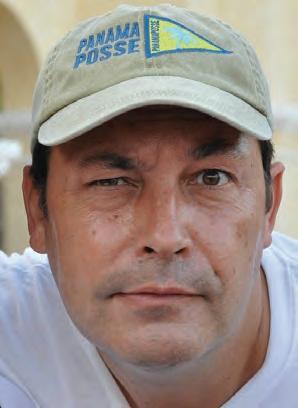




Clean. Dry. Reliable. This defines Kyle and Lasdrop. In 1975 Lasdrop developed the first dripless shaft seal for sailing vessels and in 2020 industry veteran Kyle Mosher took over the 45+ year old company. Lasdrop Shaft Seals is the only manufacturer of BOTH mechanical face seals, and lip seals.
Wherever there is rum, there will be Dietmar. Well, almost everywhere. As the man behind the “set your own schedule” rally which sails between California and the East Coast via the Panama Canal in Central American, Pacific and Western Caribbean waters, Dietmar will always welcome you with a smile, handshake and shot glass.
180 Latitudes & Attitudes | #42 Spring 2023
Tom Peelen –Forespar Products
Stevie & Steve Reeves – Bacon Sails & Marine Supply
Travis Blain –Mack Sails
Greg Kutson –Mantus Marine
Kyle Mosher –Lasdrop
Dietmar Petutschnig – Panama Posse










































































































 By Bob Bitchin
By Bob Bitchin












 By Jessica Zevalkink-Yates
By Jessica Zevalkink-Yates
























 By Capt. Mike Worley
By Capt. Mike Worley





















































 By Kevin Spellman - Sunset at Tyrell Bay, Grenada
By Kevin Spellman - Sunset at Tyrell Bay, Grenada




 After the storm - Oxford MD, Campbell’s Boatyard
By Jim - Selby Bay Marina, Edgewater, MD. Moon in the Morning
After the storm - Oxford MD, Campbell’s Boatyard
By Jim - Selby Bay Marina, Edgewater, MD. Moon in the Morning

 By Tom - Cow Wreck beach, Anegada, BVI’s
By Tom - Cow Wreck beach, Anegada, BVI’s









 By Brian
By Brian









 By Mike Gun
By Carol Doskocl -
By Mike Gun
By Carol Doskocl -





 By Peter Isern
By Chris StokesIn the Bahamas
By David Stone - of Lily (4) and Belle (6) on a hot motor south to Rock Hall, MD on the Chesapeake Bay.
Mike
- Harrison sailing on Casco Bay, Maine
By MaryLyra on s/v Tipsy Gypsy
By Peter Isern
By Chris StokesIn the Bahamas
By David Stone - of Lily (4) and Belle (6) on a hot motor south to Rock Hall, MD on the Chesapeake Bay.
Mike
- Harrison sailing on Casco Bay, Maine
By MaryLyra on s/v Tipsy Gypsy
 By Karl Fisher
By Karl Fisher
 By JC
By JC
















 By Zuzana Prochazka
By Zuzana Prochazka



 By Glenn Adams, GCA Automated Watermakers (www.GCAAW.com)
By Glenn Adams, GCA Automated Watermakers (www.GCAAW.com)

















 By Teri Miller
By Teri Miller
























 By David Shih
By David Shih





























 By Marissa Neely
By Marissa Neely






















 By Capt. James F. Cash
By Capt. James F. Cash


















































































































